

Planning a Trip to Japan: DOs & DON’Ts (2024)
This page contains affiliate links. Please read our disclosure for more info.
This post is based on an amazing guide our friend Amy Dunn-Cham compiled us full of her Japan tips on how to plan a trip to Japan years ago. We have since visited Japan five times and update this post regularly with what we’ve learnt.
Ah Japan, irasshaimase! Welcome to the land where everything just works. The land of convenience, the land of delicious food, paradox, naked strangers, and where respect permeates through every part of society and culture.
In Japan the food can be described as clean and minimalist, but never simple, which probably sums up Japan as a whole. It’s a place that both lives up to, and out does, any expectation you have upon arrival.
Uh-huh, they have the fastest, sleekest, most efficient trains (ever!), but they still have paper posters pegged up on their Tokyo subway. Yeah, they have amazing futuristic architecture, but they also have countless traditional wooden buildings in amongst it all.
Yes, they have the busiest people crossing in the world (Shibuya), but at no point is it ever chaotic, no need for anyone to bang on a cab screaming, “Hey, I’m walking here!”.
Yes, they have scores of scarily trendy, funkily clad young people who like to cosplay on weekends, but they also have evening family outings to sentos (public bathhouses).
In this Japan travel guide, we’ll help you make sense of it all and share our best tips for planning a trip to Japan.

2024 Update: No Japan Travel Restrictions
When to visit japan, how long to spend in japan, video: best japan destinations, before your japan trip, general dos and don’ts in japan, what to book in advance for a japan trip, top japan destinations, more japan tips.
Japan reopened to independent international tourists on 11 October 2022.
Remaining restrictions were dropped on 29 April 2023, so visitors no longer need to show proof of vaccination or a negative Covid test.
The government also dropped the indoor masking recommendation. Many Japanese people still wear masks (on our late 2023 trip, I’d say about 30-40% of people wore them), but you are unlikely to be required to.
With the yen at the lowest it has been for decades, now is a great time to travel to Japan.
Health care is expensive in Japan, so I highly recommend purchasing travel insurance that covers Covid-19 medical expenses. SafetyWing Insurance is an excellent budget option, especially for travellers on longer trips and families (as children under 10 are free). It’s available worldwide.
If you want a more comprehensive policy with cancellation cover, check out Heymondo travel insurance , which we used on our last Japan trip (it came in handy when Simon broke his foot!). It’s also available worldwide and offers 5% off for our readers.

Back to Contents
We’ve visited Japan in all four seasons and don’t think there’s a bad time to go.
In winter , it’s chilly and gardens are a bit bare, but crowds are lower, you’ll find great deals on accommodation, and you’ll really appreciate those onsens (hot springs). You can also go skiing or snowboarding and have the best chance of seeing snow-capped Mount Fuji.
In summer , it is steaming hot and humid (and June is the rainiest month), but there are fewer foreign tourists around and lots of local festivals to enjoy. It’s also the best time to visit the many beaches and the only time you can climb Mount Fuji.
The most popular and best overall times to visit Japan are spring (March-April) and autumn (October – early December). This is when you can enjoy the gorgeous cherry blossoms (sakura) or autumn leaves (koyo). It’s more crowded and expensive, but the weather can be ideal and it is just stunning.
See our guide to visiting the Kyoto cherry blossoms for more information on the popular sakura season.
On our recent autumn trip, we had warm weather (up to 77ºF/25ºC) with very little rain from October until mid-November, when the temperature in Kyoto suddenly plummeted ahead of the leaves turning colour.

Shoulder seasons May and late-September/early October are also good times to visit with warm weather and lower crowds.
Two times of year I would avoid for a vacation to Japan are:
Golden Week in early May – In 2024, Golden Week is from 27 April – 6 May. This is a series of national holidays so many Japanese travel domestically, trains and hotels book up, and popular spots will be extra crowded.
New Year – Late December to early January. This is also a busy time with local travellers and most businesses close for up to four days.
How long do you need in Japan? As long as possible!
There is so much to see—we have spent months in the country and still have a long bucket list.
For first time visitors, I recommend visiting Japan for two weeks. This is enough time to see some highlights—Tokyo, Kyoto, and one or two smaller destinations. See our Japan two week itinerary for suggestions.
A week is the minimum time I recommend for a Japan trip. For a more relaxed Japan vacation, spend the whole week in Tokyo or Kyoto and take day trips. Or if you don’t mind rushing about, visit both major cities with an overnight stop on the way (such as Hakone).
Read our guide on the best places to visit in Japan to decide where interests you most and come up with an itinerary. You’ll find some suggestions at the end of this guide.
Watch this video for Japan trip ideas.
- Check if you need a visa . Visa-free travel is possible for citizens of 68 countries for stays of up to 90 days (including US, UK, Canada, Australia and the EU). Do have a return or onward flight out of the country as they may grill you upon arrival. It was the nicest immigration interrogation we’ve ever had, though.
- Purchase your Japanese Rail Pass exchange order before you travel to Japan (if needed, more on that later).
- Learn some Japanese —numbers are especially useful! While you can get by with Google Translate, it’s much more fun to learn some Japanese (which isn’t as hard as you might think) and locals really appreciate it. We are currently learning with the comprehensive Rocket Japanese online course , which includes audio lessons with natural dialogue, grammar and culture tips, and voice recognition to test your pronunciation. It’s a little pricey but unlike most subscription-based courses, you get lifetime access and discounts are often available.
- Get an International Driving Permit . You’ll need this for go-karting on the real Tokyo roads dressed as your favourite character. Insanity but one of the most fun things we’ve done in Japan.
- Arrange travel insurance. Healthcare is expensive in Japan, so make sure you are covered in case the worst happens. We’ve used and recommend Heymondo and SafetyWing (both available worldwide).

- Apply for a Mastercard credit or debit card – If you don’t already have one. Some Japanese websites don’t work with Visa so it’s good to have a backup. We used a Starling Bank debit card (UK only), which has free international transactions and cash withdrawals.
- Walk as much as possible – You will walk a lot in Japan cities so it helps to get some training in beforehand (and wear in some comfy shoes).
- Practice using chopsticks – You’ll need them to eat in almost every restaurant (curry is the exception as it’s eaten with a spoon). Getting used to sitting on the floor is a good idea for some restaurants and experiences too.

- Buy a pre-paid transport IC card for local trains, metro and buses. You just tap on and off and don’t have to worry about buying a ticket. In Kyoto and Osaka, it’ll be an ICOCA card, and in Tokyo, it’s a Suica or Pasmo, but you can use any of the cards all over the country. Physical cards are currently in short supply (due to a chip shortage), so I recommend adding Suica to Apple Wallet on your phone or watch. Visa doesn’t work as a payment method so use Apple Pay, Mastercard, or American Express to top up. We just tapped on transport with our Apple watch and didn’t even need to open the app. Unfortunately, this doesn’t work for Android phones bought outside Japan.
- Set up an Airalo eSIM – You’ll want affordable data on your phone as having access to maps and Google Translate makes life so much easier. A digital eSIM is simple to set up before you arrive and prices at Airalo start at just US$4.50. We used it on our last Japan trip and it worked great. If your phone doesn’t support eSIMs, you can buy a physical Umobile SIM from a vending machine at Tokyo Narita Airport (make sure your phone is unlocked).
- Sign up to the Timeout Tokyo newsletter – To learn about special events during your stay.

- Buy tickets for Ghibli Museum and Ghibli Park – If you are a Studio Ghibli fan, you might want to visit the museum in Tokyo or new park in Nagoya. It’s essential to book ahead. See below for details.
- Research what else to book in advance – Many attractions and restaurants in Japan require advance booking so decide what’s important to you (ideally at least three months ahead) and set reminders for when bookings are available. At the end of this post you can see the timescale for what we booked for our latest trip.

- Consider a Japan Rail Pass . The luxury of shinkansen (bullet train) hopping is exhilarating. No need to book seats in advance, just choose a train, wave your pass and hop on. These passes are only available to foreigners and you can order online from JRailPass.com . Read our guide to whether a Japan Rail Pass is worth it for everything you need to know after the price increase in October 2023 (it’s still worth it for some trips if you are travelling a lot).

- Bow if you are being bowed to . If you can manage it too, don’t turn your back upon exit. Don’t overdo it though or you’ll be a total gaijin , no need to bow to the supermarket checkout person!
- Pre-book accommodation. Wise anyway as the more affordable accommodation fills up fast, but also in line with the whole respect thing, Japanese people like to be prepared for your arrival. So don’t just randomly rock up at a ryokan for the night! Booking.com is our favourite site for finding hotels and guesthouses, and we also use AirBnb and Vrbo to find apartments in the big cities (which are often cheaper than hotels). See our Japan accommodation guide for recommendations.

- Go onsening! You might want to skip this in summer as hot doesn’t even come close to describing the water temperatures! But soaking in a hot spring is one of the most typical things to do in Japan and is ultra relaxing once you get over your fears of public nudity (yep, no clothes allowed!). Best of all, visit an onsen town where you can onsen-hop dressed in a kimono. See our Kinosaki Onsen travel guide for details on this lovely onsen town as well as hot spring etiquette.

- Stay in a ryokan (traditional inn). Pricey but worth it for at least a night or two for the unique experience and the amazing meals that are often included in the room rates (and many can cater for vegetarians/vegans). Our favourite ryokan is Tsukihitei in Nara, so traditional and with a magical forest setting. We also loved our private bath overlooking the scarlet maple trees at Nanzenji Ryokan Yachiyo in Kyoto (book a suite not a standard room). More budget-friendly options are Hotel Musashiya in Hakone, where our room and onsen had a view of Lake Ashi, and Morizuya Ryokan in Kinosaki Onsen, which is perfect for onsen-hopping.
- Stay in a traditional tatami mat room. If you can’t stay in a ryokan, a much cheaper way to stay in one is a traditional room in K’s House hostels—they have branches in Hakone (with onsen), Kyoto , Izu Peninsula (in a 100-year-old building with onsen), and all over the country. We never had a bad experience with this hostel chain in our budget travel days.

- Appreciate the zen-like calm on all modes of transport – no need for quiet only carriages here! Just remember that it’s rude to speak on your phone on trains in Japan.
- Use Google Translate . Many people don’t speak English, so the Google Translate app is helpful for communicating. Write what you want to say in English then show the Japanese translation to the person. Even more impressive is the feature to translate images—point your camera at a sign, menu, or food label and it translates the text instantly. It’s not perfect but when it works, it’s brilliant.
- Translate websites too – Many Japanese websites (especially restaurants) are only in Japanese so using Chrome or Safari, refresh the page and select the English option at the top. On Safari on my iPhone, I tend to select a block of text and tap translate from the popup.
- See some sumo . If you’re lucky enough to be in the country when one of the sumo tournaments is on, go! The pre/ post game rituals are fascinating to watch. If you aren’t there during a tournament, you can see a practice session at a sumo stable in Tokyo . It was one of our favourite experiences in Japan—it felt like such an honour to see these huge, impressive sumotori training so close.
- Expect bursts of freakery!

- Get your paper fortune at a Japanese Buddhist temple. Okay, we cheated and got an English one at the Golden Pavilion (see our guide on the best things do to in Kyoto ), but what the hell! You can also get one at the gorgeous Sensoji Temple in Tokyo .
- Love the Japanese for their never-ending capacity to help you out , and they won’t stop until they do!
- Read these Japan books before you visit for a greater understanding of this weird and wonderful culture.
- Have some sushi – Sushi is the essence of Japan, plus sushi-train/ sushi stand up bars are so much fun watching the chefs take your order, and all shout in unison, “samon!” or “tamago!” etc. Vegetarian sushi isn’t very common, but we did find some—see our vegetarian Japanese food guide .

- Appreciate the plastic food models as works of art!
- Pack slip-on shoes. You’ll be taking your shoes on and off a lot in temples and restaurants. I wear the comfy ballet flats Allbirds Tree Breezers in warmer weather and Allbirds Wool Runner sneakers (for men and women) in cooler weather—they keep your feet cosy but can be worn without socks and easily slipped off without untying the laces. See my detailed Allbirds review .
- Shop at the 100 Yen shops. Like pound shops BUT BETTER! Daiso is a great one.
- Play in the arcades dotted around cities, the taiko drum game rocks!
- Make use of the many vending machines EVERYWHERE . You will never go thirsty in Japan that’s for sure. You can even get hot coffee…in a can! (Simon’s saviour when we had early morning trains to catch.) In fact, you can get friggin’ anything from vending machines from cheap 100 yen sake (yuk!) to hot chips (not surprisingly we did not try!) and SIM cards. In Tokyo you can use your Suica transport card to pay.
- Press random buttons on the panel next to you on the loo . It will make you giggle ;o)! Also, if it’s cold then appreciate the absolute miracle of heated toilet seats.
- Fall in love with seeing toriis (shrine gates) everywhere , especially small red ones in rows behind each other. Fushimi Inari Shrine in Kyoto is our favourite (but go early as it’s popular).
- Love and appreciate the beautiful presentation of absolutely everything from the amazing architecture to the way bento boxes are wrapped in a napkin tied in a knot just so, to amazing manhole covers!
- Pack light. It will be much easier to hop on and off trains while travelling around Japan if you pack light, and hotels have limited storage space for luggage. Best of all, travel with just carry-on luggage . The Away Bigger Carry-On was perfect for our trip and fit overhead in trains.

- Consider luggage shipping – We haven’t used this yet, but if you have large luggage, it’s common to send it between hotels (it takes a day, so pack essentials in an overnight bag).
- Withdraw cash from 7-11 ATMs. They are the most reliable no-fee option for international cards and can be found everywhere. Make sure you always have cash on hand as many places don’t accept credit cards (although this is improving). Note that some 7-11 ATMs in popular spots (the airport, Gion), do now charge, so try to withdraw in less touristy areas.
- Use Navitime to check train times and prices (and to work out if a Japan Rail Pass is worth it for your itinerary ).
- Visit BIC Camera if you need any kind of electronics. These massive stores have everything you could imagine. Take your passport if you are making a large purchase (over 5000 yen) and get it tax free. I bought a camera here and ended up getting lots of extra discounts and free accessories. It’s also a good place to buy a SIM card if you didn’t pick one up at the airport.
DON’T:
- Rent a car – For most visitors the best way to travel Japan is by train. Elsewhere we love road trips, but renting a car in Japan is just not worth the hassle unless you are travelling far off the beaten track.
- Open the door if taking a taxi. They are either automated or the driver will open it for you. It’s also a good idea to have your destination’s address written down in Japanese to show the driver as most don’t speak English.
- Feel bad if you need to take a break from Japanese food – Japan isn’t always an easy destination and indulging in a comfort meal can be restorative (we’ve had some excellent pizza in Japan).

- Forget to check opening hours – Japanese restaurants aren’t usually open all day and both restaurants and attractions usually have a last order/entry 30 to 60 minutes before closing.
- Go whizzing around the country too much. It can save energy to base yourself in one place and take day trips as we did in Kyoto and Okayama .
- Wear holey socks. You’ll only be embarrassing yourself when you take your shoes on/ off constantly!
- Go into an onsen without washing first , that’s just dirty dude! Also, don’t go into the bathing area with a towel wrapped around you, you’ll just look stupid. Embrace the nudity! Everyone’s naked so no-one cares. My Kinosaki Onsen guide has more etiquette tips for newbies.

Japan is a popular destination and many hotels, restaurants, and attractions book up in advance. While you can still have a wonderful last-minute trip, it’s worth researching what you’d like to do months in advance to see what needs reservations.
On our most recent trip to Japan (in the busy autumn October/November season), this is what we booked ahead:
5 Months Before
- Flights – This is personal preference and earlier or later could also work. Tokyo Narita (NRT), Tokyo Haneda (HND), or Kansai International Airport in Osaka (KIX) are all good options to fly in to.
- Accommodation – Ryokans and hotels in smaller towns are most important to book ahead. Some hotels don’t take bookings more than 3 or 6 months in advance, though. We used Booking.com and almost all had free cancellation.
4 Months Before
- Tokyo DisneySea Hotel MiraCosta – Our favourite place to stay in Japan is right inside the best Disney park in the world. Rooms go on sale 4 months in advance at 11am JST and sell out in minutes, so it’s essential to do some practice runs.
3 Months Before
- Harry Potter Studio Tour, Tokyo – We booked 7 weeks in advance and only got an afternoon slot, so earlier is a good idea. Check Klook and the Warner Bros Studio Tour website as they have different availability.
2 Months Before
- Ghibli Park , Nagoya – Tickets go on sale on the 10th of the month at 2pm JST for 2 months later (it changed recently from 3 months). So May tickets will be on sale on 10 March. These sell out quickly, so be prepared.
- Teamlab Planets , Tokyo – Book early if you want a specific time for this interactive digital art exhibition (we wanted the first slot). We booked on Get Your Guide . The new TeamLab Borderless is also selling out fast (tickets available on Klook or direct ).
- Some Restaurants – We booked Monk in Kyoto exactly 2 months in advance at 12pm JST (after five attempts) and Shigetsu in Kyoto (as we were visiting during peak autumn colour). Creating a Tablecheck account is a good idea as quite a few restaurants use it for bookings.
- Saihoji (Moss Temple) , Kyoto – It’s expensive and might not be a priority with limited time in Kyoto, but it’s our favourite temple. Reservations open 2 months in advance.
- Universal Studios Japan Express Passes – These are essential to skip the lines at this very busy park in Osaka, and they do sell out. We bought the Express Pass 7 – Backdrop and Spiderman on Klook (much easier than the official site which is in Japanese only). We bought our USJ entrance tickets on Klook at the same time. See our Universal Studios Japan guide for more tips.

1 Month Before
- Ghibli Museum , Tokyo – Available at 10am JST on the 10th of each month for the following month.
- Shibuya Sky , Tokyo – Bookings open 4 weeks in advance at midnight Japan time. Book fairly soon after that to get the peak slot (one hour before sunset).
- Tours – I booked a sumo stable visit (highly recommended) and Shinjuku bar hopping tour in Tokyo. Go-karting is another fun option we’ve done before. I used Get Your Guide for most tours. Klook is a good option for tickets and attractions too.
- Tea Ceremony Ju-an , Kyoto – Learn the traditions of tea in a temple. One of the highlights of our trip.
- Sakurai Tea Experience , Tokyo – If you love green tea, don’t miss the tea tasting at this modern tea room.
- More Restaurants – I booked Saido in Tokyo, Uzu Vegan Ramen in Kyoto (reservations essential), and Ristorante di Canaletto at DisneySea (one month in advance at 10am JST exactly).
- Tokyo DisneySea and Disneyland tickets – I booked on Klook. The parks probably won’t sell out, but we didn’t want to take the chance.
- Japan Rail Pass – If you decide to get one, allow plenty of time for your exchange order to arrive by post, just in case (you activate it on arrival).
2 Weeks Before
- Shinkansen Train Seat Reservations – We used the SmartEx website , which can be difficult to set up (use a Mastercard and keep trying to authenticate the payment method) but very handy. When booking a train from Tokyo to Kyoto, choose a seat on the right side of the train for Mt Fuji views (if clear). If you have large suitcases, you’ll also need to make an oversized baggage reservation .
- Airport Taxi Pickup – From Narita Airport we get the Narita Express train, but from Haneda Airport (which is closer to central Tokyo), we prefer a taxi for ease. We booked this Haneda airport pickup on Klook .
- More Tours and Restaurants – Book any more priorities as you finalise your itinerary.

Japan has so much to offer but here are a few places to get you started.
- Tokyo – The best of modern Japan. This huge city has incredible food, diverse neighbourhoods, and some unique experiences. Try these cool things to do in Tokyo and enjoy the best vegetarian restaurants in Tokyo .
- Kyoto – The best of traditional Japan with many stunning temples to explore . Read the best things to do in Kyoto .
- Takayama – A smaller, quieter alternative for traditional Japan with a beautiful historic centre of preserved wooden houses.
- Hakone – For the chance to see Mount Fuji, mountain scenery, lakes, onsens, and fun transport options (cable cars and pirate ships!).
- Kawaguchiko – Even better views of Mount Fuji at Lake Kawaguchiko .
- Nikko – Stunning temples in the forest. Could be visited as a day trip from Tokyo.
- Hiroshima – Visit the moving peace memorial that commemorates the atomic bombing and don’t miss nearby Miyajima Island.
See our Japan 2 Week Itinerary for a detailed guide to visiting many of these places including things to do, transport, and where to stay and eat.
Or our guide to the best places to go in Japan has more ideas.
Japan Tips, Direct to your Inbox!
Thank you for subscribing! You should receive an email from us very soon. Click on the link in the email to confirm your subscription.
- Is a Japan Rail Pass Worth It?
- 54 Best Things to Do in Japan for an Unforgettable Trip
- Where to Stay in Japan: A Guide to Accommodation Options
- 20 Fascinating Books to Read Before Visiting Japan
- 16 Unmissable Places to Visit in Japan
- Vegetarian Survival Guide to Japan
If you enjoyed this post, pin it!

166 Comments
Thank you for the lovely Japan Blogs – it is making our travel planning fun! It would be really helpful to understand the areas to stay in within the cities, especially first time travelers to Japan.
Reply ↓
Thanks JK! Our Kyoto guide has tips on the best area to stay (Gion or downtown) and in Tokyo, we recommend Shinjuku for first time visitors. Enjoy Japan!
Wow, an amazing blog, Erin. This is helping us so much plan our trip. It is great to see you updating it regularly too. It’s becoming a daily read.
Kind regards,
Thanks so much for this post! As is often the case I am following you around the world and now I’m going to Japan. Look forward to reading everything you’ve written on it!
Good to hear you are going to Japan, Ruth! I hope you enjoy it as much as we always do!
We are a very active retired couple and love exploring different cultures, sights, and exploring nature. We are planning on going to Japan for the first time for 3 -4 weeks, around the third week or so in Sept to mid October or later. We will travel with just carry on luggage and backpacks. We love touring on our own, or booking individual tours at the different places. We are open to basing in Tokyo, Kyoto, Hiroshima(?) plus other places and doing day trips from these places. What would be a good itinerary for our 21+ day trip? Thanks so much! We love your website! Bunny
Hi, I lost my comment somewhere on your blog 😅 So, me and my partner are going to Japan for 4-6 weeks in sept/october. We want to travel in a slow pace and want to visit Tokyo, Kyoto, hiking around Kiso Valley (and Kumano Kodo?), Nagano, Kanazawa? We also want to explore some nice nature, visit onsen, sleep at a roykan etc. Hokkaido would be cool but i don’t know if we will have time with that. Do you have any tips where we must go? I think our plan is to be at least 7 days each in Kyoto and Tokyo, we want to stay for minimum 2 nights at each place. Would you recommend to start in Tokyo? Is it worth to start a week in a busy town with jetlag? Should we go somewhere else (where?) for a nice start on the vacation?
Thank you! /Johanna
Hi Johanna!
I’m planning a solo trip from ~May 21-June 21, but i’m worried i’ll hit the rainy season and humidity. What to you advise? I’m limited to May 21st as my earliest trip start date due to school!
I think it makes sense to start with Tokyo if that’s where you are flying in to. That way you don’t have to worry about travelling elsewhere and you have enough time there that you can plan for the first few days to be pretty relaxed – wander some neighbourhoods, eat etc.
Sounds like you have plenty of time to do everything you want. You could easily use that time in central Japan, but you could add in Hokkaido if you really wanted (we still haven’t made it there). Enjoy!
Hi Erin, is it advisable to visit Lake Kawaguchiko in November? And, do you think it is possible to do a day trip to Lake Kawaguchiko having Tokyo as the base?
We haven’t been in November but we definitely would. You will likely see the autumn colours too (generally peak around mid-Nov), which would be beautiful.
It will likely be colder than Tokyo, but as long as you are prepared with warm clothes it should be enjoyable.
And yes, it is possible as a day trip from Tokyo – many people go by train or on bus tours. Just be aware that Mt Fuji is often hidden in cloud, so if you stay overnight you increase your chances to see it. But you could also try to choose a clear day for your day trip. Enjoy!
Our Lake Kawaguchiko travel guide has more details.
Thank you for creating this! I’m making my way through reading all of your posts. I will be visiting Japan for 14 days for the first weeks in April with my husband, a 7 year old, 10 year old and my two of my adult siblings. We’ll be a big group but I’m very excited as this is my first time and have always dreamed of going. Wondering if you have any advice for the younger kids or any kid entertainment? Thanks again!
Travelling with kids isn’t our area of expertise so I don’t have any specific recommendations except for Tokyo Disney, which we love. Tokyo DisneySea is our favourite park—it’s the only one in the world and has plenty to offer for kids and adults. Enjoy!
Absolutely love this perspective on travel! It beautifully captures the essence of what it means to explore the world. Travel isn’t just about ticking off destinations; it’s about slowing down, immersing yourself in new cultures, savoring moments, and absorbing the rich tapestry of life that the world has to offer. 🌍✈️🌏
Thank you so much for this! I have started notes and saved the page so that I can come back and check out all the links. :) I am wanting to take my 14 (would be 15 then) daughter alone (we do girl’s trips every year without dad) to Japan. She loves all things Cherry Blossoms! We try and do her spring break time (next year will be the first week of April), but I am concerned about that being too short of time period. Could we do it? If that is all the time you had, would you have a ‘base in Tokyo and then do some excursions from there (which is how we like to travel)? I am also worried about the language barrier and us being able to navigate since sometimes Google translate will not work. Thanks again!
Hi Jennifer, With one week I would focus on Kyoto, which is a better location for cherry blossoms and also has so many beautiful temples and gardens. It’s more traditional Japan (although there is a modern part too). Ideally, you’d fly into Kansai Airport which is closest.
If you have to fly into Tokyo, you could spend a few nights there before taking the shinkansen train to Kyoto (the quickest one is just over 2 hours).
If you really want to see the more modern side of Japan or don’t want to take the train, then Tokyo would be a great base. You can still see plenty of cherry blossoms there.
We don’t speak Japanese (although we are trying to learn this year) and have always managed. The Japanese are very helpful and will always try to help you out, even with a language barrier. And there are an increasing number of signs in English. Just make sure you have data on your phone as Google Translate and Maps are super helpful (you can download Japanese offline in Translate too).
Be sure to book accommodation far in advance for the cherry blossom season (ideally 6 months+).
Enjoy Japan! Erin
Hi Erin, My husband & I are travelling to Japan in August as he is competing in the world masters swimming competition. We have to be in Fukuoka for the competition and then he have 9 days to explore the country ending up in Tokyo for our flight home. Could you advise what we should do at this time of year. Do you think it is sensible to base ourselves in Kyoto and then take daily trips from there using the JR Pass, (do you recommend we get the Green pass). Your advise would be greatly appreciated. Thanking you in advance.Pia
Hi Pia, that’s exciting!
If you don’t want to move around too much then I do think Kyoto is a great base. There’s so much to do (including festivals in August) and lots of possible day trips. You could finish up with a couple of nights in Tokyo.
If you want to add some extra places you could stop in Hiroshima on the way to Kyoto for the peace memorial and nearby Miyajima Island. It’s a quick journey on the bullet train from Fukuoka.
You’ll need to work out your route first to see whether a rail pass is worth it. It probably won’t be worth it for day trips but could work out worthwhile including the shinkansen up from Fukuoka and on to Tokyo.
We’ve never used a green pass but if you want a bit more space you could consider it.
Also bear in mind that around the Obon holiday (13-16 August) the trains will be busier than usual so book your seat in advance.
Enjoy Japan!
Hi Erin – great post, thanks for your comprehensive insight! My partner and I are heading to Tokyo for NYE and planning on heading from there to Kyoto around the 2nd for a couple of nights. I understand that Japan can be very quiet during the first week of January. Do you have any experience travelling at this time? If so, do you have any suggestions about how to make the most of the trip while the country is a bit quieter? Thanks in advance :)
Hi Sarah, We haven’t been to Japan at New Year. The important thing to bear in mind is that many businesses will be closed on some or all days between 29 Dec and 4 Jan. So make sure you look at the hours of any restaurants and attractions you want to visit and work around them.
I think Kyoto will be lovely at a quieter time of year especially as it does get so busy. There are so many temples and shrines to explore and they stay open over NY. Enjoy!
Wonderful website and tips. I know one of your dont´s is rent a car, but we are hoping to visit Shirakawa-go, Gokayama and Takayama, and have found no easy way to get there from Tokyo or Kyoto on train. Do you have any recommendation on how to do that?
Many many thanks¡
Hi Natalia. You can get to Takayama from Kyoto or Tokyo easily by changing trains in Nagoya. The journey from Nagoya to Takayama is beautiful.
The other villages can be reached by bus from Takayama (Shirakawa-go is easiest), but yes, a car would give you more flexibility to explore the countryside around here.
Maybe look into renting a car for a few days in Takayama? Just remember you’ll need an international driving licence, which you’ll need to get in your home country.
While a car could be useful in the countryside, I wouldn’t want to drive in the cities and the train between cities is probably quicker.
I’ve written a bit about Takayama in our 2 week itinerary: https://www.neverendingvoyage.com/japan-2-week-itinerary/
Have a wonderful trip to Japan! Erin
Hello Enrin, your tips makes me very enthousiatic to plan a 4week trip to Japan. Is that a good way to tour? (Will be half september-half oktober).
forgot to say ;-) we plan to travel with a campervan: is that a good way to tour?
That’s a great time to visit and a nice amount of time to explore. I don’t think a campervan or any rental car is the best way to travel though. Driving (and finding parking) in the cities is a challenge and it’s much easier to travel by train.
A campervan would only be advisable if you want to focus on rural areas like Hokkaido.
Remember you’ll need an international driving licence, which you’ll need to get in your home country.
Hello Great Blog. full of advices How do you suggest to travel the “alps” from Kanazawa that one can reach by train to takayama and around ? would that be the place where you rent a car?
You can visit places like Kamikochi by bus from Takayama so a car isn’t essential.
Hi Erin, would like to ask is hiring tour guide better or do it yourself to see all nice place in Japan?
It depends how you prefer to travel. I definitely think it’s possible to travel by yourself. A compromise might be to hire a guide for a day (or join a tour) in Kyoto and/or Tokyo.
Good Day Erin. Just doing beginning research for our yearly trip this year, and we are considering Japan. Your excellent article is the first I started with. We like to spend minimum of 2 weeks, usually longer at our destination. You suggest that using public transportation throughout the country and not to rent a car. My husand and I are seniors. My husband has difficulty (pain) after walking a short distance (100 yards). Would this destination be a wise choice for us? Before going further in my research an answer to this question is most appreciated. Regards
Hi Diane, yes, trains are definitely the best way to visit Japan’s cities. You could hire a private driver for day tours within places like Kyoto, though, which could minimise the need to walk as much when sightseeing.
It would probably be best to minimise the places you visit (such as Tokyo and Kyoto or even just Kyoto) as train stations are quite large and do involve walking. If you fly into Kansai airport you could take a taxi to Kyoto and see a lot based there.
Perhaps renting a wheelchair is worth considering. There is also an overnight luggage delivery service where you can send your bags between hotels to make train travel easier.
As we don’t have any experience of travelling Japan with mobility issues, I would look for advice from those who have. Here’s one post that might be useful: https://www.japan-guide.com/forum/quereadisplay.html?0+132386
Diane: As someone who recently travelled to Japan having had double knee replacement surgery less than 12 months previously, I can offer a little insight! While I agree that travelling by train is a fantastic way to get around Japan (I covered a LOT of miles!) you should be aware that not all train stations have lifts or escalators. Many stations in Tokyo have quite long flights of stairs which can be a challenge to anyone less able or in pain, especially when you have luggage. Even when there is a lift, it’s typically right at the end of the platform (often the “wrong” end for where you want to be), so I would do some research before deciding how much urban train travel you will do; it’s less of an issue when taking the shinkansen to cover a reasonable distance. I much prefer trains to coaches, but I did use buses in places and that was fine. On the topic of car hire, I probably wouldn’t bother myself but I know someone who travels widely across Japan with a couple of kids and she swears by it, not least because they can easily reach locations that would otherwise be a hassle to get to. She doesn’t use one in the cities though. Lastly, I don’t think you should be put off going to Japan – it’s an amazing country and I found everyone to be unfailingly helpful. No problem is insurmountable!
Thank you so much for sharing your experience, Sue.
Hello Erin,
Would you recommend visiting Jaoan with a 1.5 year old? Do the onsens have babysitters?
We don’t have any experience travelling with kids but our friends took their toddler and loved it. The onsens don’t have babysitters as far as I know.
Thank so much for all the amazing info! Heading to Japan in June for two weeks with my daughter. It’s especially wonderful to know there are some great vegan/vegetarian options.
Hi Erin… I stumbled onto your website as I’ve started looking into planning for a trip in 2024 for my daughter’s High school Senior trip. Is Mid June a good time weather wise? Super hot? Also, are there food/restaurants that are gluten free for Celiacs? You mentioned beaches are those places more expensive than the cities? I will check out all your links too. TY for all the info, this will truly help.
It will be hot but if that’s the only time you can go, I wouldn’t let it stop you and it’s cooler than July and August.
I don’t have any experience being gluten free in Japan but our friend has written this guide: https://www.legalnomads.com/gluten-free/japan/
Beaches shouldn’t be more expensive than the cities but it depends where you go. We haven’t spent much time at the beaches.
Have a wonderful trip!
hi Erin, lovely website with a lot of good information. Do you list of places to visit / see – for a 4 week trip. We wanted to do the North part of the country as well. thanks for any tips and help. We are vegetarians as well but saw that you all managed to get delicious looking vegetarian food : ).
We haven’t actually made it very far north as there’s always so much to do in the central part. See our guide to the best places to visit in Japan for our favourite places: https://www.neverendingvoyage.com/best-places-to-visit-in-japan/
And yes, vegetarian food in Japan is great if you plan in advance (use the Happy Cow app).
Thanks for the info Erin. Cultural.differences are amusing at least.
Thank you so much for this guide Erin! It’s really helpful. I’m planning a 2-3 week trip to Japan around September. However, I’ve read and seen a lot of people saying to avoid this time of year due to typhoon season. Would you recommend visiting Japan around this time despite the typhoons that might hit?
We’ve been in September and enjoyed it. We did get some rain but nothing that disrupted our trip. I wouldn’t let it stop you visiting.
Hello Erin! Great information. Thank you! What percentage of small businesses (resturants, clubs, rooms, etc) are open this month (March)? What percentage may be open in May? Should I wait until September to experience Japan? Take care,
Everything should be open now so any month this year is good to visit!
How easy is it to navigate in Tokyo and Kyoto with a group of 8? We’re concerned about everything from attractions to train travel to being able to eat together. This is a trip to celebrate our friends’ 40th birthday and logistics just seem to be overwhelming!
Hi Laurie We’ve only visited Japan as a couple, but I’d say it might be a bit challenging in a big group. Many restaurants are quite small and trains can be crowded (although you can book seats together for the longer trip between Kyoto and Tokyo).
I’m sure it would be possible if you plan in advance (book some restaurants etc) and maybe break into smaller groups for some of the time. Perhaps discuss what everyone definitely wants to do and do those things together, but then have some time doing your own thing.
Good luck with it and enjoy Japan!
I’ll be visiting Japan for 10 days in March! Could you give me a little insight on the paying methods there? How much cash should I bring/have on hand? Do they mostly accept cash or do most places accept credit cards?
Thanks in advance!
Hi Susan When we visited Japan previously we needed cash for most places. We just withdrew from an ATM (the ones at 7-11 were most reliable for foreign cards) when needed so we didn’t exchange any cash in advance. Just make sure you use a card that doesn’t charge international transaction fees (this will depend which country you are from).
But I have heard that since Covid more places accept credit cards and contactless payment methods, so I’m really hoping there’s less of a need for cash now. I would still recommend always having some with you just in case.
Hello . I want to visit Japan with my 13 year old granddaughter in June. I have never been in Japan, but have traveled widely. We plan to visit Kyoto and its environs mostly but want to spend couple days in Tokyo. We do not speak Japanese but will find a way to learn some. We are coming from the US, but my home country is Finland (very Japan friendly :)). We definitely want to get bullet train passes and need to learn about cell phone communication. And we are both into adventure and are looking forward to seeing Japan. Thank you for any advice you can give us.
I plan to visit Japan soon, spiritualy a home I have never been to yet. This is due to my work and my partners need for beach and sun. I’m hoping I can convince her soon to travel with me there. Or it’s over… the Japanese have a way of life with nature that we miss here in the UK….. I have so much respect for the people of Japan. We could learn a thing or two….. I plan to beg konami tsukamoto to mentor me in order I can preserve British trees as she does her native species…… much respect.
Excellent post Erin. You’ve included some great examples of things specific to Japan that it would be great to know in advance for new travellers.
I especially liked your recommendation not to try and cram too much in and whiz around the country. This is a common mistake people make when visiting Japan. Also, not wearing socks with holes in! Once you’ve done this in Japan, you’ll never do it again LOL!
Also, an upvote for your suggestion to visit Takayama – a wonderful place that has a charming historical district that’s like stepping back in time.
Good information given u
I’m doing a project on Japan for school, your posts on Japan were all SUPER helpful- thank you so much!
Glad it helped!
Hello We are looking to travel to Tokyo with out 2 year old in October. We were told that we would need to book travel guides for us to have a visa to enter in Japan. As great as that all sounds, it’s also more then we intend to spend for our trip. How true is needing the visa to enter Japan? Should we do a tour guide for a couple days? If that is allowed.
Hi Vee, As things currently stand, Japan’s borders are still closed to independent travellers. You can only enter the country as part of a package tour that is very restrictive (you can’t do any exploring alone), and, yes, it would be expensive. You would need a guide for the whole trip.
There is a chance borders will reopen by October but really there’s no way of knowing right now. If you decide to go ahead and book in the hope they do reopen, I would make sure everything has free cancellation.
So I’m trying to plan a trip to Japan with my family next year July (4kids) but I keep hearing super expensive, anyways nanny suggestions on where or how to plan n book.? Also my chance do you have any info on Tokyo Disneyland?
yes, japan can be quite expensive but if you plan your stay well and get a rail pass if you’re hopping between cities then you should be able to manage it :)
Should we rent a car or is public transportation the preferred mode of transportation for tourists?
Public transport is easier to deal with. I wouldn’t rent a car unless you are going somewhere remote.
Is it better to custom plan everything? Like book 2-3 week stay and go whichever places we want to visit ourselves or get a package that offer planned trips?
I think it’s best to book everything yourself, but it really depends on how much experience you have travelling and how much time you have to plan it all.
I’m going to Shinjuku. Next year in June this has really helped thank you
This helped so much, im going to Japan in 2 years with my dad (to film a documentary) and this helped so much
Thanks Lillee and have a great trip!
I’d love all the great tips, but should add make sure that you keep eyed out on your train timetable…I’d went to the Takayama Festival and didn’t watch my time. I’d miss my train and got stuck in Nagoya for six half hours trying to get back to Asakusa. (Never again?)…watch your JR Rail or Metro timetable. Japan trains are on point.
Oh no, what a nightmare!
Bravo, your article full of good advice with beautiful pictures. A small precision for foreigners who wish to drive in Japan, they have to translate their driving license at a JAF center.
Now this I call a detailed guide! We are hoping to visit Japan next year so I am gathering all the info I can before I start any serious planning. This post was really helpful!
Thanks Julia! Good luck with your planning!
Hi thanks for sharing this Me & my nephew are planning to visit japan for the 1st time this September can you pls recommend any place to stay or eat and should we do tour or should we go on our own ? We kinda nervous abt the trip .
You should be fine without a tour. The train system is very comfortable and efficient and if you buy a rail pass, you don’t even have to worry about buying tickets for each trip. If you ever get confused, the Japanese are very friendly and will help you out.
Here are a few posts that should give you some ideas on where to go with accommodation and restaurant recommendations: https://www.neverendingvoyage.com/japan-2-week-itinerary/ https://www.neverendingvoyage.com/best-places-to-visit-in-japan/
Good luck and enjoy!
Wonderful and very Insightful Information.
I am a solo traveler from India, planning to travel to Japan for this first time, this summer for about 7-8 nights (June’2020), do you recommend going through some tour company or going on my own. How difficult is managing through Japan, without any knowing any Japaneses. Would you have a recommendation for a tour company.
I think Japan is fairly easy to manage without a tour company. The trains are a great way to travel and with a rail pass you don’t even need to worry about buying a ticket each time.
It helps to buy a local SIM card so you can use Google Translate on your phone. The Japanese are also usually very helpful even if they only speak a little English. We only speak a few words of Japanese are always manage fine.
Hello Erin, this is very useful. Thank you for sharing. Can you suggest us an 8 days itinerary for Japan. We’re visiting Japan for the first time and wish to enjoy the natural beauty and culture.
I would probably just focus on Kyoto and Tokyo in that time, perhaps with some day trips. Enjoy!
Hi! I’ve already been to Japan 2 times in the summer. The first time I visited Tokyo, Kyoto, Nara, Osaka and the Island of Shôdoshima. The second time I browsed a bit more around Tokyo and in the countryside (mainly in the Gunma prefecture – gorgeous landscapes!). I am going back in February. Two places I will visit for sure are Yokohama (first stop) and Sendai (2nd stop). And I and am wondering if there are “musts” I should not miss at that time of year (are snow festivals worth it? Or anything else?) and if it would be worth it to go as far south as Hiroshima? I should have about 12 days for Sendai onwards. I haven’t decided yet if I am going to fly back to Canada out of Tokyo (I could fly out from elsewhere too). Many thanks for your help and for sharing all of this! You’re doing a tremendous job!
Honestly this guide is incredible. I’ve booked marked this as I’m currently planning my things to do for March/April 2020! Any website booking recommendations?
Thanks Alyssa! Spring is such a lovely time in Japan.
Do you mean websites for booking accommodation or tours? We use Booking.com for hotels, Airbnb for apartments (in the big cities like Tokyo), and Voyagin for tours. You might find this post helpful: https://www.neverendingvoyage.com/things-to-do-in-japan/
Good afternoon! I’m planning a 1-month trip to japan in two years and would like to know how much money you think I should save up. I already have the places I wanna visit in mind and would just like some bit of info.
Thank you. :)
That’s a difficult question to answer as it depends so much on your travel style. Do you want to stay in hostels or fancy ryokan or a mix of both? Do you want to do expensive tours and activities or are you happy just wandering? Are you happy with cheap ramen or do you want to try a pricey kaiseki meal?
As a rough idea, on this two week itinerary ( https://www.neverendingvoyage.com/japan-2-week-itinerary/ ) we spent about US$120 per person a day which I’d say is a mid-range budget. There is more info in the itinerary post.
“Well there it is” I shouted as I scrolled through this fantastic information resource. An superb honest, unbiased view and answer to all, yes all, my questions. Except one…. Did you get to visit Okinawa? I desperate to get there… I will have 3-4 weeks….
Thank you so much Brian!
Unfortunately, we haven’t visited Okinawa yet. You’ll have plenty of time to add on a flight down there though. Enjoy Japan!
Awesome post! Thanks for sharing the knowledge and keep up the good work.
Thanks Brian!
Those photos of the dog pulling the mans underpants!?! My child was looking at this with me and now he is scarred for life!
Oh dear! You do find some very strange things in Japan.
I really enjoyed the detail you gave on your trip to Japan! This is 100% helpful as someone planning a trip there for the first time.
Thanks and enjoy Japan!
Hi Erin, thank you for taking the time to put all this great info together. One question I have is in regards to Takayama. Did you like it more than Kanazawa and Shirakawa-go, if you went? We originally planned to stop for a night in each place, however, because of availability in Shirakawa-go, we had to switch up our itinerary a little bit. To adjust, we have considered skipping Takayama and just doing Kanazawa and Shirakawa-go, but this makes me think twice. We also have the option of leaving Tokyo a day early (currently booked for 4 full days there) to keep all 3 places in the line-up. Would love to hear your input! Thank you!
I did like Takayama more than Kanazawa. It’s smaller and cuter and is surrounded by countryside. But then I do prefer small towns to big cities so it depends on your preferences. If you can fit it in I would.
We didn’t visit Shirakawa-go in the end. We were thinking of visiting as a day trip on the way between Takayama and Kanazawa but it would have meant having to use buses rather than take the train which we prefer (and we had a rail pass). If we had had time for a night’s stay there it would have been better I think.
Whatever you choose you’ll have an amazing time though!
Thank you so much for your post! It’s incredibly informative :)
I have one question, I am a woman traveling alone is there anything I need to consider? I have heard that Japan is a safe country, as you have the real-life experience, I’d love to hear what you think!
Thank you for your time, and excellent blog post!
I don’t think you need to worry – Japan is a very safe country. Have a great trip!
Nice list, and pretty accurate- thanks for sharing all the info!
I have to say though- DO try non-Japanese food. Things off the top of my head: bread from the local bakeries, 600¥ cake from fancy department stores, Starbucks (the seasonal things!). Pork buns in Yokohama, Pirozhki in Kamakura… The list is endless. Of course eat all the Japanese food too, because it’s amazing too.
But, I’m also so sorry you had such a bad experience (I’ve been there too)! The size of the nan though? Oh-my-god, right? :)
I do think non-Japanese food has improved a lot in recent years. We had some fantastic Italian food on our last trip (as vegetarians it’s a good backup option for us!).
Which places do you wish you would have stayed longer?
Kyoto (even though we had three weeks there!) and Tokyo.
Great list! It’s made me even more excited to get to Japan now!
I love saying ‘moshi moshi’ – i used to hear it when I worked in an international call centre – it’s so much better than plain old ‘hello’!
Excellent post – interesting, funny and very informative! Currently planning my Japan trip, this was a lot of help :)
Have an amazing trip to Japan!
I am visiting my daughter in Singapore and on the way back to the US my wife and I are visiting Japan (3Jun-8Jun). It is only for 5 days so unfortunately our time there will be very short. Originally I wanted to climb Fuji but the guided trip company I emailed claimed they only had a 1 day guided trips and crampons were required. Although we love to hike this may be too much for such a short trip. If anyone has hiked Fuji in crampons in 1 day I would love to hear about the experience. I still want to see Fuji up close, Kyoto, old family member used to live in Nagoya so would like to stop by there and perhaps Hakone. I just started looking for any special events that take place in the first week of June. Looking forward to this trip and a longer one next time.
Hi there :) Loved your post. I’m from Portugal but I’m a Japan fan. Went to Tokyo las year on March but this time I’m planning on 3 weeks travel around Japan. Can you help me? I already have the places to visti but I need help spliting the time… Oh and if yo see any of the plaes below that arenot woth to visit or less mportant please I’d aprreciate if you tell me: – Chiba – Nikko – Nagano and Matsumoto – Kawagoe – Kanagawa – Mt. Fuji (just planning on going near to have a view – Lake Kawaguchiko) – Magome – Takayama – Nagoya – Kyoto – Nara – Osak – Himeji – Hiroshima – Miyajima – Tokyo (and surroundings)
Thank you so much if you can help me.
Kind regards
Hi guys! I’m planning a trip to Japan in January with mum (I know it’s cold over there, but that’s the only break we’ve got!). We’re planning for a stay for around 8 days, any tips on where to go? I heard that an ideal short trip will consist of arriving at Tokyo and departing at Osaka, is that true? I really don’t know much about Japan so any advice is appreciated!
I would focus on Kyoto and Tokyo and take the train between them. Maybe include a day in Osaka if you can get a flight out from there.
We’ve written lots more about Japan: http://www.neverendingvoyage.com/japan-round-up/
Good advice. I hope to use this on my up come trip.
This is a great post! It is very helpful. I am planning to go to Tokyo this June. I will be staying in Shibuya/Shinjuku area. I don’t know which hotel to stay in and where to go first. Do you have any advice for the first time traveler? Thank you very much! :)
I am planning a trip in March 2015. Reading your website has got me extra excited already
Hi Matthew, I’m planning to travel to Japan at the beginning of March 2015 as well. If you got any great idea, we can discuss. Thanks
I am planning a trip to Kyoto to see where Reiki was started, your insights are great. Thank you
Are you house sitting for a friend or do you use a website to find/sign up for sitting jobs?
We used mindmyhouse.com
Hi guys, great blogs-thank you for sharing it. We’re planning to do a trip in December 2013 14-27/12.
Could you advise which cities we should visit using the shinkansen. We have 14 days to spend with the first 3 days in Tokyo, so it’ll leave us with 11 days in other cities.
I am confused with the the shinkansen map and which one we should take and which cities we can visit that is on the way. We are targetting to return to Tokyo on the last 3 days to do some shopping.
It is basically that 8 days, we need to use to the cities that can be visited using the shinkansen line.
Thank you in advance for your help
Hi Hemmy. I wrote up an itinerary I followed with a one-week JR Pass that might be of some help. It includes other useful tips for planning as well. Find it at:
http://www.lengthytravel.com/saving-on-travel-in-japan-with-a-jr-rail-pass-my-itinerary-tips-and-cost-savings/
Hi Jeff, thank you for your prompt reply. I really appreciate it. You’re really helpful
This site is really helpful about Japan and shows a route map: http://www.japan-guide.com/e/e2018.html
I would definitely recommend Kyoto and probably Hiroshima as well. These are the details of where we visited: http://www.neverendingvoyage.com/japan-round-up/ .
Have a great trip!
Hi I was wondering if you could help. Basically I want to pay my mum and dad back for being such brilliant parents and helping me bring up my little boy. My dad went to Japan about 40 yrs ago he has always wanted to go back. I want to plan a surprise trip next year to Japan. I’m planning about 10 or 14 days away but not too much travelling maybe a few days in 3 places and ending up in Tokyo for 4 days to finish . Can you recommend anywhere that would be a must. I am completely lost as am not familiar with hotels or places etc. Any help would be brilliant Thanks nadya :)
It really depends what you are interested in but I’d definitely recommend Kyoto as well as Tokyo. Have a read through our Japan posts and see what you like the sound of. Good luck with it.
Thanks had a look and they’re into history so definitely Kyoto . Cheers for ur help Nadya
I going to Japan next year and through out my researches I always came across those dos an don’ts and I have to say this is really nice and short one but has a lot of information in it, which is something I really like! Keep up the good work ;D
Thanks and have a great trip.
Hello, i am starting a trip around the world in february. I start in Tokio and end in Canada in december. How many days do i need to see Tokyo and are there some real good hidden secrets? Gr. Bert
That’s a difficult question. There is so much to do in Tokyo you could spend a few days or months. We didn’t spend that much time there so can’t really advise.
Hello, with one of your Dos its not mushy mushy its moshi moshi aka (もしもし). I’ve been leaning japanese for about 9 years now i was wondering id you could correct it please
ありがとうございます (^_^)
Done. Thanks for letting us know.
Your topic is amazing, I learned a lot but can you tell me what money should i required for 1 month to travel in Japan.
It’s hard to say but you can see our budget post for an idea of what we spent: http://www.neverendingvoyage.com/how-much-does-it-cost-to-travel-in-japan/
Very nice and interesting article plus points. Japan is a place I really have wanted to go forever!
I am planning a 10 day trip with my two teenage girls. We really want to see Tokyo well. I keep hearing about Kyoto is it worth seeing, it seems far from Tokyo (8hrs) and expensive to get to?
I don’t think it’s that far if you get the bullet train. You can look up train times and prices on this website: http://www.hyperdia.com/ . You might also want to consider a rail pass if you are planning to visit other places. Compare the prices on that site with the rail pass.
Great Post. I lived in Japan for a few years and loved it. I would suggest going to any matsuri (festival) that are going on during your stay. There is lots of culture to be seen at those events. Plus there is good food. Depending on the location you’re at in Japan, during August or September, there are festivals for Obon.
In the planning stages for 9 days in Japan during June 2012 (flights booked). Can anyone help me with how long to see Hiroshima/Miyajima and whether we should base in Osaka or Kyoto to do the Osaka / Kyoto / Nara and possibly Takayama?
Hi Leonie, Two days would be enough for Hiroshima/Miyajima. I would chose Kyoto as a base as we much preferred it to Osaka and there’s more to see there. You can easily visit Osaka and Nara as day trips. We didn’t go to Takayama but it is quite a bit further away so it’s up to you how much you want to rush around. You could definitely find enough to do in Kyoto with a week.
Very useful! I wish I could go soon!!! Do you recommend any specific time in the year?
We were there in summer which suited us as we like hot weather. It is more scenic in the spring or autumn as you have the cherry blossoms or autumn leaves. The spring is peak season though. My friend went in the winter and loved it as the snow is beautiful, you can ski, and you can warm up in onsens (it was too hot for those when we were there). It really depends what you are looking for but anytime has something to offer.
I think Japan is going to be my next trip abroad, and this list is extremely helpful. I love that it addresses those smaller opportunities and moments and not just the big sites to see. Bookmarking right now!
Glad you found it helpful. Yes, for us travel is always more than just about the big sites. So far we are really enjoying Japan and soaking up the cultural differences.
Oh I forgot one of the highlights of Kyoto (besides the monkey park) is a trip on a little train that takes you outside of Kyoto and up into the mountains to Kurama and Kibune. You can then do a walk up over the hills from one village through to one of the big shrines at the other village. There are onsens at the end to rest in. A really lovely walk out in the countryside and the train trip is so much fun.
Sounds wonderful!
We stayed in Kyoto in 2008 for a week and went back there last year for a quick day during a week long trip to Osaka. The best thing about Kyoto is it’s location to other places for day trips – Osaka, Nara, Kobe, Himiji (although the castle is covered in scaffolding). You can get a cheaper Kansai Japan rail pass for four days (about $80?) to get to all these places.
Make sure you get to the Nishiki Market for fresh food – our post at is a big band width one with loads of pictures and we have more posts on our trip last year. Also, the rice burger at MOS burger is vegetarian and yum.
We will be in Tokyo from Sep 23 for a week of exploring Tokyo and surrounds. Thanks for the onsen tips nearby, will be looking for some there.
Thanks for all your tips Alison. Your post on the Nishiki market is fantastic – we will definitely visit although I’m not sure I’ll know what most of the things are! Looks like we’ll be in Tokyo around the same time as you!
Oh yeah, JTB (Japan Travel Bureau) has an excellent series of booklets on different topics. Unfortunately, they don’t seem to have Kindle versions, but probably worth the price to pick up one or two. For example: http://www.amazon.com/Look-into-Japan-Your-Pocket/dp/4533013813/ref=pd_sim_b_1
I love Kyoto though it has been years since I was in Japan and longer since I was specifically in Kyoto. My recollection is that it was easier to find English speakers there, though I tend to agree the not speaking the local language is harder in Japan than many places. To make up for that though, the people are probably more willing to be helpful than anywhere else I have ever traveled. Anyway, the number of incredible temples in Kyoto is impressive. Also, if you will be there for the fall foliage (Kouyou in Japanese) you will indeed be fortunate as it is incredible in Kyoto.
I would also point out that Japan is definitely one of the safest places in the world to visit.
Also worth mentioning is that Japan is a country where many towns and cities are famous for something very specific (knives, a certain type of food, pottery, etc.) so always try to find out what a place you are visiting is famous for.
I can’t recall how far away it is from Kyoto, but I think not too far is a place called Takayama which is one of my favorites. Especially if you can make it to the Fall festival which is one of the most impressive festivals in all of Japan, though there are many all around the country and throughout the year. Good festival street food is always available too, though I can’t recall if any of it is vegetarian friendly.
Many famous things in Japan come in 3s – 3 famous gardens, 3 famous shrines, etc. One of the 3 famous shrines is Ise Jingu which is a bit south of Nagoya and one of my favorites if you get a chance to see it. Nara is also quite special and not too far from Kyoto.
Speaking of food, you’ll have no trouble satisfying a sweet tooth as there are many good bakeries to be found, especially in the train stations. And, a popular chain of restaurants called Mister Donut is good and ubiquitous. You may also be surprised by how many people get a quick meal at the local convenience store.
If I think of anything else I’ll add it later. Ganbatte ne! (“good luck”)
Thanks so much for the advice Jeff! Unfortunately we are only in Japan until the end of September so I think we’ll miss the foliage. I had been considering Takayama though so glad to hear you like it.
Great post and very informative. The Japan Rail pass is a must if you plan to to a lot of traveling and the 100 yen shops are great for souvenirs.
Japan Australia
Am really hoping to make it to Japan sometime in the next 12 months – bookmarking this!
Hopefully we’ll have lots more posts about Japan when we get there next month.
Hi, it’s Mariko, came to check out your blog. Interesting article but I can’t keep my mouth shut on a few things. Please DO try non-Japanese food in Kyoto… we have such a great selection of Brazilian, Nepalese, Indian, Thai, Chinese, Italian restaurants it would be a shame if you stuck to only Japanese food. Also, Kyoto is probably the vegetarian capital of Japan if there ever was one. There are a lot of veggie and vegan places as well as a special kind of buddhist vegan meal that you have to pre-book, but is very nice.
A lot of people speak English here (not necessarily GOOD English, but…) . Almost everywhere in Japan there are English translations of Japanese signs (subway, trains, buses etc. ).
….I swear I’m not a jerk! I just want your information (and the info for anyone else who reads this) to be up to date. Don’t hate me, Amy!
It sounds like Kyoto is a lot more cosmopolitan than other parts of Japan. We are really looking forward to trying the vegetarian food, especially the Buddhist meals.
Thanks for your comment and of course you’re not being a jerk, :o)! The post is based on our 3 week experiences in Japan so obviously would never be definitive in anyway. I’m sure that other non-japanese food is great (apart from the Indian curry we had in Fukuoka!) but I guess my point for fellow travellers is that Japanese food is so delicious why waste your stomach and yen on other food during your stay!
I’m sure too that many people do speak english, in our encounters this was rare even in Tokyo, but again Japanese is such a beautiful language why not go ahead and dive in and try to speak it!
Lastly too, in our 3 weeks there were indeed occasional english transport signage to be found, but we also had many experiences standing at a bus/ subway terminals not having any clue as to where to go or what to pay. Again though, this isn’t a bad thing, sometimes the best thing about being intrepid travellers is being able to figure things out!
I certainly don’t hate you (!), in fact I apologise if you found anything in the article to be of offence. I certainly did not mean to, and again after only 3 weeks in your amazing country, the list was only ever meant to be a broad guide to anyone else going to visit.
All the best,
Totally agree about the non-Japanese food!! I loved Japanese pizza so much I would go back just for that :D
Awesome Amy my husband and I who have never been overseas before have chosen Japan as our first overseas destination for our honeymoon and soaking up any information we can get ?
Glad everyone likes the post! Love your story too Erin! I remember our friend Noriko said that, after living in Manchester for awhile, she was glad to return to her homeland of convenience!
Oh, how I want to see Kyoto! Bamboo grove, old temples, aaaah…
I know about this website: http://www.vegietokyo.com/info4vegie/articles/article2.html Though it’s for Tokyo mostly. Hope it’s helpful :) Have fun on your trip!
Thanks for that – the article is really useful.
100 Yen shops are soooooo brilliant. Get some tabbi socks too. Shinkansen, though expensive, are so worth it – you can travel vast distances so quickly and it is a breath of fresh air to use any Japanese public transportation after the British version! Gavin and I were due at Tokyo airport one cold wintery day. Woke up at 4.30am to catch our bus to Tokyo (4 hours away) to find snow knee deep. Freaked out, how would we get to Tokyo now? Needn’t have worried – Japanese workers were all out clearing the roads and our bus rolled in right on time.
Really good post, Amy you sure squeezed a lot into your 3 weeks! Erin x
I love that story! I can’t wait to try the bullet trains and enjoy everything being super-efficient and on time.
Really great posts, I have been to Japan several times and you are spot on!
Oh I love Japan so much and I haven’t even been there yet! This is a great list – it solidified everything I was thinking about our upcoming trip to Japan. My 3 years of Japan in college might finally pay off…haha.
I’m excited to hear about your 3 weeks in Kyoto too!
When will you be in Japan Ashley? We can’t wait for our trip too. Kyoto seems like the perfect place to base ourselves.
Won’t be there until January! But super excited cause I’ve wanted to visit fooooorever.
Great tips! Thanks for sharing!
GREAT post – you’ve got a little bit of everything here =) Let me know if you need any ideas on Tokyo – I spent about 10 days in and around that area last year =)
Any highlights of your trip in Japan that you can share would be much appreciated!
Toni, I am going to Japan for 10 days at the end of June. Can you give me the scoop of MUST SEE sites that you really liked?
I DO :) would love some recommendations if still relevant
Leave a Reply Cancel reply
Required fields are marked *. Your email address will not be published. By clicking the Submit button, you give consent for us to store your information for the purposes of displaying your comment and you accept the terms of our Privacy Policy .
This site uses Akismet to reduce spam. Learn how your comment data is processed .

Traveling to Japan for the First Time: Planning a 1-2 Week Trip Making your first trip to Japan an awesome one
May 8, 2012 • words written by Koichi • Art by Aya Francisco
Traveling to Japan for the first time can be overwhelming. I understand! There's a lot to see and do. That's why I put together a "first-timers" Japan travel itinerary, built on my 20+ years of traveling to and from Japan.
This sample trip is for people heading to Japan for 1 to 2 weeks (which seems like the standard visit time for most people). Of course, there are so many things to see in Japan besides those featured on this trip itinerary. That's why I broke the travel plan into a 2 week stint so you can customize your vacation, removing and adding things as necessary.
That said, I hope this is helpful to those of you visiting Japan for the first time.
Things To Know
There are a few important things to know that have nothing to do with the actual places. They are:
Whether you travel to Japan for one week or one-point-five weeks or two weeks, the general route stays the same. You'll do Tokyo area, then Kyoto, then Nara, then Koya, and then back to Tokyo. Throughout the route, I'll mark things as "optional" as well. If you're only staying a week, I'd recommend cutting out these things (unless you really want to go to them, then cut something else out). If you're staying for two weeks, you should be able to go to all of these places, and maybe even diverge off to other places. In fact, I highly encourage this! Go where you want – this route is merely a suggestion.
Also keep in mind that I'm just going to be providing locations. You'll have to do your own research as to how to get to them. Google and Google Maps helps a lot with this. I believe in you.
Whether you stay a week or two weeks, I'd recommend getting the JR Pass . This is like a magical golden ticket that gives you unlimited JR train rides (bullet train too) to anywhere around Japan. Not all things are free (for example, non JR trains as well as most subways), but if you take three rides on the Shinkansen that will usually make it worthwhile. You can get a JR Pass at jrpass.com (where I got my last one). Just be sure to take into account the time change when you schedule your ticket dates. Going to Japan involves traveling through both space and time.
Finding Places To Stay
I don't really cover places to stay in this article, just the places to go to. Finding someplace to stay is up to you, though there are plenty of resources out there that will help you. I recommend hostels for adventurers / students / people with no money (they're fun, cheap, and way less sketchy than other hostels I've been to). Guest houses are also great if you can find them. They tend to be a little cheaper than hotels, but the food / environments are a lot more interesting. And interesting is what you want when you travel to Japan.
Since this is a pretty standard trip, most of the places are going to be pretty bag friendly. I wouldn't bring a ton (lots of hotels have washing machines too), and would definitely recommend a backpack or something with wheels. Don't make the mistake of bringing something you're not comfortable carrying up and down long flights of stairs. You will run into a lot of these getting on and off trains, so if your biceps are tiny, only pack whatever you can lift (preferably less). Also, bring a lightweight duffel bag (or you can buy one) for the optional shopping you can do at the end of your trip.
That being said, let's get started! You have some traveling to plan.
Day 1: Fly Into Tokyo
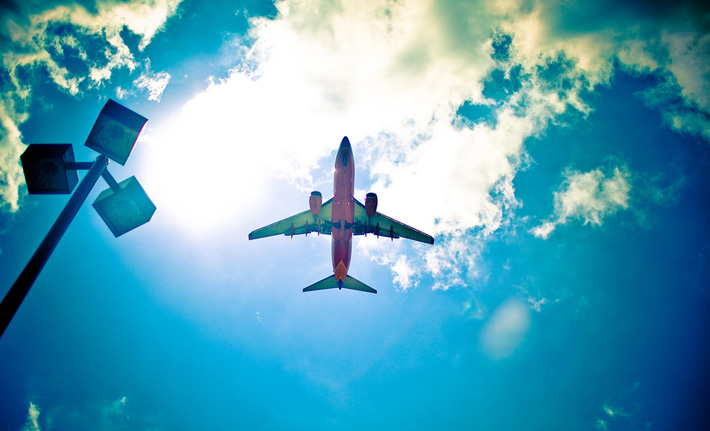
Flying into Tokyo isn't terrible, but it isn't great either. Depending on where you're coming from, you may also be terribly jet lagged. If that's you and you're on the 2-week schedule, you get an extra day to take it easy in Tokyo. Nice. If that's not you, you better be ready to go. No rest for the weary. After getting to the airport, you'll need to go pick up your JR Pass (should be included with your ticket). If your flight comes in too late (and the ticket place is closed) I'd recommend shelling out the $30 or so to go into Tokyo without the JR Pass and get it the next day in the city.
Optional: You can also pick up a 3g hotspot / internet dongle for your computer if you'd like. Finding free wifi in Japan is a huge pain, and getting one of these will pay for itself if you need to do a lot of work, or something.
Once you've gotten your ticket, hop on the JR Narita Express (NEX) to Tokyo. When you get to Tokyo, check into wherever you're staying and scope things out. It's probably evening by now anyways, so do your best to unjetlag yourself and go to bed so you can wake up early.
Day 2, 3, & 4: Tokyo
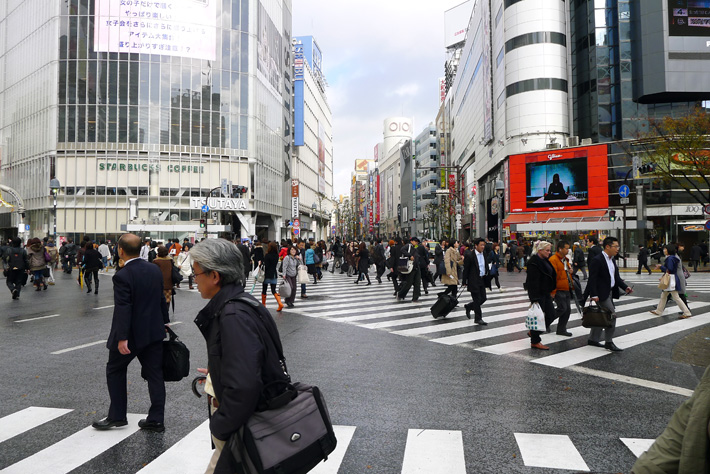
*If you're only staying for one week, cut out days 3 and 4 and then skip to Day 7. Alternatively, you could skip Day 2 as well and choose to do Day 5 or Day 6 (then your Tokyo time will be your shopping time on your way back). If you don't really care about big cities like Tokyo, skipping this section won't be too bad! :)
For the first few days, you'll be exploring Tokyo. So many people. So many things. Hopefully by the end of your Tokyo time you'll feel so tired of it you want to go somewhere nice and peaceful (don't worry, you will!). There are various areas of Tokyo worth visiting, and they're all quite easy to get to via the subway system. As long as you're not hitting it during rush hour, you'll probably have a great time scooting around. Since there are so many different tastes out there, I thought I'd list out the main places worth visiting in Tokyo, and then you can pick and choose what you like. I'll even sort them by areas.
Central Tokyo
Akihabara: This area should be on every nerd's Japan itinerary. It's famous for its electronic shops and otaku culture. So, if you're into either of these, this is a fun place to be. Make sure you look up, too. Lots of multi-story buildings filled with all kinds of weird things. You can spend a while walking around here.
Northern Tokyo:
Asakusa: Asakusa has the feeling of an "old" Tokyo, I think. You can visit the Sensoji (famous Buddhist Temple) and Asakusa Shrine or hit up some of the various shopping lanes.
Ueno Park: Ueno Park is probably one of Japan's most well known parks. Besides being parkish, it's full of museums, shrines, temples, as well as the Ueno Zoo. Definitely the kind of place you fancier folks will enjoy. You can spend a whole day here, if you're into this kind of thing.
Roppongi Hills: Want to see Tokyo from somewhere up high? Come to Roppongi Hills. You can go up into the Mori tower and look down on all those tiny people. Pro Tip: They don't like it when you try to throw pennies off the observation deck. Also worth noting is the Mori Art Museum.
Kappabashi: Do you know how a lot of Japanese food places have fake foods outside showing you what the food looks like? There's a chance they got it at Kappabashi, the kitchen capital of Tokyo. You can buy things for your restaurant, but the best part is the fake food, I think. It's surprisingly expensive, too.
Western Tokyo
Shibuya: Shibuya is just a ward of Tokyo, but it's particularly known for all its fashion and culture. Fashionistas should put it on their Japan itinerary. A lot of shopping can be found here, but there's also the Hachiko Dog Statue as well. Scope it out but come back in the "shopping days" at the end of your trip.
Love Hotel Hill: Technically this is part of Shibuya, but it's worth noting on its own. This is just an area with a lot of love hotels. Pro tip: They won't let three people in at a time, so if you want to check one out as a group, you'll have to break up into pairs or bring a body pillow.
Shinjuku: Shinjuku's kind of the party district, though that may be because of Kabukicho (northeast of Shinjuku Station) which is Tokyo's big red light district. If you're into nightclubs, bars, pachinko, neon, and other ahem things, this will be a place you'll enjoy.
Harajuku: Love crazy outfits? You'll fit in right here. Harajuku is home to Tokyo's teen fashion and cosplay (if you visit on a Sunday). There's also plenty of shopping and crepe stands as well (yum).
Meiji Shrine & Yoyogi Park: These two places are pretty close to each other, so I'm putting them together here too. It's also a good place to go from Harajuku, since you'll use the same train station. The Meiji Shrine is just one of many shrines in Japan, but it's particularly interesting if you're into modern Japanese history. Yoyogi Park, on the other hand, is just a really big park. Both are nice, though, if you're looking to get out of the cement jungle known as Tokyo.
Day 5: Monkey Park, Jigokudani

Have you heard of those Japanese monkeys that hang out in the hot springs? This is one of those places, though depending on the time of year, they may not be spending too much time in the hot springs. I like this place in Winter, but other times are good as well. Summer means baby monkeys, after all. To get here, you'll have to go North of Tokyo to Nagano (Shinkansen it!). From Nagano Station, take Nagano Dentetsu to Yudanaka. From there, you can take a bus to the Kanbayashi Onsen, which has the entrance to the Jigokudani Yaen-Koen. It'll be a 30+ minute walk (depending on how much you stop) to get to the actual monkey area, though you may start seeing monkeys before then if you're lucky. Check out the livecam , too!
If you're going to Jigokudani, I'd maybe recommend heading up here at the end of Day 4 and staying the night in Nagano. There's some interesting things up there too (that's where they did the Winter Olympics in 1998!), so feel free to head up a bit earlier and check things out. Then, the next morning (Day 5) you can head out bright and early to Jigokudani and take your time with the monkeys and possibly hit the onsen. It's a nice place. Then, you can head on back to Tokyo the same night.
Day 6: Toshogu Shrine, Nikko

Nikko is the mausoleum for Tokugawa Ieyasu. Basically, he and his relatives ruled over Japan as Shogun for 250 years (until the Meiji Restoration). That means he got a pretty sweet shrine. There are over a dozen Shinto and Buddhist buildings here, and it's in a very beautiful setting. Need some peace from Tokyo? You'll for sure get it here.
This can be a day trip (it's really close to Tokyo) with some extra time left over. I'd recommend coming here, then either checking out other things in this area or heading straight to Tokyo in the afternoon or evening. Just be sure to give yourself 3-4 hours to travel, so don't leave too late from here. Another option would be to leave the morning of Day 7 and get to Kyoto in the late morning or early afternoon. It's totally up to you.
Day 7 & 8: Kyoto
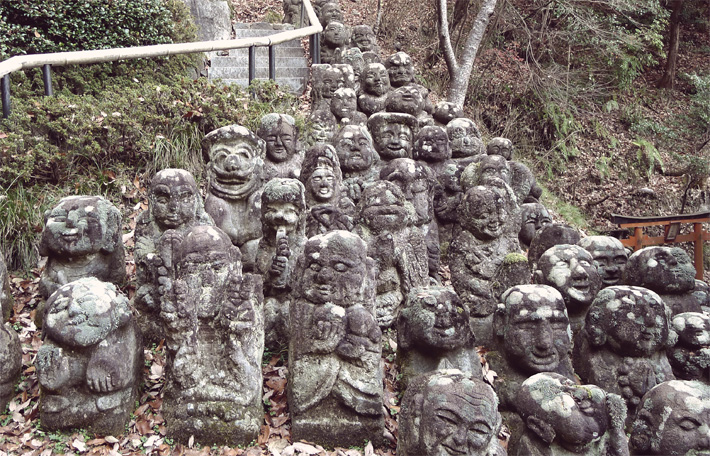
*If you're on the 1-week plan, skip day 8 and go to Nara instead.
Kyoto's going to be your shrine and temple time while visiting Japan. Since it was the place where the emperor lived for over a thousand years, it's full of cool, historical things. Take your pick and enjoy. Also be sure to just walk around at random. You'll run into so many temple, castles, and shrines just by accident. It doesn't hurt to explore, some. Oh, and bring your walking shoes. Things are about to get… walky.
Central Kyoto
Nijo Castle: This was where Tokugawa Ieyasu lived (remember his shrine, up above?). Later it switched to an imperial palace (after the Shogunate went down), and then later opened to the public. It is a UNESCO World Heritage Site, which is supposedly a big deal.
Kyoto Imperial Palace: When the Shogunate was in power, this is where the imperial family lived. You can even take tours in English, here.
Northern Kyoto
Kinkakuji: Also known as the golden pavilion, this is a building covered in gold .
Western Kyoto
Kokedera: Also known as Saihoji, this is another UNESCO World Heritage Site (way to go, Kyoto). This temple is mainly known for its moss, and apparently has over 120 different varieties.
Southern Kyoto
Fushimi Inari Shrine: This shrine is known for its thousand torii gates. They're bright orange and absolutely incredible to walk through. Highly recommended.
Eastern Kyoto

Kiyomizudera: One of the must sees, I think (and also a UNESCO World Heritage Site). This temple is high up on a hill and has a balcony that offers an awesome view.
Higashiyama District: You'll run into this on your way up to Kiyomizudera, actually. Think of this area as a "historic shopping district." Kind of touristy, but a lot of fun nonetheless. Grab something to take home!
Sanjusangendo: The building itself it's amazing, but the inside is pretty remarkable. There are 1001 statues of Kannon in here, which is… well… kinda remarkable.
Gion: Like Geisha? this is Kyoto's Geisha District. You will have to try pretty hard to get in to see a geiko, though, but good luck trying (hint: apparently some travel agencies will hook you up if you've got the yen).
Day 9: Nara
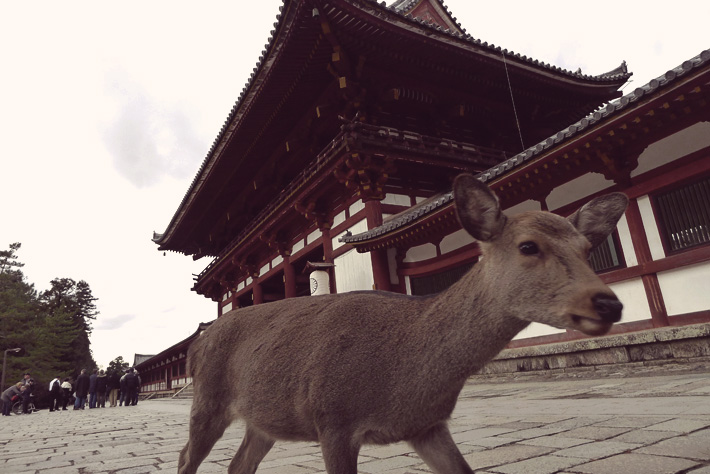
You can leave the morning of Day 9 or leave the evening of Day 10 and spend the night in Nara. Either is fine. You can even spend the night in Nara on Day 9 as well then move on early in the morning of Day 10. It all depends on how much you like temples and Deer.
While there's some neat temples, shrines, castles, and other similar things here in Nara, I'd say you're coming for deer. The deer here are pretty tame and will actually attack you if you have food (kinda fun to run from deer). Don't worry, they have their horns cut off, though (it's a religious thing), so you won't be stabbed through, most likely.
Places you'll want to go in Nara:
- Todaiji Temple: Largest wooden structure in the world with Japan's largest Buddha statues inside. Basically, think super sized. Definitely one of the best places to visit in Nara.
- Nara Park: Has a lot of deer. Go buy deer food, the deer will thank you.
- Kofukuji Temple: Basically a big temple. Very pretty, though.
- Nara National Museum: If you're interested in Japanese Buddhist Art, this will be a fun place for you. The building is also surrounded by ferocious, wild deer.
Consider this a day to walk around but not as much as when you were in Kyoto. Nara's a lot like Kyoto in a lot of ways, though, so I'd recommend mainly hitting up the deer and then hitting up Todaiji Temple. Depending on how worn out you are on temples, though, you can stay here longer or shorter, deciding where you stay this night based off of that.
Day 10: Mt. Koya aka Koyasan
You'll want to make sure you leave early this day, whether you're leaving from Kyoto or Nara. You have a ways to go to get to Koya-san, quite possibly one of the most beautiful places in Japan (just my opinion). This might be one of the best places you go in your Japan travels.
There are a hundred temples here, many of which you can stay the night at. When you spend the night, you get the best vegetarian meal you've ever had (guaranteed), a room to stay in, and even the option to wake up (really) early to go watch the monks do their morning rituals. It's so peaceful, a lot of fun, and one of my favorite places on earth. You'll want to go to the Koyasan website for more information on lodging.
I'd recommend getting here as early as you can on Day 10, dropping off your things at the place you're staying, then just walk around. You'll be able to fill a good amount of time just exploring. The best place to walk, though? Probably the giant cemetery, which also happens to be the largest in Japan. Although some may find a graveyard creepy, it really is quite peaceful.
This, I think, will be one of your best days in Japan, so don't skimp out on it if possible! Just be sure to get back to your temple in time for dinner.
Day 11: Travel Day / Osaka / Fuji

*If you're on the 1-week schedule, you'll need to get back to Tokyo. You're running out of days.
Day 11 is mostly travel. You'll want to leave Koya either late morning or early afternoon, depending on where you're going next. If you like shopping a lot, you'll want to get back to Tokyo on this day.
If you don't need the extra time, consider stopping in Osaka (it's on the way from Koyasan). You can visit the Glico Man, Osaka Tower, play some Pachinko, and eat some Takoyaki / Okonomiyaki (both famous in Osaka). It's a bit different than Tokyo, but it's still a big city. I'll leave this one up to you, though. Osaka's a lot of fun to just walk around and check out.
Alternatively, you could stop at Mt. Fuji on the way back too. I recommend the amusement park Fuji-Q Highland over climbing the mountain itself (it looks better from afar, you'll have to trust me on this one) if you do this. Definitely don't miss the horror house there, it's top notch.
Whatever you end up doing, you're reaching the end of your trip. Just make sure you're back in Tokyo in time to do your shopping before you get on the airplane to leave. Of course, if you don't shop, then you have more time to go to more places. If you do shop, get back to Tokyo.
Day 12 & 13: Shopping In Tokyo / Last Minute Visits
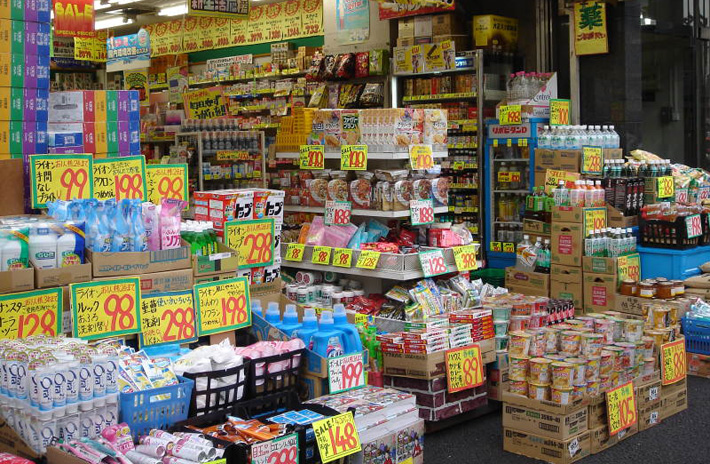
Hopefully you scoped out all the places you wanted to shop at, because this is your shopping time. Get the things you want for yourself and for your friends / relatives. Fill up that duffel bag you brought / bought and have fun. This is also a good time to just go around to the places you missed.
Either way, it's good to be back in Tokyo a day or two before your flight leaves, that way you won't miss your flight (unless you want to "accidentally" miss it, wink wink nudge nudge).
Day 14: Go Home
Hope you had traveling to Japan. This is only your first trip, though. Now that you've gotten all the normal / main stuff out of the way, your next trip can be filled with strange, exciting places. Be sure to check out TofuguTV for some of those, and keep reading Tofugu for more in the future. There are certainly many, many "off-the-beaten-track" locations worth visiting, but we'll save that for next time !

How to Plan a Trip to Japan: Ultimate Guide for First-Time Visitors
From culturally rich history, to cutting-edge technology, to foodie-worthy cuisine; Japan truly has something for everyone. It should come as no surprise then that it is currently rated as one of the most visited countries in the world. Until the pandemic, the number of tourists coming to Japan has grown steadily year after year, with 29 million visitors in 2017. With tourism at an all-time high, how can you prepare in advance to make the most out of your vacation to Japan?
Why You Should Plan Your Itinerary Ahead of Time
How to make an itinerary, finding the best time of year to visit, how to handle finances in japan, what to pack for your trip, eat like a local, useful words and phrases, what apps should i download before traveling to japan check out these 8 free useful apps.
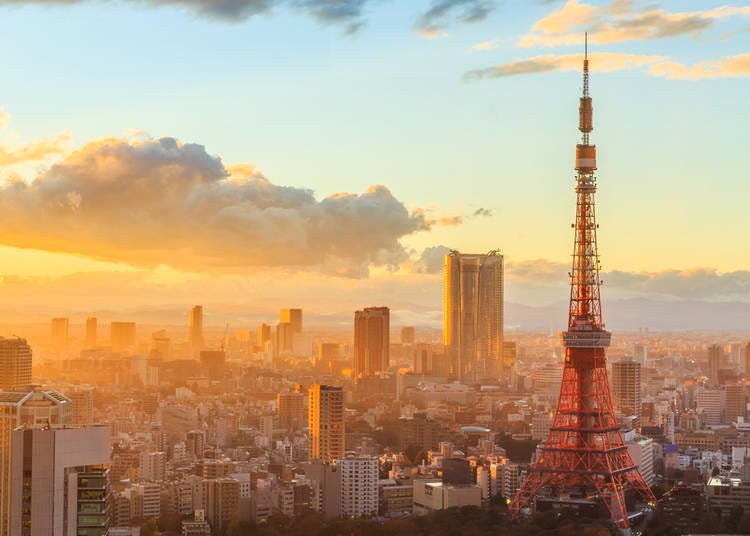
There are many places in the world that you can visit for one to two weeks and feel as though you have a good sense of the culture and way of life by the time you return home. Japan is not one of those places. It’s impossible to “do” Japan in a lifetime; let alone a two-week vacation. With so much to see, it’s easy to become overwhelmed once you find yourself in the middle of it all. Having a well laid-out itinerary - or at least a fairly solid idea of spots you'd like to go and when - will help to ensure that you are able to do what matters most to you during your time here. One of the worst experiences when visiting somewhere while on a limited amount of time is to travel out of your way for something specific; be it a famous tourist attraction or a particular restaurant, only to discover that it is not open. Many attractions in Japan operate on a seasonal basis, and it is not uncommon for restaurants to be closed on certain days of the week. In order to avoid disappointment, research schedules beforehand and make reservations in advance whenever possible. As an added benefit of researching and planning early, you can often find discounts or free admission days for many popular attractions. The money saved on tickets can then be used for other parts of your vacation. After all, who wouldn’t love a little extra money in the sushi budget?
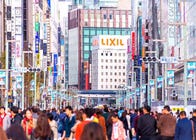
The first step to creating an itinerary begins with one question; “Why did I want to visit Japan in the first place? Maybe you’re a history buff that wants to walk in the footsteps of famous figures like Oda Nobunaga. Perhaps you have a fascination with Japanese architecture and dream of visiting temples dating back over 1,300 years. Or maybe you’re in love with modern Japanese media and culture and want to see where it all began. Whatever the reason, knowing what initially drew you to Japan can make planning your perfect trip much easier. Of course it’s possible to plan a vacation as widely varied as your interests, but having a focus is helpful. ・ Enjoy eating? If you love gourmet, you’ve chosen the perfect destination. Japan is a foodie’s paradise and is home to some of the top chefs in the world - plus its food culture goes back over 400 years. While many tourists tend to immediately think of sushi , Japanese cuisine is so much more diverse. Experience all of the tastes that Japan has to offer; from hole-in-the-wall ramen shops to gourmet fine dining restaurants.
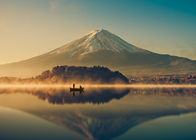
・ Enjoy sightseeing? From gorgeous landscapes , to ancient temples , to futuristic city streets; Japan has it all. Within Japan’s most popular tourist region, Kanto, there is no shortage of incredible places to visit. Below are some of the more popular destinations to help you start planning your sightseeing trip, all within easy reach of Tokyo: -Sensoji Temple As Tokyo’s oldest temple , Sensoji is a must-see for any visitor to Japan. Its towering pagoda and famous red lantern are iconic Tokyo sights that should not be missed. - Tokyo Skytree At 634 meters tall, the Tokyo Skytree provides the best panoramic views of the city. A visit to the top observation deck is the perfect way to take in the truly impressive scale of Tokyo. -Tosho-gu Shrine In Kanto’s northern prefecture of Tochigi, the town of Nikko looks like something straight out of a Studio Ghibli film. Nestled amongst the lush green mountains is a shrine by the name of Toshogu. Adorned with countless wooden carvings, its stunning decoration and serene surroundings make it one of the most beautiful temples to visit in Japan. - Hakone Nature lovers will find solace in Hakone with its abundance of rolling hills, lakes , and scenic Mount Fuji views. The town is also famous for its high quality onsens, making it the perfect spot to relax. -Sankeien Garden Just slightly south of Tokyo, the city of Yokohama is home to many sights that are worth visiting during your time in Japan. One such destination is Sankeien Garden . In addition to the picturesque flowers and bamboo groves, Sankeien is perhaps most famous for its architecture . Historical buildings from around Japan, including a massive three-story pagoda from Kyoto, have been painstakingly relocated from their original location to their new home in the garden . It’s an amazing opportunity to explore classical architecture of many of Japan’s regions all in one area. ・ Enjoy historical places ? Japan is a country filled with rich, historical experiences. In Tokyo, the Imperial Palace is a popular destination among tourists, as is the Edo-Tokyo Museum in Ryogoku , in the eastern part of the city. For travelers who cannot make it to Kyoto, the historical area of Kamakura (and especially the Daibutsu, its Great Buddha) makes for the perfect day trip away from Tokyo. Other historical areas in the nation include the cultural capital of Kyoto, and ancient area of Nara . ・ Love shopping? Shopaholics will find everything they can dream of and more in Japan. Visit the Ginza area in Tokyo to browse some of the best high-end clothing and accessory retailers in the world. In nearby Yokohama , Akarenga is a trendy shopping center right on the water, located in a renovated red brick warehouse. Those looking for a more traditional Japanese market experience in Japan's western region will find it in Kyoto’s Nishiki Market, where you can find everything from fresh fish, to handmade lanterns, and so much more.
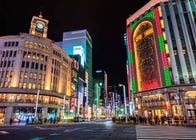
How Long Should You Stay Once you have an idea of what you would like to see, you should next determine how much time to spend in each area. It’s a terrible feeling to leave somewhere feeling as though you missed out on essential experiences. Likewise, staying in one location for too long to the point where you become bored with your surroundings is a waste of time which could have been better spent exploring new areas. Thankfully, the internet is filled with reviews for any place that you are likely to visit; from quiet countryside villages to bustling Tokyo neighborhoods. Make a list of “must-do” activities for each area of Japan to which you intend to travel, and research what fellow travelers have to say about their experiences there. Knowing how long it takes to visit or travel between certain attractions can help you to make the most efficient use of your time. Based on data from the Japan National Tourism Organization, most American tourists spend between 7 to 13 days traveling throughout Japan. During that time, the most visited locations tend to be Tokyo, Kyoto, and Osaka. Of course there is no one-size-fits-all approach to travel, especially in a country as diverse as Japan, so consider this data more of a suggestion rather than a firm guideline.

Planning Your Route The next step in putting together a successful itinerary is figuring out how you will get from place to place. When it comes to Japan; a country famed for its incredibly well-connected railway system, the train will be your most likely means of day to day transportation. However, it’s important to plot a carefully thought-out route. While it’s possible to travel across the country by train, this will often require switching to different railway lines along the way. As you will come to find, these changes can only be done at certain train stations that act as hubs. When deciding in which order you will visit each destination, first consult a railway map to ensure your route doesn’t require you to needlessly double back. When planning a route, you should also take ticket prices into consideration. In Japan, train fare is based on the distance you are travelling. If you intend to spend most of your time in one area, this most likely won’t be an issue for you, but if you are planning to take the train often or travel across the country, purchasing a rail pass may be in your best interest. Within Tokyo, day passes may be purchased which will give you unlimited access to JR Line or Tokyo Metro trains for a 24 hour period at one fixed price. If you intend to do a great deal of sightseeing around the city, purchasing one of these passes might be in your best interest. While these passes cover only the Tokyo area, an additional option for travelers is the Japan Rail Pass, which allows for unlimited travel throughout the country on the Japan Railway network in blocks of 7, 14, or 21 days. These passes are not cheap; starting at around ¥29,110 (about $260 USD), but they do grant you access to shinkansen lines as well; Japan’s ultra-fast bullet trains. If you are planning to travel long distances; from Tokyo, to Kyoto, and beyond for instance, this pass could be well-worth the investment. Be aware however, that these passes can only be purchased from outside of Japan, so be sure to purchase it well in advance of your trip to ensure you receive it in time.
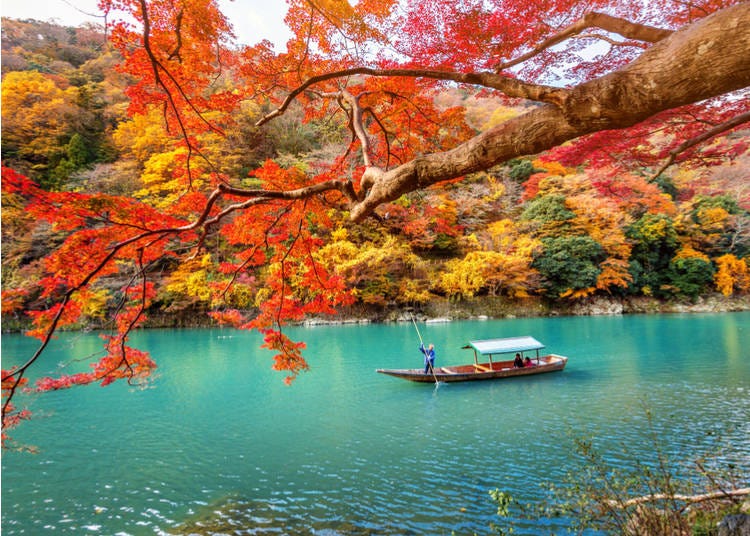
When it comes to choosing what time of year you should visit Japan, there is no one correct answer. Sure, there are more popular seasons when tourism tends to be at its highest, but each season comes with its own positive and negative aspects. Decide what factors are most important when it comes to your vacation before booking your trip. Summer ■ Pros ・Excellent beach weather. Summer in Japan often means sunny days and high heat; the perfect conditions for a day out by the water in locations like Okinawa . ・It is the most active time of year for events and art exhibits. ・ Summer is matsuri (festival) time. There is perhaps no better way to experience Japanese culture than at a traditional matsuri . Enjoy games and delicious street food and watch as the locals carry mikoshi; portable shrines carried like a parade float, through the streets. ・Cities are slightly less crowded this time of year as locals tend to go on vacation to other countries or more remote parts of Japan. ・Many popular attractions will offer summer discounts, helping you to stretch your vacation budget a little further. ■ Cons ・ Summer in Japan is infamous for its heat and oppressive humidity. As it stands, 2018 has seen some of the highest temperatures in Tokyo in recorded history. When the heat is at its peak, outdoor activities can be become unenjoyable to downright impossible. ・Though cities in general tend to be less crowded with locals gone on vacation, tourism is still high this time of year, meaning you can expect larger than average crowd sizes at the most popular tourist attractions. ⇒ Browse seasonal articles on Summer in Japan Fall ■ Pros ・Once the summer heat breaks, the temperatures in fall are very comfortable. ・Areas such as Hokkaido and Tochigi are renowned for their beautiful fall foliage. ・As the seasons change, so does the cuisine, with seasonal favorites like sweet potato and kabocha (Japanese pumpkin) taking center stage. It’s a great time of year to sample dishes that are less widely known outside of Japan. ■ Cons ・The changing temperatures from summer to autumn is the catalyst for typhoon season in Japan. High winds and torrential rain are not uncommon at the start of fall. ・The unpredictable weather can make it difficult to pack for your trip. ⇒ Browse seasonal articles on Autumn in Japan Winter ■ Pros ・Japan is home to some of the best skiing and snowboarding terrain in the world due to its amazing powdery snow quality. ・Japan’s outdoor hot springs , known as onsen , are much more enjoyable in cold weather with the added aesthetic of falling snow. ・As the holiday season approaches, many cities across Japan decorate with spectacular LED light displays known simply as illuminations. No two displays are alike and many decorate with a specific theme each year. ■ Cons ・Though the Kanto region and all areas south rarely see snow, winters in Japan tend to be incredibly dry, which comes with its own series of discomforts like dry skin and chapped lips. ・Daylight hours are much shorter in winter , with the sun typically setting by 4:30 PM. ・Travel tends to get quite congested at the end of the year with many people heading home for the New Year’s holiday. ⇒ Browse seasonal articles on Winter in Japan Spring ■ Pros ・ Spring is the time for cherry and plum blossom viewing; one of the most popular tourist attractions in all of Japan. ・Japan’s gorgeous countryside is at its most lush and full this time of year. ・Much like fall, temperatures tend to be on the comfortably warm side throughout the season . ・Late spring , after cherry blossom season has passed, often sees less tourism, so crowds at shrines and other popular attractions are much smaller on average. ■ Cons ・Due to the high number of visitors who want to see the cherry and plum blossoms, early spring is by far the busiest and therefore most expensive time of year to travel to Japan. Expect the price of flights and accommodations to be much higher than normal. ・With the blossoming flowers comes an overwhelming wave of pollen. If you are an allergy sufferer, prepare to be congested. ・Japan’s rainy season takes place in late spring . During this time, high humidity and unexpected downpours are the norm. ⇒ Browse seasonal articles on Spring in Japan It’s hard to go wrong visiting Japan at any time of year, but by selecting the season that most closely aligns with your interests, it can help to make your vacation as enjoyable as possible.
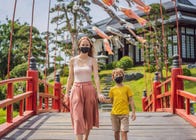
As technologically advanced as Japan is, it has a tendency to cling to certain old-world methodologies, as is evident in their inexplicable love of the fax machine. In the same regard, cash is still king in the Japanese economy. While many restaurants in bigger cities will accept credit cards, it is not uncommon to come across businesses, especially those in more remote areas of the country, which deal only in cash. That being the case, you should never go out without some paper money at the ready. The Best Ways to Handle Your Money When it comes to having access to physical yen, you have a few options at your disposal. You can exchange a certain amount of money with your bank back home before traveling to Japan, use local ATMs to withdraw yen, or use one of the many currency exchange offices located throughout Japan. The latter is by far the least cost effective option of the three, so I recommend not using this method unless absolutely necessary. Instead, let’s examine the first two. Exchange Your Money Before Leaving Many banks offer very competitive currency exchange rates if you are an account holder. This is not a bad route to take, as you will have cash at your disposal from the moment your plane touches down in Japan. The only drawback to this solution however is that you will be travelling with a large amount of physical money. Despite the fact that Japan has been rated as one of the 10 safest countries in the world, it’s never a good idea to carry excessive cash with you while traveling. Unlike debit or credit cards, once it’s lost, it’s lost for good. Withdraw Cash in Japan Rather than bringing your entire vacation budget with you in cash, you could instead opt to withdraw cash while in Japan. Many ATMs in convenience stores and post offices throughout the country accept foreign debit and credit cards for a small fee. Be aware though that your bank will typically charge a global transaction fee (usually 3-5% of the amount withdrawn) on top of this. The fees tend to add up over time, but the added security may be worth the cost. If you decide to use this option, be sure to contact your bank before you leave to inquire about their rates as well as to notify them that you will be using your card overseas. Otherwise, your bank will most likely flag the transaction as fraud and will lock your account, leaving you without access to money.
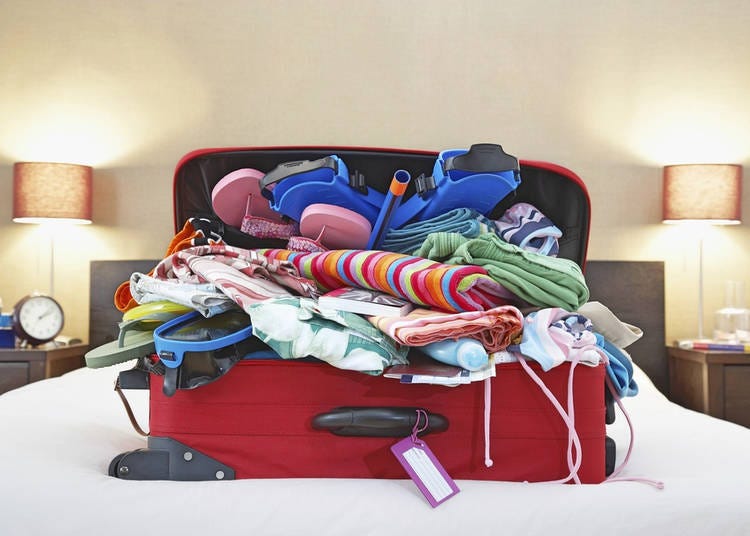
With any vacation, people often struggle with what to pack. With such varied weather and activities, putting together a packing list for Japan can be a daunting task. Thankfully, it doesn’t need to be as complicated as it seems. Clothes After reviewing the pros and cons of each season above, you should have a better idea of what time of year you will be visiting Japan. Other than the extreme heat of summer , temperatures in Japan are mild overall, so you can plan to leave the extreme weather gear behind unless your planned activities call for it. A lightweight jacket or sweatshirt will typically suffice in spring and fall, and a slightly warmer jacket or layers should be fine for winter . As far as style, typical Japanese fashion could be described as casual chic , so don’t feel pressured to dress to impress. Electronics If you are reading this from the United States, you are in luck; outlets in Japan are the same as in the US. Three-pronged outlets are not common however, so you may want to pack a three prong to two prong adapter. While the outlets are the same, the voltage they supply is different, with 100 volts in Japan compared to 120 volts in the United States. However, most modern chargers for cell phones, laptops, and other electronic devices will have a built-in convertor to automatically adjust the power as needed. To be safe, always make sure to check the label on the charger to determine the voltage range it can handle. If the device is not rated for 100 volts, a voltage adapter will be needed. For those travelling from countries with different outlets, inexpensive universal plug adapters can be purchased online or from most electronic stores. Toiletries When it comes to toiletries, there is no need to panic and overpack no matter how long you intend to stay. Japan is home to some of the top beauty and personal care brands in the world, so you are almost certain to find the same brands or suitable alternatives to the ones you use at home. For the sake of convenient packing, always opt for travel-sized versions of your favorite toiletries and replace them as needed while on the go.
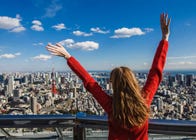
When asked to picture Japanese food , most people will instinctively picture sushi , and understandably so. This iconic and colorful staple of Japanese cuisine is a globally recognizable (albeit often locally modified) dish. Upon visiting Japan however, you will come to find that Japanese cuisine is much more widely varied than is often represented abroad. Signature Dishes In order to get a true taste of the local flavor, the following foods are a great representation of traditional Japanese foods that are still easy on more westernized palettes. Soba / Udon Udon and soba noodles are very common in the Japanese diet and can be found in most restaurants. Udon is the thicker of the two and tends to have a nice chewy texture with a very mild taste. Soba is thinner; similar to a flat spaghetti noodle, and usually has a richer, nutty taste. Both can be served hot in soups, but are more commonly served chilled with a broth for dipping on the side. This is a great summer option to help beat the heat. Okonomiyaki Equally at home at both street festivals and fancy restaurants, okonomiyaki is a traditional Japanese dish that is great for sharing with friends. At its most basic level, okonomiyaki is essentially a large, savory pancake filled with your choice of an assortment of ingredients and topped with a sweet and salty sauce. For the full experience, visit a dedicated okonomiyaki restaurant where you can cook your own on a hibachi grill built into your table. Yakiniku Literally translated as “grilled meat”, the premise of yakiniku is a simple one, but the delivery and atmosphere are what make the experience special. Rather than ordering a meal which is then cooked by the kitchen, in yakiniku restaurants, you order cuts of meat which you then cook for yourself at your table. This may seem like a lot of extra work to many visiting foreigners not familiar with the concept, but the cookout atmosphere it creates makes for a great experience to be shared with friends. In most yakiniku restaurants, items can be ordered à la carte, or tabehoudai style, which is all you can eat for a fixed amount of time. Nabe A favorite amongst sumo wrestlers, nabe is a hearty soup often eaten in the colder winter months. Nabe is a great dish to experiment with, as there is no strictly defined recipe and many restaurants will serve their own signature style. Typically, a variety of meats, fish and vegetables are placed in a broth and cooked in a large clay or porcelain pot. Once heated, the cooked ingredients are picked out and eaten. The remaining broth is then finished with udon noodles or poured over rice to make a rich, flavorful porridge. Food allergies in Japan can be slightly difficult to navigate in a foreign language, so if there are any foods you absolutely must avoid, it’s recommended that you find the Japanese name and have it printed on a card that you can present to your server.

Outside of major cities, finding people who can speak English becomes a major challenge for many visitors. Even in major metropolises like Tokyo, many locals won’t be able to communicate in English beyond a handful of basic phrases. While no one would expect visiting tourists to be fluent in Japanese, having a few commonly used Japanese phrases at the ready will go a long way in helping you to communicate while here. Sumimasen Pronounced sue-me-mah-sen. This is a very common phrase in Japanese vocabulary and translates to “excuse me” or “pardon me”. This is helpful to use when you are trying to get someone’s attention or if you bump into a stranger on the train. Gomen Nasai Pronounced go-men-nuh-sigh. Sometimes used interchangeably with sumimasen, gomen nasai means “I’m sorry”, and should be used for situations where you have accidentally done something rude such as spilling a drink or blocking someone on the sidewalk. Arigatou Gozaimasu Pronounced ah-ree-gah-toe-go-zigh-ee-moss. This is a phrase you will hear often when in shops in restaurants, meaning “thank you very much”. If memorizing the full phrase is proving to be a bit difficult, a simple “arigatou” will suffice, though it is considered much more polite to use the whole phrase. Konnichiwa Pronounced co-knee-chi-wah. This is the most basic greeting used in Japanese. While technically intended to be used during the afternoon hours, it can be said as a basic polite greeting at any time of day. While this is just the tip of the iceberg when it comes to useful words and phrases in Japanese, they will serve as a great starting point for your daily interactions with locals. When in doubt, speak slowly and use a lot of gestures. Charades is a great way to communicate with people from all over the world.

Modern technology has made it easier than ever before to visit locations where you don’t speak the language. By using a local sim card or a data plan that allows for international roaming, the following apps will help to ensure that your trip goes as smoothly as possible. 1. Google Translate By far one of the most helpful apps when it comes to international travel, Google Translate makes reading menus or railway maps a breeze. It’s most useful feature is undoubtedly its ability to translate from a photo or live feed from your smartphone’s camera. With this, making sense of Japanese characters needs not be an overwhelming task. Be sure to download the Japanese language pack before you leave to avoid any sort of service interruption. 2. Google Maps When used in tandem with Google Translate, Google Maps is guaranteed to get you where you need to go. This app works particularly well with trains as well, listing departure and arrival times, as well as platform numbers when available. 3. Currency Converter As the Japanese yen typically deals in much bigger numbers than those who use US dollars or euros are accustomed to seeing, it’s a good idea to download a currency convertor. This way, you can be confident in the amount of money you are spending and can avoid paying too much in certain situations. 4. Line When it comes to digital communication in Japan, Line is the undisputed champion. As the most commonly used VoIP service in the country, Line gives you the ability to message and call other Line users for free. This is immensely helpful in the event that you need to contact a local person (Airbnb host, etc.) or just keep in touch with family and friends back home without paying expensive international roaming fees. 5. Gurunavi It’s almost impossible to be bored in Japan. With so much to see and do, it can often be difficult to sort through it all and find something that appeals directly to your interests. Gurunavi helps to alleviate that stress by finding events, restaurants, attractions and more throughout Japan, and filtering the results to present you the ones you are most likely to enjoy. 6. Japan Official Travel App As the official app of the Japan National Tourism Organization, this app is packed with helpful information from travel articles, to train schedules, to general rules regarding manners and much more. The app is available in English, Chinese, and Korean, and offers assistance both on and off-line. 7. Smart EX With the Smart EX app by JR, you can reserve Shinkansen tickets while you're on the go. And when reserving at least 3 days in advance, you will even receive a discount on certain lines! Check the website below for details. https://smart-ex.jp/en/ 8. Yurekuru Earthquakes are a common part of Japanese life, but for visitors, they are often a jarring experience. Yurekuru is a helpful app that can better prepare you by issuing a warning when an earthquake has been detected. Though the window of time between detection and feeling the effects of the earthquake is relatively small, having any amount of forewarning can make the experience a bit less scary.
With a bit of preparation and planning, you will be well on your way to a fantastic vacation in Japan. Have a schedule you can follow, but be sure to leave yourself open to all the wonderful and unexpected experiences Japan has to offer as well.
Written by:

Matt Vachon
Matt Vachon is a content creator in Tokyo who enjoys exploring off the beaten path locations around Japan. Graduated from the University of Massachusetts before moving to Japan. Since that time, he has created content for numerous tourism focused publications including The Japan National Tourism Organization, Tsunagu Japan, and Tokyo Localized. Holds a bachelor's degree in psychology. He is passionate about filmmaking and has been working on documentaries about Japan. During his downtime, he's often indulging his inner foodie by trying out some of the best hidden gem restaurants in Tokyo. Website: https://mattvachon.com. Instagram: @mattvachonphoto.

- Category Other Sightseeing
- How To: Sightseeing
Share this article.
Limited time offer: 10% discount coupons available now!
Recommended places for you.

Yoshida Gennojo-Roho Kyoto Buddhist Altars
Nijo Castle, Kyoto Imperial Palace
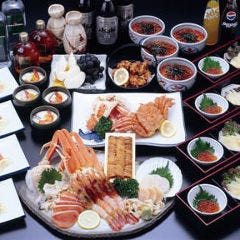
Rukku and Uohei
Sapporo / Chitose
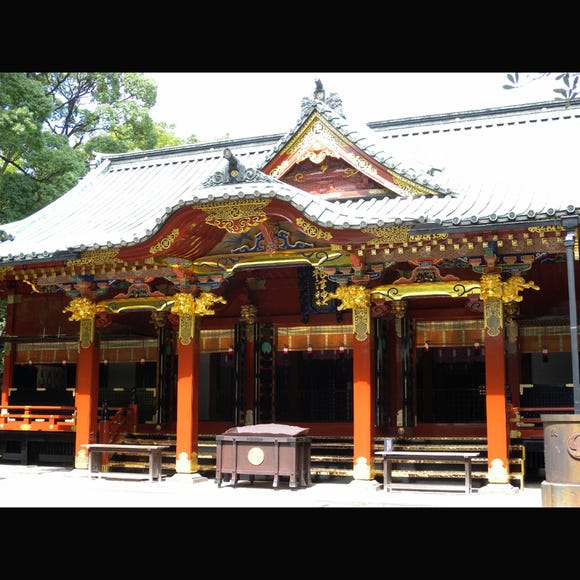
Nezu Shrine
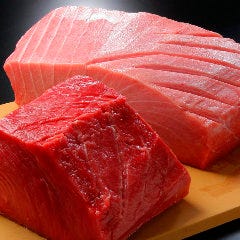
Kamesushi Sohonten
Umeda, Osaka Station, Kitashinchi
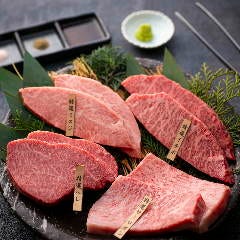
ISHIDAYA Hanare
Kobe, Sannomiya, Kitano

Jukuseiniku-to Namamottsuarera Nikubaru Italian Nikutaria Sannomiya

15 Must-Try Restaurants in Ikebukuro: From Aged Yakiniku to All-You-Can-Eat Sushi, Plus Adorable Animal Cafés

The Complete Guide to the Kintetsu Rail Pass

12 Unique & Fun Tokyo Food Tours to Enjoy in 2024

Everything You Need To Know About the Kyoto-Osaka Sightseeing Pass

A Complete Guide to the JR West Kansai Area Pass

The CASIO S100: How CASIO's Masterpiece Calculator Redefines Business Elegance With Japan-Made Reliability
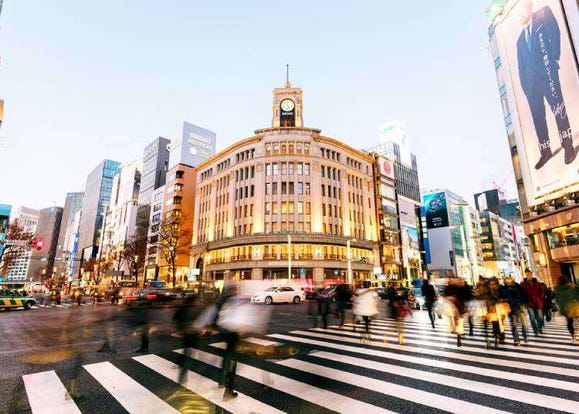
From Cutting-Edge to Traditional: 12 Must-Visit Shops in Tokyo’s Glitzy Ginza

Otaru Travel Guide: Inside Hokkaido's Leading Destination (Sightseeing, Food, and Shopping Tips)
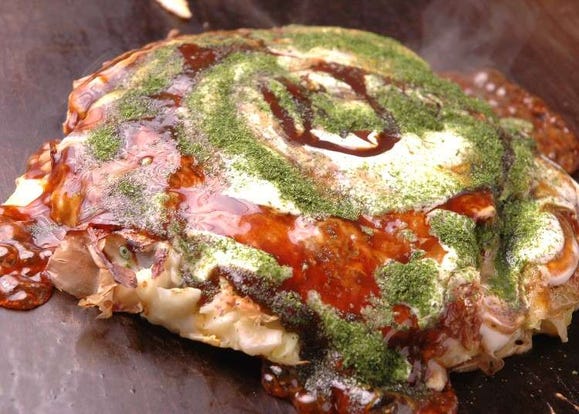
Michelin Star Restaurants & More: 3 Best Okonomiyaki Shops in Dotonbori Osaka
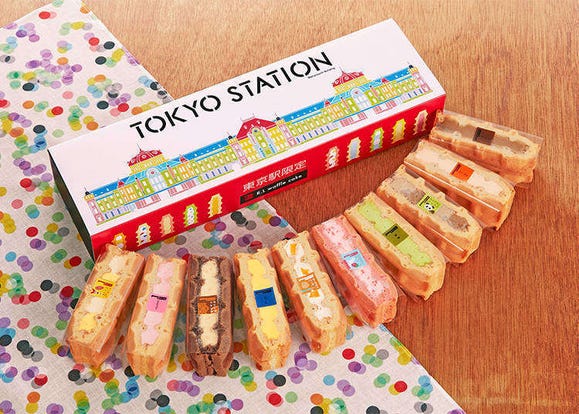
Tokyo Station Top 10 Sweets Ranking!
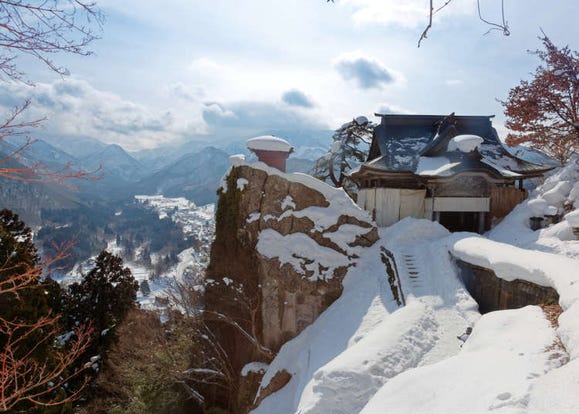
Travel Guide to Yamagata Prefecture: Popular Destinations, Fun Activities, Hotels & More
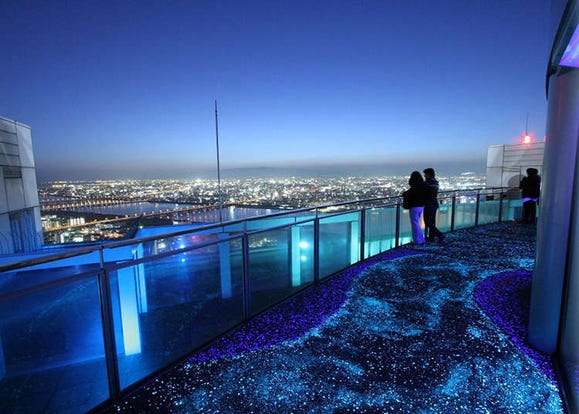
Top 10 Fun Things to Do in Umeda Osaka - Recommended by Osaka Locals!
- #best sushi japan
- #what to do in odaiba
- #what to bring to japan
- #new years in tokyo
- #best ramen japan
- #what to buy in ameyoko
- #japanese nail trends
- #things to do japan
- #onsen tattoo friendly tokyo
- #best coffee japan
- #best japanese soft drinks
- #best yakiniku japan
- #japanese fashion culture
- #japanese convenience store snacks

THE ONLY JAPAN GUIDE YOU NEED.
Planning a trip to Japan is overwhelming. Our guide is your companion for stress-free travel planning in Japan. By simplifying trip planning and offering valuable local insights, we help you make informed decisions and fully immerse yourself in the beauty and culture of Japan.
Your stress-free guide to discovering the beauty and culture of Japan.

Are you overwhelmed planning your trip to Japan because:
Endless searches leave you drowning in conflicting advice
Uncertainty about which places to prioritize leads to frustration and indecision
You don't want to miss out on authentic experiences and hidden gems during your trip to Japan
Without insider tips, you're at risk of overlooking unique dining experiences and local favorites
Booking last-minute options leads to limited availability
Incorrectly navigating Japan's public transportation network results in missed connections and wasted hours
Cultural misunderstandings may lead to costly mistakes and awkward encounters, leaving you feeling out of place and frustrated
Without guidance, navigating social situations and understanding cultural nuances becomes a daunting task
If you answered yes to any of the above, you need our guide.

Streamlined Trip Plan
Authentic experiences, (local approved), confidence and peace of mind, save time and eliminate confusion with detailed itineraries, insider tips, and recommendations..
Discover hidden gems, cultural insights, and off-the-beaten-path attractions for an immersive journey.
Navigate Japan confidently, simplify transportation, and bridge cultural barriers for a stress-free journey.

We know that you want to be a confident and savvy traveler.
To do that, you need access to reliable and comprehensive travel resources., the problem is that navigating the vast amount of information available online can leave you feeling overwhelmed and unsure of where to turn., we believe that everyone deserves to travel confidently and explore japan with ease. we understand the challenges you face, which is why we've curated an expert guide and resource to simplify your journey..

Provide a travel guide and itinerary that we followed. We even guide you through booking special train rides, because we know that can get confusing.
Our travel itineraries and guide are put together by a local, ensuring that you receive authentic and insider-approved recommendations.
We prioritize authenticity, guiding you to hidden gems and off-the-beaten-path attractions that capture the true essence of Japanese culture and tradition.
Why you can trust us.

Save your time and energy for what's important. Buy our Japan guide and go on your Japan adventure with confidence. In the meantime, let us take the stress out of travel planning so you can stop feeling overwhelmed and instead enjoy a seamless and unforgettable experience in Japan.
So, let us be your trusted travel companion.
Find us on Insta!
Want more japan travel tips give us your email, @jerometraveller, have feedback for us.
Itineraries
- Tours and Activities
- Travel Guides
- Best of Japan
JRailPass.com » Japan Travel Blog » Planning a trip to Japan: Travel Guide
Planning a trip to Japan: Travel Guide
August 1, 2023
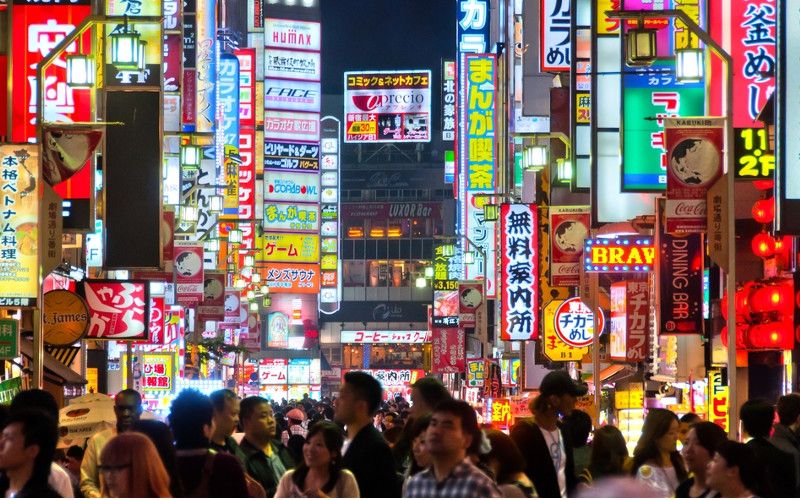
If you’re planning a trip to Japan , you may at first feel overwhelmed by the vast amount of exciting cities, stunning natural landscapes, and unique historical attractions to visit.
Fortunately, we’ve compiled this handy Japan guide to help you make informed decisions about what you want to get out of your trip, how to prepare, and the services and facilities that may be useful to you during your stay.
You can use the following travel guide to help you plan your itinerary in the country, compile your packing list, and learn more about Japanese customs and lifestyle in general.
When you should travel to Japan
The best time to visit Japan is subjective and depends on what you want to get out of your trip. See the following advice for traveling to Japan depending on the season :
- Spring – The stunning colors of the sakura cherry blossom season draw many foreign visitors to Japan in spring. However, this is can result in large crowds at the parks and shines where the cherry trees can be found. Furthermore, Golden Week , one of the main Japanese holidays , takes place from late April to early May, and is considered one of the worst times to visit Japan because public transportation can be incredibly crowded and prices tend to be at their highest.
- Summer – A great time to take part in outdoor activities in Japan and enjoy a number of matsuri festivals . Although summer is the rainy season across much of the country, the rain rarely affects travel plans, and most of Japan experiences hot and humid weather.
- Autumn – One of the least crowded times to visit Japan, although the popular tradition of koyo autumn leaf viewing can also draw large crowds in November. However, early December still allows plenty of opportunities to take part in this pastime.
- Winter – Those who visit Japan in January, February, or March will find it one of the cheapest and less crowded times to travel to the country. Winter sports enthusiasts will want to take advantage of the excellent powder snow for skiing and Snowboarding in Hokkaido.
Things to know before you travel
Some basic facts that travelers should know before traveling to Japan include:
- The phone number for a medical emergency is 119
- Public restrooms in Japan are readily available and easy to find in prominent tourist attractions, train stations, and department stores
- Trash cans in public spaces are not common , and many Japanese people carry their trash with them during the day to later dispose of at home
- It is normally necessary to remove shoes before entering a Japanese home , as well as in some public establishments
- Japanese streets are not named with the exception of major roads, and the address system in Japan is based on areas
- Travelers with tattoos are advised is necessary to cover up if planning to visit a public onsen hot spring .
Do I need a visa to travel to Japan?
Travelers from a number of countries, including The United States, the United Kingdom, Canada, Australia, Mexico, and all European Union countries, do not need a Japan tourist visa to enter the country for short stays.
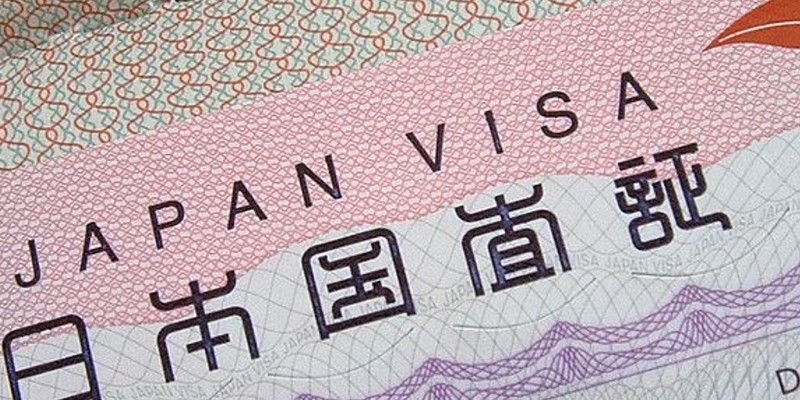
Citizens of these countries receive a temporary visitor stamp in their passport upon arrival in Japan, which guarantees their entry to the country for purposes of tourism. Travelers are required to have this stamp in their passport to be eligible to apply for the JR Pass.
Planning your trip to Japan
When planning a trip to Japan , it’s a good idea to settle on your itinerary and investigate accomodation and travel options for each destination in advance.
Below you’ll find an extensive list of travel tips for the country, including how to access WiFi in Japan, basic Japanese etiquette and common phrases you should learn, and how to travel with a JR Pass.
Accommodation
If you’re traveling to Japan on a budget , an excellent accomodation option is to stay in a sleep pod in a Japanese capsule hotel .
Although the sleeping capsules in the unique ‘ pod hotels ’ are smaller than a regular-sized hotel room, these establishments are usually ultra-modern and very comfortable, and may also offer luxury facilities such as a sauna and a spa.
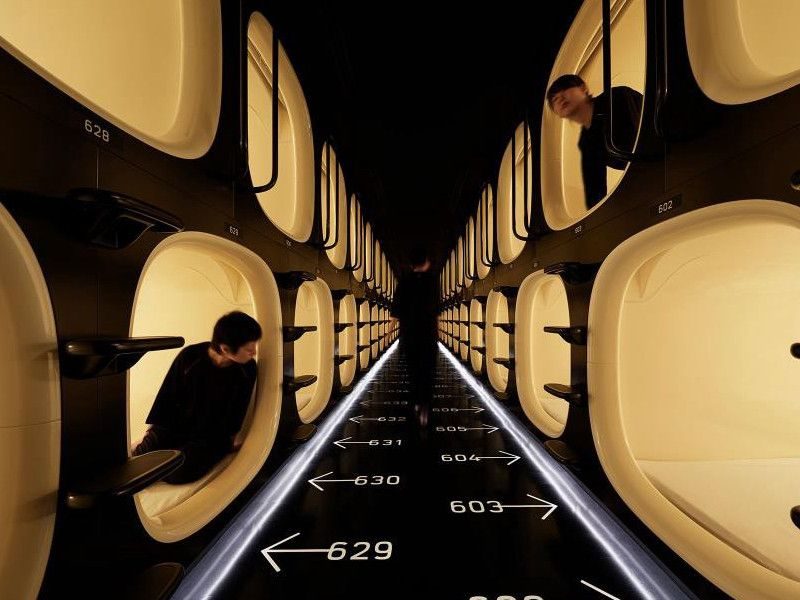
Travelers willing to spend a little more to experience traditional Japanese accommodation should consider staying in a Ryokan (Japanese guest house).
Although a Ryokan may cost a little more than a regular hotel (typically between ¥15,000 and ¥25,000 per person, per night), many visitors feel that it is worth it for the traditional Japanese experience.
The Japan Rail Pass is a must-have for all visitors planning to travel around Japan.
The JR Pass is multi-use, discounted ticket that allows unlimited access to trains operated by Japan Rail National, as well as JR bus services, ferry services, and airport transfers .
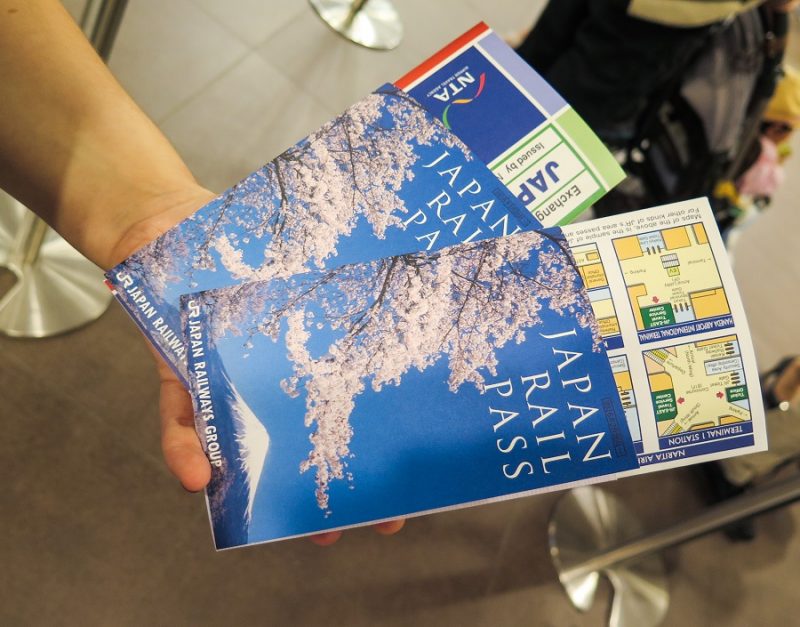
The Japan rail pass is worth obtaining even if you don’t plan on traveling extensively within the country, as this cost-effective travel option for the whole country is around the same price as a single ticket from Tokyo to Kyoto on a Shinkansen bullet train .
Book your Japan Rail Pass now
If you don’t plan on leaving Tokyo during your stay, you may want to consider applying for a Japanese IC card , a prepaid rechargeable travel card which can be used on trains, metros, buses, ferries, and cable cars within the city.
An IC card may also be used at certain restaurants, vending machines, and convenience stores throughout Japan. IC Cards can be purchased from an automated kiosk or ticket counter or at any major train station
Whether you are planning to visit Japan for a week or up to a month , there are a number of comprehensive Japanese routes and itineraries available to help you see everything you want to take in during your trip.
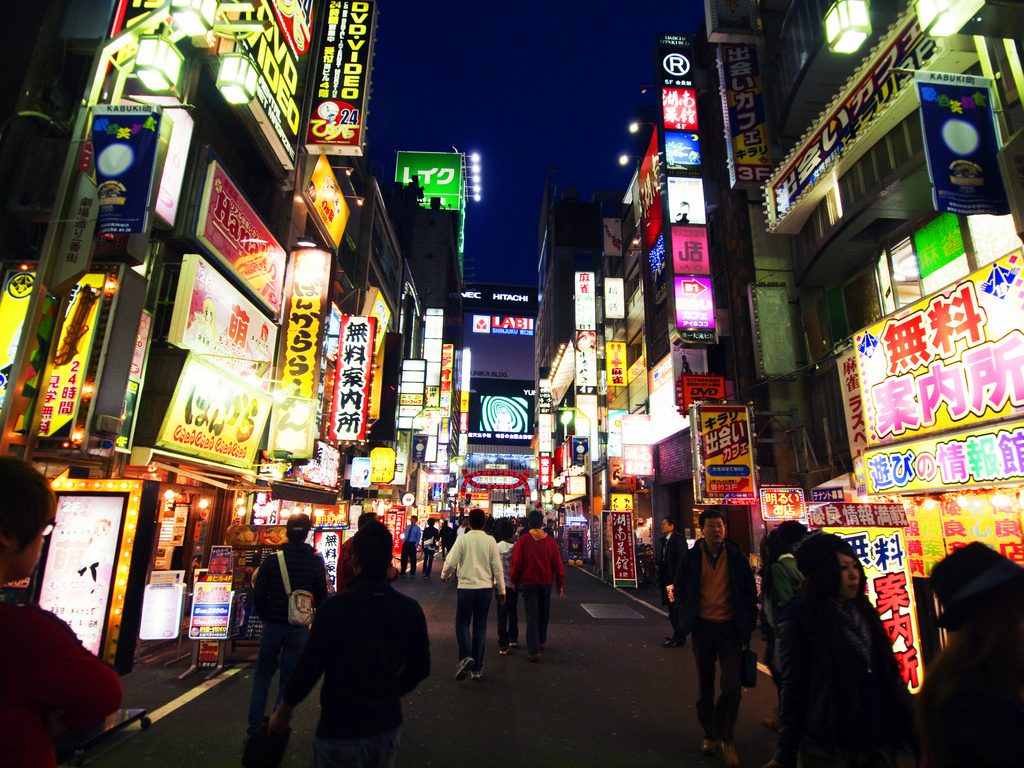
Apart from the itineraries for attractions in individual cities such as Tokyo , Kyoto , and Osaka , the following routes can help you get around come of the most appealing areas of the country in the time you have available:
- 7 days – Tokyo highlights, Kamakura , Kyoto, and the Todaiji Buddha statue in Nara
- 10 days – Tokyo, Takayama , Japanese Alps, Kyoto, Nara, and Osaka
- 14 days – Kyoto, Osaka, Nara, Hiroshima , Miyajima, Fukuoka , and the best attractions to visit in Tokyo
- 21 days – An in-depth itinerary including Tokyo, Kyoto, Takayama, Osaka, Nara, Okayama , and Hiroshima.
Phone and internet access
Travelers to Japan can gain internet access in a variety of ways. Upon arrival in the country, it’s a good idea to download the Japan Connected phone app, which indicates where you can find free WiFi at over 1,500 hotspots in Japan.

If you need to constantly access high-speed internet while on your travels, it is advisable to rent a pocket WiFi router, to which up to 5 devices can be connected. A pocket WiFi can be rented for between 5-30 days and can be picked up on arrival at a Japanese airport or from your hotel.
You also have the option to rent a Data SIM card to access the internet while in Japan, which permits you to use up to 500 MB of high-speed internet per day.
Dos and don’ts
Before visiting the country, you should learn the basic rules of Japanese etiquette to show respect to local customs and traditions .
Some common ‘Do’s include:
- Bowing as a greeting
- Taking shoes off when entering a Japanese home
- Showing appreciation for a home-cooked meal.
While in Japan, visitors should not :
- Point using chopsticks
- Blow their nose in a public place
- Wear inappropriate clothing when visiting temples and shrines.
Learn some Japanese phrases
While you may meet Japanese people who speak English while traveling in the country, it’s still a good idea to learn some basic Japanese phrases to help you get by. Locals will also appreciate the effort .
Some common phrases that are good to know include:
- Konnichiwa – “Hello”
- Ogenki desuka? – “How are you?”
- Sumimasen – “Excuse me”
- Kudasai – “Please”
- Arigato – “Thank you”
Bring some cash and look for 7-11
As not all of ATMs in Japan accept credit or debit cards issued overseas, it’s a good idea to bring some cash currency with you when traveling to the country.
Nevertheless, there are over 30,000 ATM locations across Japan that do cater to international travelers. This includes over 10,000 ATMs at Seven-Eleven convenience stores across Japan, where foreign cards such as Visa, Plus, American Express, Cirrus, and others are accepted.
Familiarize yourself with Hyperdia
Hyperdia is a useful transport planning mobile and web app which allows you to plan your itinerary to travel around Japan by train with precision.
Travelers who download Hyperdia have direct access to up-to-date schedules, journey times, and train information and prices. The app also allows you to access links to useful services in the selected locations, such as car rental companies, hotels, and restaurants.
Useful travel apps
Besides Hyperdia, there are a number of other travel apps for Japan which visitors may find useful during their visit to the country. These include a variety of apps to translate Japanese into English, to navigate the metro systems in the major cities, and restaurant and hotel-finder apps.
Don’t miss while in Japan
If you’re only planning a short stay in Japan, you should make sure you fill your itinerary with the top attractions and most typical traditional experiences. Find below some suggestions.
These small traditional inns are usually run by the same family for generations, and are typically located close to onsen hot springs or public baths in appealing natural surroundings. Most Ryokans in Japanese cities also have dedicated indoor bathing facilities.
The Gora Kadan in the Hakone region, Tamahan Ryokan in Kyoto, and Sadachiyo Ryokan in Tokyo are considered some of the best Ryokan in Japan .
These natural hot springs , fueled by volcanic activity, are perfect for taking a soothing, warming dip in the winter months, and are usually located close to Ryokan guest houses.
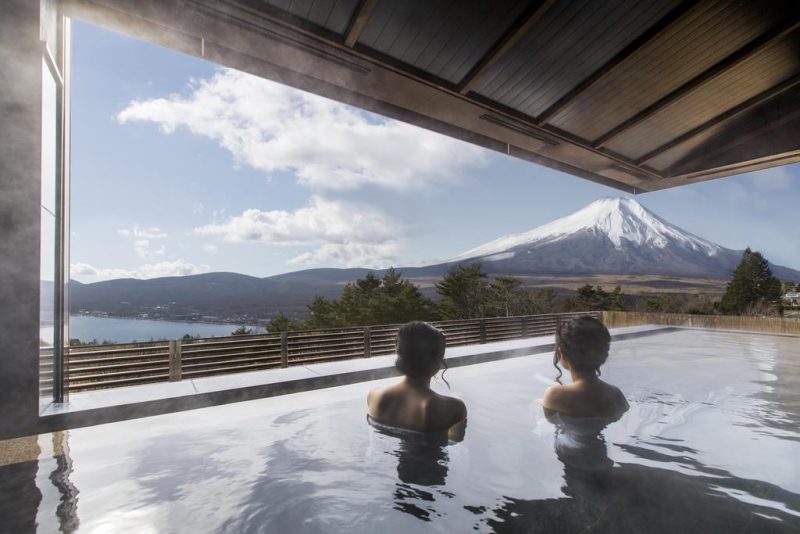
Onsen in Japan you should consider visiting during your stay include Kusatsu Onsen in Gunma Prefecture, any of the luxury onsen in Hakone , and the Noboribetsu Onsen in Hokkaido.
Cherry blossom
The Japanese cherry blossom , known as sakura , is one of the main attractions for travelers to Japan during the spring months, and sees Japanese parks and shrines come to life with the spectacular blooming of pink and white cherry flowers.
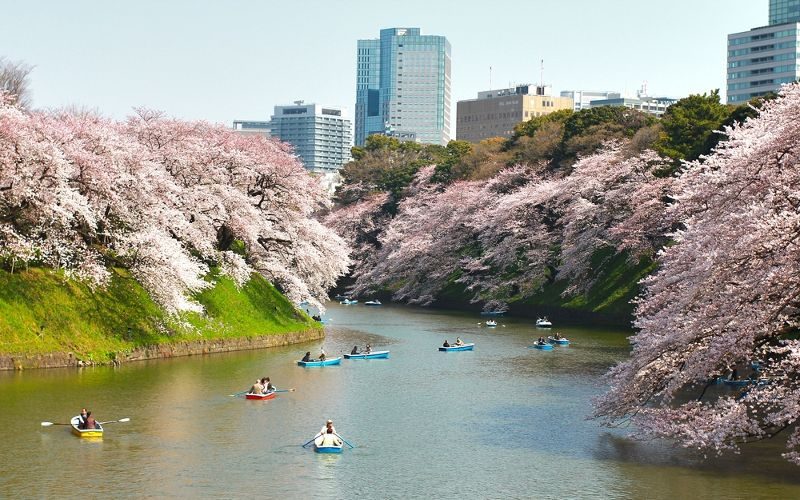
If having a picnic under the blooming cherry trees or taking part in a cherry blossom festival appeals to you, you should check the yearly Cherry blossom forecast before planning your trip to get the timings right.
In Japan, the phenomenon of the autumn leaves changing into vibrant shades of red, yellow, orange, and brown is called momiji , which means ‘ red leaf’, and can be just as stunning as the spring cherry blossom.
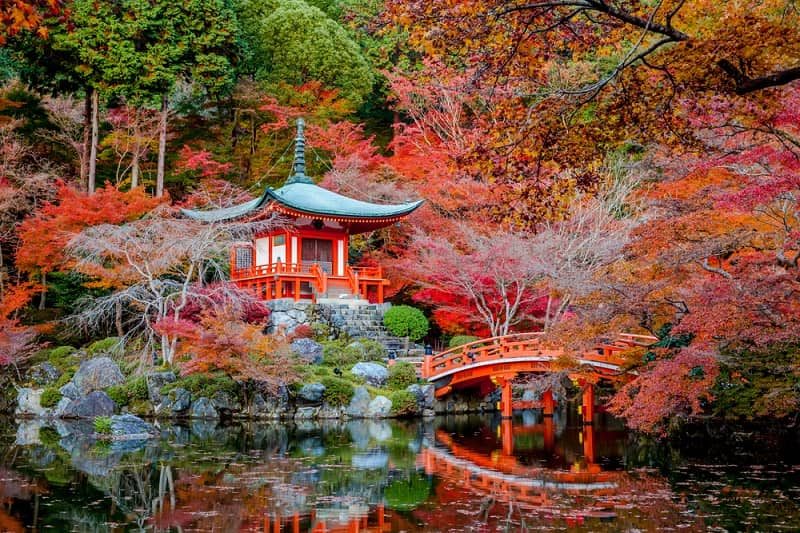
The act of Momijigari (red leaf hunting) reaches its peak in November , but in some regions the leaves can start turning as early as September or much later in the season, in December. Check the yearly Autumn leaves forecast to make sure you don’t miss out on the phenomenon.
Ride the Shinkansen
Using the Shinkansen network is the fastest and most convenient way to get around Japan, with the high-speed trains capable of reaching up to 320 km/h (199mp/h).
The Shinkansen lines are extensive and cover the majority of Japan , from Tokyo to Osaka and the south, to the northern parts of Honshu and the entirety of the island of Hokkaido.
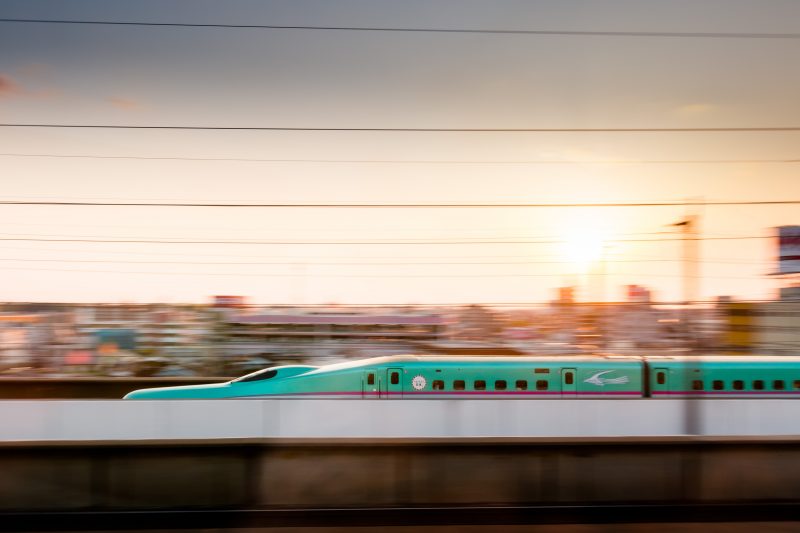
Holders of the JR Pass are granted unlimited access to all of the Shinkansen bullet trains during its validity. From October 2023, you can also ride the Nozomi and Mizuho Shinkansen if you pay a supplement. These run on the Tokaido, Sanyo, and Kyushu Shinkansen lines.
Top destinations in Japan
You may feel as though there are an overwhelming number of places to visit during your stay in Japan. While this may be true, there are certain cities and natural landscapes you really can’t msis during your trip, including:
Japanese top attractions
While there a vast number of enticing historical and cultural attractions in Japan to discover during a visit, if you are only planning a short trip you might want to consider prioritizing some of the following:
- Tokyo Imperial Palace
- The Chureito Pagoda overlooking Mt. Fuji
- The Fushimi Inari Taisha Shrine in Kyoto
- Osaka Castle
- Arashiyama bamboo forest near Kyoto
Of course, this is just a small sample of the many unique attractions in Japan, and if you’re planning a long trip the country, you’ll be able to discover much, much more.
Related posts
Related tours & activities.
How To Plan the Perfect Trip to Japan: A Comprehensive Guide
Japan is one of the most enchanting places in the world to visit, so it’s no surprise you’ve landed on Japan as your next destination. When you plan a trip to Japan, it’s important to consider important factors like location, flights, budget, how long you want to stay, and which places are at the top of your Japan must-sees. From the bustling streets of Tokyo to the serene temples in Kyoto , a diverse range of attractions and experiences await you in Japan. Every traveler has unique needs, so whether you’re traveling solo, with family or friends, have limited time or are looking to plan an extended stay, this guide has everything you need to know about planning your dream trip to Japan.
1) Decide How Long Your Japan Trip Will Be

The first step in planning a trip to Japan is deciding how long you’ll be staying. Whether you have a week or a month, Japan has plenty to offer, but it’s crucial to strike a balance between exploring different regions and not rushing through this special experience. The length of your visit can significantly impact your Japan itinerary and budget.
- Short Trip (1-2 weeks): If you have limited time, focus on specific regions or cities to make the most of your stay. Consider exploring the iconic Tokyo and Kyoto for a mix of modern and traditional Japanese experiences. For travelers on a limited timeframe, taking a multi-day package tour like this 10 Day Best of Japa n Tour Package is recommended to help you get around and see all the sights, while maximizing your short stay in Japan.
- Medium Trip (2-3 weeks): With a bit more time, you can venture further into the country, adding destinations like Hiroshima , Osaka , and Nara to your itinerary. This is the perfect amount of time to complete the popular Japan Golden Route which starts in Tokyo and ends in Kyoto.
- Extended Trip (3+ weeks): For an extended stay, you can explore Japan more thoroughly, including less-visited but just as stunning areas like Hokkaido , the Japanese Alps and the Chubu region to your trip, on top of all the classic must-sees in Tokyo and Kyoto. This extended option offers a well-rounded experience of Japan’s diverse landscapes and culture.
2) Create a Budget for Your Trip to Japan

Before you dive into planning your trip, it’s crucial to establish a realistic budget. Japan is often perceived as an expensive destination, but with careful planning, you can manage your expenses effectively. In general, you should budget to spend at least $100 per day during your trip in Japan for all your expenses including nice accommodation. For a cheaper trip, you can opt for hostels, capsule hotels, and other budget options. These are all things you should keep in mind while you save for your trip to Japan:
- Flights: Depending on where you’re coming from, Japan can be a long way away and your flight may take up a significant part of your budget. Consider flying off-season, or breaking your flight up into multiple stops if you’re looking to cut costs. Use flight comparison sights like Google Flights to help you find the cheapest way to fly.
- Food: Japanese cuisine is a highlight of any trip. You can enjoy budget-friendly street food or indulge in Michelin-starred restaurants. Allocate a portion of your budget for dining experiences. If you don’t have much left in your budget for food, you could choose to indulge in one or two authentic food experiences and enjoy delicious and affordable street food for the rest of your stay.
- Accommodation: Determine your accommodation preferences, whether it’s staying in luxurious hotels, budget-friendly hostels, or traditional ryokans . Prices vary significantly, so research and book in advance to secure good deals.
- Transportation: Decide whether you’ll invest in a Japan Rail Pass for extensive train travel or use regional passes and local transportation. Calculate transportation costs between cities in advance.
- Activities: Make a list of activities and attractions you want to visit, and estimate entrance fees, tours, and cultural experiences.
- Miscellaneous Expenses: Don’t forget to include costs for travel insurance, SIM cards or pocket WiFi, and shopping souvenirs.
Pro-Tip for Cost Efficient Travel
To cut costs, consider joining a guided multi-day tour of Japan . This option can take care of transportation, accommodation, some food, and activities with one purchase, and is often more cost effective than booking each thing separately. This 8 day tour of Kyoto, Tokyo, Osaka, and Nara is an excellent and affordable option to see all the unmissable sites in Japan. Alternatively, you can browse all our Japan package tours for a range of lengths and visiting locations.
See all Japan Tour Packages
3) What Time of Year Do You Wish to Travel?

Japan experiences distinct seasons, each with its unique charm. The time of year you choose to visit will determine the climate, festivals, and the availability of certain activities. Keep in mind that cherry blossom season (Sakura) and autumn foliage (Koyo) are especially popular times to visit.
- Spring (March to May): Spring in Japan is famous for cherry blossoms . If you’re interested in witnessing these beautiful flowers in full bloom, plan your trip from late March to early April, and base your trip around the top places to see the Sakura . The weather is mild, making it the perfect time for outdoor activities. For recommendations during this time, check out our guides to Japan in March , April , or May .
- Summer (June to August): Summer can be hot and humid, especially in cities like Tokyo and Osaka. This is a great time for indoor activities like food tours and exploring temples. Hokkaido offers relief from the heat with its cooler temperatures. Browse through our monthly guides for more information about Japan in June , July, or August.
- Autumn (September to November): Autumn brings stunning foliage and pleasant weather. It’s a fantastic time for hiking! Among our favorite autumn activities is enjoying the changing leaves in picture-perfect Takayama in the Japanese alps.
- Winter (December to February): Winter is ideal for skiing and enjoying hot springs (onsen) in places like the Gifu prefecture. There’s nothing like sinking into this natural heated pool in the heart of the Japanese Alps! Of course, Japan’s most popular places, Tokyo and Kyoto, also have their unique winter flavor .
4) Build Your Trip Around Special Experiences
View this post on Instagram A post shared by Tourist Japan (@tourist__japan)
Japan offers a wide range of experiences, from cultural immersion to outdoor adventures. Tailor your itinerary around your interests and the season of your visit. Decide what side of Japan you wish to prioritize during your stay:
- Cultural Experiences: Participate in a tea ceremony , visit traditional temples and shrines , or explore the ancient art of calligraphy. Kyoto is particularly famous for its rich cultural heritage.
See all cultural tours
- Outdoor Adventures: Hike the beautiful trails in the Japanese Alps, visit the breathtaking Mount Fuji , go skiing in Niseko, or relax in an onsen with stunning mountain views.
See all nature tours
- City Exploration: Tokyo, Osaka, and Kyoto offer a mix of modern and historic attractions. Explore Tokyo Disneyland , experience the nightlife of Osaka, and visit Kyoto’s UNESCO World Heritage Sites .
See all city tours
- Foodie Adventures: Savor sushi at Tsukiji Fish Market in Tokyo , try street food in Osaka’s Dotonbori, and sample kaiseki (traditional multi-course) dining in Kyoto. Can’t decide which is best for you? Check out our list of the best food tours in Japan .
See all food tours
5) Book Day Trips from Japan’s Main Cities

While exploring Japan’s major cities is a must, consider adding day trips to your itinerary for a more well-rounded experience. Here are a few day trip ideas from Tokyo, Kyoto, and Osaka:
- From Tokyo: Visit Nikko to see the Toshogu Shrine, ascend the iconic Mount Fuji , take a trip from Tokyo to Kamakura to see the Great Buddha , or explore the charming streets of Harajuku.
See all tours from Tokyo
- From Kyoto: Explore Nara to see the friendly deer and ancient temples, visit Hiroshima and its Peace Memorial Park, or spend the day temple hopping inside Kyoto.
See all tours from Kyoto
- From Osaka: Visit the iconic Osaka castle or explore the city’s wonderful food markets.
See all tours from Osaka
Have Fun in Japan!
Finally, don’t forget to enjoy your trip to Japan to the fullest. Embrace the culture, try new foods, and immerse yourself in the beauty and traditions of this incredible country. Be open to serendipitous discoveries, make new friends on day trips , and create lasting memories!
In conclusion, planning a trip to Japan can be a rewarding experience when approached with thoughtful consideration. By deciding on the duration, timing, budget, experiences, and logistics of your journey, you’ll be well-prepared to embark on an unforgettable Eastern adventure. So, start planning, pack your bags , book your travel insurance , and get ready for an incredible journey through Japan’s rich history, vibrant culture, and stunning landscapes you won’t find anywhere else.
Subscribe for insider tips to Japan Enter your email address to stay in-the-know of what's new in Japan. We promise to only send you guides to the best experiences. Email Keep Me Updated
Recommended

Related Articles

The Japan Golden Route: Everything To Know

Japan in May 2024

Japan in April 2024

Japan in March 2024

The Three Wise Monkeys of Toshogu Shrine in Nikko

Tips for Climbing Mount Fuji

The Tokyo Bucket List – Top Things To Do in Tokyo

Spa & Wellness in Tokyo

Top Experiences in Japan

Cultural Guide to Japan

How to Plan a Trip to Japan: a Step By Step Guide
By: Author Kris
Posted on Last updated: December 6, 2023
Wonder how to plan a trip to Japan? If you don’t know where to start, or how to plan a trip to Japan, you have come to the right place.
Planning a trip to Japan, a country with a completely different culture, an unintelligible language, and several stretched-out megacities, can be a little overwhelming.
But let me reassure you immediately, it is very easy to travel independently in this country.
Japanese are welcoming, helpful, and well-organized. You will find yourself at home in this country in no time.
In this Japan travel blog post, we will explain step by step how to get started with your Japan trip planning.
We share a lot of travel tips for Japan, how to get to the country of the rising sun, where to stay, all of the best things to do for first-timers, and everything else you need to know to craft a perfect holiday.
We have some example itineraries to get you started, we will cover what to pack and the best travel time.
We also mapped some things against a timeline so you know how far in advance you should take care of some of the more important things.
This step-by-step guide is also handy if you are only planning a trip to Tokyo, Kyoto, or Osaka.
Ready? Let’s start working on this amazing Japan trip!
There is a really good chance that this post contains affiliate links. If you click one of them, we may receive a small commission (for which we are deeply grateful) at no extra cost to you.
Table of Contents

When to Visit Japan
A good item to start your planning with is to record your travel period. Once you’ve decided on a certain period you can start looking for flights.
Below is an overview of the different seasons in Japan with the pros and cons of each season.
Best Time to Travel to Japan
Japan is a long and narrow, stretched-out country. It has a mountainous region in the North that attracts skiers in winter. The Southern island of Okinawa is a popular beach location and scuba divers are raving about its untouched colorful underwater world.
The most popular tourist hotspots of Tokyo and Kyoto are located between those two regions.
The best time to travel to Japan obviously depends on your interests and the region you want to visit.
The best time to travel to Japan for first-time visitors who want to see the highlights of the country is Spring and Autumn.
We would advise against traveling in summer because the cities are very hot and humid in this season.
The Sakura is a bonus of traveling in Spring, the cherry blossoms are an attraction in and by themselves.
Here are some more details about the different seasons.

Spring is an excellent season to visit Japan. Certainly, if you can arrange your plans to coincide with the so-called Sakura, the famous cherry blossoms.
The cherry trees start blooming in the South of Japan and gradually transform the entire country into a colorful floral display.
The northern peninsula of Hokkaido is the last to showcase its beautiful colors.
It’s difficult to predict exactly when the flowers will bloom.
You can check the predictions and forecasts on the site of the Japanese tourist board and the Japanese Meteorological Corporation. The predictions become more accurate as the date approaches and they’re not really useful at this stage of your travel planning.
The period can vary a few weeks every year. It’s best to plan your trip across the country in a southerly direction. It guarantees that you will see the blossoms at their best in at least one location.
We witnessed this glorious natural phenomenon in Tokyo , Kyoto, and Osaka. The cherry blossoms attract huge numbers of people all over the country, the Japanese even organize Hanami in the parks. (A Hanami is a flower-viewing party)
You can see cherry blossoms all over the world, but the atmosphere in Japan during this time of year is one you won’t find anywhere else.
The Sakura blossoms draw in large crowds, so this is a busy and somewhat more expensive time to travel to Japan.
Right after the Sakura Season is another busy travel week, the “Golden Week”. It is formed by 4 national holidays, the first of which is Emperor day on April 29. The other days are Constitution day on May 3, Greenery day on May 4, and Children’s day on May 5.
Many Japanese take advantage of this period to explore their own country, which makes the popular tourist attractions much busier than usual. This, in turn, causes the hotel rates to increase as well.
Temperatures will range from 15 degrees Celcius to 25 degrees Celcius. In March and April, you may experience an occasional shower, during May it starts raining more often and more heavily.
Insider tip: Did you know that we also have a travel planner that you can download and use for your trip planning? Check out our Japan travel planner ! This document will help you plan your trip smoothly.

Summers in Japan are warm with temperatures that often exceed 30 degrees Celsius. The humidity makes the wind chill even higher and unenjoyable if you’re not used to tropical climates.
The cities are always crowded and the combination of this bustling activity and such a high temperature can make exploring these concrete jungles unpleasant during this season.
June and July statistically know the most rainfall. This applies to most of the country, only the northern peninsula of Hokkaido is mainly spared from the downpours.
The rainy season starts and ends a month earlier in Okinawa where most rainfall is measured in the months of May and June.
It doesn’t rain every day in the rainy season. Some days are dry, while some days have light rain and other days come with massive downpours.
It’s difficult to predict, but as a rule of thumb, one can say that it will rain roughly every other day.
The benefit of traveling through Japan during this time of year is that the popular tourist sites, where otherwise you’d be part of a huge crowd, are much less busy.
Even after the rainy season has come to an end the weather remains hot and humid.
The official typhoon season starts in May, but the typhoons that can disrupt everyday life are most common in the months of August and September.
Only a few severe storms reach the Japanese mainland and the storms are also very predictable. This means that it is not necessary to avoid this period. It’s sufficient to watch the weather forecast to know when you shouldn’t go outside.
That being said, heavy rainfall does have the potential to cripple public transportation, while temples and amusement parks are sometimes closed during strong winds or sudden floods.
Many Natsumatsuri are organized in Summer.
A Natsumatsuri is a summer festival. It’s a cause for Japanese women to get their colorful Yukata out of the closet. Huge crowds gather around the food and drink stalls and watch the fireworks together.
If you’re in Japan during Summer you must definitely join these celebrations.
If you’re not a fan of warm and humid summer weather, you could still always go to Hokkaido. This is the only region with summer temperatures around 20 degrees Celsius (68 degrees Fahrenheit).

Fall is another great time to travel to Japan.
Japan is home to many expansive parks and forests, and the fall colors transform them into a gorgeous and colorful palette.
The fall foliage craze is no match for the popularity of the Sakura but that couldn’t stop the Japanese from giving it a special word: Koyo.
The best period to admire the amazing Koyo colors depends on the weather conditions and the location. Japan is fairly big and the peak period differs significantly between the different regions.
Japan’s official tourism website has an Autumn leaves guide. You can track the Koyo predictions just like you can track the cherry blossoms.
Autumn temperatures start around 26 degrees Celcius. When you visit Japan in October, you’ll normally still be able to enjoy pleasant temperatures that exceed 20 degrees Celsius. During the month of November, the temperature drops below 20 degrees Celcius to 15 degrees Celcius.
Although November is a bit cooler, it still counts plenty of sunny days to enjoy.
This makes both October and November pleasant and comfortable months to travel to Japan.

Winter announces the low season in most parts of Japan. Only Hokkaido, with its many ski resorts, experiences a peak in tourism during this season.
Temperatures in Hokkaido range around 0 degrees Celcius. In central and South Japan it is around 10 degrees Celcius.
Some melting snow may fall in Tokyo during January and February, but the snow typically doesn’t stick around very long.
This is an atypical time to visit Japan, but the country does have some fun things to offer in winter. Great examples are the snow monkeys that you can see bathing in the onsen. You can also visit idyllic villages such as Shirakawa-go that are very enchanting when they’re covered by a layer of fresh snow.
The Japanese brighten up these cold months with various winter festivals featuring ice sculptures and fairytale-like lights. The most famous of those is the Sapporo Snow Festival.
General Do’s and Don’ts in Japan
It is clear that etiquette is still an important element of everyday life to the Japanese. They are some of the most courteous, helpful, and respectful people we’ve come across.
That was one of the aspects that made our trip so unforgettable.
You are certainly not supposed to comply with all their etiquette rules as a tourist, but the least you can do is try to return the favor.
Soaking in an onsen is one thing you absolutely must do while in Japan, but please read a little about basic onsen etiquette before you do.
Also, try your best at learning a little Japanese so you can say thank you and please when the locals help you out when you ever get lost in one of the huge train stations. (it happened to us a few times)
If you’re staying in a Ryokan, something we also recommend, it’s also good to read a little in preparation so that you know what to expect.
A Ryokan stay is an excellent way to experience Japanese tradition but you will enjoy it so much more if you understand the typical customs that come with such a stay.
They will provide you with slippers and a Yukata to wear around the property and Ryokans usually also have an onsen.
Are you afraid to cut a silly figure? Don’t let this stop you from staying a Ryokan and remember that you can always ask the owners about their house rules.
Intrigued by what we write above? Here you can find all our ryokans posts:
- Best Ryokan with private onsen in Kyoto
- Best Ryokans in Osaka
- 20 best Ryokans with private onsen in Hakone
- Best Ryokans in Kanazawa
Different cultures have different eating etiquette and it won’t come as a surprise that Japan also has a number of rules about eating with chopsticks. If there’s one thing you absolutely must remember, it’s that you shouldn’t place your sticks vertically in food, which is associated with death.
Did you come here expecting a list of things absolutely not to miss in Japan? We’ve got that too. Here is our Japan bucket list and famous landmarks you shouldn’t miss !
How Many Days in Japan
There’s no easy answer to this question. As Japan lovers, we recommend that you go as long as possible. 🙂
Japan is a country of contrasts. From the bustling city of Tokyo to the stillness of a Zen garden, from the neon-lit nightlife to the serene beauty of Kyoto. There is enough variation in the various sights so that traveling around Japan isn’t boring or repetitive.
To truly appreciate Japan, and its people, we recommend taking at least two weeks to explore this fascinating country.
We have carefully mapped out 5-day, 7-day, 2-week , and 3-week itineraries specifically aimed at first-time visitors.
If you want to make a city trip, check out Tokyo is the perfect destination for a 4 or 5-day city trip .
And if you have a week you can visit Tokyo and make some side trips to nearby places such as Hakone and Nikko or even Kyoto and Osaka.
Check out this list of example itineraries for various destinations in Japan
Japan Trip Cost
Japan is not the cheapest country to explore but some good planning can save you a lot of money. Hotels will take the largest chunk out of your travel budget. You can save a lot of money by booking these several months in advance.
Transportation is the second-largest cost item. Oftentimes you can save on this by using local discount passes or special tourist passes. The most well-known is the Japan Rail Pass but we also cover other passes on our site such as the Tokyo Metro Pass (Tokyo Subway Ticket) and the Hakone Free Pass .
Food is relatively cheap in Japan. We spent an average of €12 per day per person on food. (That is excluding breakfast which was usually included in our hotel rate)
We go into much more detail about the cost of these 3 items in our Japan Travel Guide .
Your Japan Trip Planning
Once you know when you will be traveling you can start working on your Japan itinerary.
Here we share a complete timeline.
The Timeline for Your Japan Trip Planning
6 months in advance
Book international flights
Get travel insurance Plan your itinerary Check if you need a Visa
About 3 months in advance
Book your Japan Rail Pass Book domestic flights
1 month in advance
Internet in Japan Book Tours and other Fun Experiences
1 week in advance
What to pack
6 Months in Advance
Join our japan facebook group.
Be sure to become a member of our Japan Travel Planning and Tips Facebook group.
The purpose of this group is to help you plan an amazing vacation to Japan.
You can ask questions and exchange tips with fellow travelers.
Cheap Flights to Japan
We recommend that you start looking for flights as soon as your travel dates are fixed. Prices for flights fluctuate continuously and it’s hard to predict when is the best time to buy.
Tickets can be booked one year out until the very last day and over the course of this period, the price follows a stretched-out U curve.
Prices start high to drop gradually to a low point, and from there on they start rising again.
Everybody knows it’s expensive to wait until the very last minute but nobody knows the exact low point.
Usually, this is 4 to 6 months out for intercontinental flights. We recommend tracking the price of your flights before you book.
These days such tracking functionalities are available on all major booking sites (some sites call them price alerts).
You can also use the insights provided by websites such as Momondo to get a clue about what the price will do.

Here are some tips to find cheap flights to Japan
- Use travel comparison sites such as Momondo , Skyscanner , and Kayak to instantly compare the prices on hundreds of sites. Direct flights are almost always more expensive.
- Japan has 2 excellent airlines. Japan Airlines (JAL) and All Nippon Airways (ANA). Both are recognized by Skytrax as 5-star airlines for their outstanding service. You will notice that, because of this award, their flights are often more expensive.
- Chinese carriers often offer rock-bottom prices to Japan with a stop in Shanghai or another Chinese hub. We flew with China Eastern and thought the service was equally good as what we have experienced on many other European carriers.
- Japan counts several airports. Make sure to compare prices to all these airports when you’re looking for flights: Narita and Haneda in Tokyo, Kansai and Itami Airport in Osaka, and Chubu Airport in Nagoya.
- Twice yearly we compare several travel booking sites to see which one offers the best flights. You can check the results here .
Travel Insurance
Flights to Japan are no longer as expensive as a few years ago but they still take a big chunk out of your budget.
That’s why we recommend taking out travel insurance as soon as these are booked.
Insurances only cover accidents that occur after taking out and you don’t want to lose this money in case things suddenly turn awry.
Such accidents happen when you least expect them.
We once couldn’t leave on vacation because one of us slipped on an icy terrace and severely bruised an ankle.
Our travel insurance saved us a lot of money back then because it was a complete family trip that needed to be canceled.
Travel Insurance is something that can be overlooked when you prepare for your vacation.
We were glad we had it back then because, in all honesty, we didn’t always think about it before then.
Since then we always make sure that our travel expenses are covered.
Travel Insurance for Japan
Japan is a safe and civilized country. The country has an excellent healthcare system that is free for most residents but the costs of medical treatments can be extremely high for foreigners.
Drawing up a travel insurance policy may seem expensive at first but it can potentially save you a significant sum, significantly more than the small insurance fee.
We explain what to look for in your travel insurance policy here . Don’t just go with the cheapest option, make sure to look at what’s covered and to what amount. Cheaper policies usually come with low limits which can result in high out-of-the-pocket expenses for you.
Most travel insurance policies are usually aimed at residents of a specific country.
Have a look at what’s available in your country and compare this with what’s offered by SafetyWing and HeyMondo travel insurance.
Both are good and trusted insurance companies and offer really good protection for a very affordable rate!

Passports and Visas
Most people won’t need a visa when traveling to Japan, at the time of writing residents of 68 countries were exempt from a visa for short-term stays .
If you’re a resident of another country, such as China, the Philippines, or Vietnam amongst others, you will need to apply for a Visa before traveling to Japan.
Your passport needs to be valid for the duration of your stay and not longer. It needs to contain one empty page for the entry stamp.
Health Declaration
Currently, everybody who enters Japan needs to have a health declaration. This declaration can be completed online on the Visit Japan Web site. You need to create an account, enter your passport and flight details, and add proof of vaccination (or a recent test certificate).
At the time of writing Japan requires visitors to have at least 3 vaccinations or a test certificate from a test taken a maximum of 72 hours before boarding the flight. (Check the links for the full official guidelines. We always recommend checking the official website as this information can change anytime.)
In the next step, you can add the customs declaration.
This will result in 2 QR codes, one for the health officer and another one to show at customs. the codes will appear at the latest 6 hours after entering the data.
The Japanese government highly recommends using the online application but it is not mandatory. Just having proof of your vaccination or test results is also OK to be allowed in the country.
We recommend using the application as there have been reports of airlines denying boarding passengers without the QR codes. This is overzealous and incorrect on the part of these airlines, but it can give you serious problems.
Plan your travel itinerary
This may be the hardest part of your Japan trip planning but it’s also the most fun and rewarding part.
A good place to start your travel planning is our Japan Guide . This guide contains a mix of inspirational posts about the country complemented by very practical travel information to help you explore the land of the rising sun.
Our articles will keep you busy for several hours. if you still think you miss something have a look at the wide range of books that Lonely Planet has about Japan .
Below is our advice on the things you shouldn’t miss if this is your first trip to Japan.
We have wrapped them up in short here. More on these highlights can be found here .

Japan Highlights – Top Japan Destinations
Tokyo : Japan’s bustling capital is an amazingly fascinating city of which you will never grow tired. You will need 4 to 5 days to get an impression of the various districts. Each district has its own appearance and charm.

9 Best Ryokans in Tokyo With Private Onsen (2024 edition)

Samurai Restaurant, the new Robot Restaurant

Mt. Fuji tour from Tokyo: 9 best tours and tips (2024 guide)

How to use Tokyo’s public transport

10 Best Ryokans in Tokyo You Need To Stay At

10 Best Airbnbs in Tokyo: 2024 Guide

17 Best Onsen Hotels in Tokyo You Need To Stay At

A thrilling Tokyo itinerary for 4 days

Where to stay in Tokyo for the first time?

The Hakone day trip guide that covers everything (2024 edition)

Best Private Mt Fuji Tour: 7 Flexible and Customizable Tours

Planning a Tokyo to Mount Fuji day trip: All you need to know

BEST Tokyo itinerary 7 days suggestions for Tokyo + surroundings

12 best Airbnbs in Tokyo for families in 2024

EPIC Tokyo Itinerary: 5 Days of Unforgettable Adventures

Where to find cheap Robot Restaurant Tickets

The best places to visit in Tokyo

Best sakura spots in Tokyo you don’t want to miss
Kyoto : Kyoto is most tourists’ favorite. Prepare for temples galore, the city counts no less than 1600 temples. 2 days won’t be enough to visit them all but it should be sufficient to see the highlights of Japan’s cultural capital.
You may want to add a third day if you don’t want to feel rushed.

19 Amazing Ryokans in Kyoto in The Best Areas (2024 Guide)

How to find the best Airbnb in Kyoto

15 Best Kyoto Onsen Hotels You Need To Stay At

16 BEST Ryokan with Private Onsen in Kyoto (2024 Edition)

Where to stay in Kyoto: Best areas and hotels for 2024

The BEST Kyoto 2-day itinerary for first-timers (2024 edition)

25 Amazing Things to Do in Kyoto at Night

15 of the coolest hotels in Kyoto

Things to do in Gion at night
Osaka : Osaka is Kyoto’s neighbor. Both cities are just 30 minutes away by train. Despite it being so close many tourists skip Osaka and only visit Kyoto.
We absolutely loved Osaka, it’s also called Japan’s Kitchen, so we strongly recommend reserving 2 days to explore this city.

10 Best Osaka Capsule Hotels You Should Stay At

18 Osaka Hotels With Onsen For A Perfect Stay

Best Osaka Ryokans with Private Onsen (2024 Guide)

How To Find the Best Airbnb in Osaka (2024 Guide)

10 Best Osaka Food Tours For 2024

16 Best Ryokans In Osaka You Need to Stay At (2024 guide)

EPIC Osaka 2-day itinerary: Perfect for first-timers (2024 edition)

Where to stay in Osaka: our best recommendations (2024 guide)
EPIC 1-day Osaka itinerary: Lots of highlights in 1 day

16 BEST things to do in Osaka at night

12 of the coolest hotels in Osaka you have to see
Hiroshima : A city with a dramatic past. We were touched by the stories in the peace museum and also loved nearby Miyajima with its picturesque floating Torii gate and the free-roaming deer.
You can find more info on what to see and what to do in Hiroshima here.
Mt. Fuji : Japan’s iconic volcano is a sight for sore eyes. On clear days the mountain can be seen from the capital but you better not count on that to happen.
In the following articles we explain the best ways to see the mountain with a tour or independently .

Is The Hakone Freepass Worth It in 2024? The Ultimate Guide

14 Amazing Mt Fuji Hotels with Private Onsen

Best Ryokans in Mount Fuji You Need To Stay At

16 Best Hakone Ryokans You Need To Stay At

Hakone 2-Day Itinerary: Epic Hakone Itinerary+ Tips (2024 Guide)

12 Wonderful Airbnbs in Hakone (2024 Guide)

20 Best Ryokan in Hakone with Private Onsen (2024 edition)

The snow monkeys : Being animal lovers this was a true highlight of our trip. The best time to see these cute monkeys is in Winter or early Spring when they’re bathing in the onsen. but it’s also fun to see them in Summer or Autumn. You can visit on your own or join a guided tour from Nagano Station.
Check prices and availability:
Snow monkeys tour GetYourGuide
Snow monkeys tour Viator
Visit an onsen : Living in Japan can be stressful. They have long working hours, a high work ethic, and also something known as Tatemae which means you must be an upstanding, ideal citizen to everyone except maybe your close family. Japanese like to visit an Onsen to find relief after a stressful day. We also enjoyed the warm water after a full day of walking around in the immense cities.

Samurai restaurant : The Samurai restaurant is the new name of the robot restaurant. The robot restaurant was infamous because it was the epitome of Japanese kitsch, you either hated it or you loved it. That is still the case today. Attending this crazy neo-Japanese cabaret show might be one of the highlights of your trip.
Check prices and availability: Samurai Restaurant tickets
Or read our full post about the restaurant here.
Kaiseki dinner : The Japanese kitchen is well-balanced and widely known to provide numerous health benefits. A Kaiseki dinner is Japan’s gastronomy at its best. It’s a multi-course meal made of local fresh ingredients presented in a beautiful pleasing way. It’s a real culinary treat.
Kyoto is a great place to enjoy a Kaiseki dinner. The below-mentioned tour combines a guided walk through Gion with a Kaiseiki diner.
Check prices and availability: Kyoto Evening Gion food tour
A traditional tea ceremony : This is another enjoyable Japanese tradition. It originated in Zen Buddhism and it is bound to strict rules. A lot of places offer tea ceremonies, we suggest doing some homework and not entering the first tea house you pass. Not all ceremonies are equally good.
This is a well-appreciated tea ceremony in Kyoto .
Check prices and availability: Kyoto tea ceremony
Stay in a Ryokan : A Ryokan is a traditional Japanese family hotel. Staying in one can be a real treat as the hosts are usually very accommodating and breakfast and dinner are mouth-watering.
Opt for a small ryokan for the best experience.
The success of Ryokans has attracted larger properties with dozens of rooms but these are nowhere as charming as the small traditional Ryokans where it feels like you’re really a guest staying with the family.
Rent a Kimono : Ideal if you want some great pictures of your trip. Don’t worry that you will stick out, the Japanese put on these traditional clothes for all kinds of festive occasions. We counted loads of Japanese that were taking pictures of the cherry blossoms in their colorful Kimonos.
Here is one address in Kyoto where you can rent a kimono for a day .
Check prices and availability: Kimono rental
Example Japan itineraries
Here are some example itineraries. You can copy them exactly or you can use them as a basis to start with.

Sapporo Winter Itinerary: Enjoy Sapporo in Winter in 2 or 3 Days

What to Do in Hiroshima? Best Activities in 2024

The Perfect 14-Day Japan Travel Itinerary for First Timers

4 Best Japan 7-Day Itinerary Suggestions For First Timers (2024 Guide)

A wonderful Kanazawa itinerary for 2 days

EPIC 3-week itinerary for Japan (perfect for first-timers)

The best Japan 5-day itinerary suggestions for first-timers
Hotels in Japan
Accommodation in the larger cities of Japan can be expensive.
Kyoto takes the cake with prices that can reach $800/night and higher for a standard room in a 4-star hotel in the high season.
Prices in Tokyo and Osaka skyrocket as well in peak season, albeit slightly less.
It’s good practice to be prepared and book your rooms as soon as you’ve got your Japan itinerary fixed.
Don’t be put off by the above prices. If you plan in time and compare different hotels, you can also book very good hotels for quite a bit less. We traveled through Japan during the cherry blossom season, an expensive period to be in Japan, and paid on average €105/night for our hotels.
We stayed in a combination of Ryokans and 3 or 4-star hotels. All were well-maintained and very clean.

Best Booking Sites for Japan
It’s easy to book the hotels for your trip online. These are the sites we used:
Booking.com
Who doesn’t know Booking.com ? What else do I need to say?
Less popular but equally trustworthy is Agoda. It is also part of the Booking.com group. Agoda originated in Asia and it will sometimes show better rates for Asian hotels. We also found some Ryokans on Agoda that couldn’t be booked on Booking.com
Apartments and Houses
Hotel rooms in Japan can be on the small side. Certainly in the megacities of Tokyo and Osaka.
If you’re traveling with children or friends it might be better to look for an apartment instead. We recommend renting through VRBO, Booking, and Airbnb.
And don’t worry, Airbnb is completely legal in Japan.
Here is an overview of the best Airbnb’s in Tokyo. If you are traveling to Tokyo with your family, check out this post.
If you are looking for apartments and houses in Kyoto, click here.
Those that are traveling to Osaka can find a selection of apartments and houses here.

Special Accommodations
We already shortly talked about ryokans in this article, here are some other options for an original overnight stay in Japan.
As written above a stay in a Ryokan, a traditional Japanese family hotel can be a real treat. In a Ryokan, you sleep on a futon on the floor, believe me when I say that it is much more comfortable than it sounds.
Ryokans can be booked on both Booking.com and Agoda.
A Minshuku is very similar to a Ryokan. The term Minshuku is not as widely known as many people probably just refer to these hotels as Ryokans. Opinions differ as to what a Minshuku is. Sometimes you will see it described as a low-budget Ryokan. According to us, it is better seen as a small-scale Ryokan.
All Ryokans used to be small family-run properties but these days you can find some large Ryokans with dozens of rooms. These offer luxurious accommodations with top-notch service but don’t have the homely feeling of what a Ryokan used to be about.
To experience this you have to opt for a smallish Ryokan or a Minshuku.
Very few hotels call themselves Minshuku as not many tourists know this term. Usually, they are also listed on booking platforms as Ryokans.

Temple Stay
Here you will stay at a temple.
The room is comparable to that found in a ryokan.
A healthy vegetarian dinner is usually included in your stay and we suggest you retire early as you’re also invited to participate in the morning prayers that start at 6 am sharp.
You can also enrich your stay with meditation classes offered by Buddhist monks.
Temples that offer temple stays can be found in Kanazawa and Kyoto but the most popular place by far for this experience is Koyasan. We left our temple a little disappointed, it all felt too touristy and not authentic but your mileage may vary.
There are special sites that specialize in temple stays but you will also find these temples on Booking.com and Agoda.
Check prices and availabilty: Booking.com
Check prices and availability: Agoda
Capsule Hotels
Capsule hotels, also known as pod hotels, originated in Japan.
They were originally only aiming at busy businessmen that were looking for a place to crash for a few hours.
Many still only cater to men but some now welcome both genders, still strictly separated in separate parts of the hotel.
The capsules in the hotel are usually the size of a bed with just enough space to sit upright. The capsules are stacked side-by-side and are usually two units high. In the capsule is a small TV and power sockets, all other amenities like toilets and showers are communal.
Over the years capsule hotels have become more popular among tourists, on the one hand for the unique experience but backpackers also love them because they’re cheap.
The tourists were the driver for them to start with Woman sections and Kiba hotel in Tokyo now even has pods with a double beds for couples.
Capsule hotels can be booked on Booking.com and Agoda.
Check prices and availability: Booking.com
Staying in a Machiya can be a unique experience. Machiya are vacation rentals and ideal in case you’re traveling with friends or family. The properties almost always have a full kitchen to prepare your own meals.
What distinguishes a Machiya from a regular holiday home is that they are located inside a traditional townhouse. The townhouses have been restored, respecting all elements of Japanese traditions. Some come with some Western comforts but all have a traditional Japanese interior.
Several Machiya can be found in Kyoto .
What you Should Know When Booking Accommodation
- Rooms in Japan tend to be small. Certainly in the major cities. The less you pay the smaller your room will be. In our experience, the price is a good indicator of the size of the room.
- Regardless of whether we stayed in cheap Ibis or Comfort Inn hotels or more expensive Hilton and Marriott properties, our rooms were always spotlessly clean.
- Capsule hotels will require you to check in and check out every day irrespective of the length of your stay. Your bags will also need to be stored in lockers. Make sure you arrive prepared with all you need for the night in a separate small bag. It’s not really practical if you need to start digging in your suitcase right there.

21 Amazing Hokkaido Ryokans with Private Onsen

Ryokan in Kanazawa: 9 BEST Traditional Japanese Inns To Stay At

15 of the coolest hotels in Tokyo you must stay in (2024 edition)

Getting Around Japan
Now that you know what you will be visiting in Japan it’s time to glue all this together. There are 3 means to get around Japan.
Below is a short summary of the 3 options. Click here for more information on getting around Japan .
The train is by far the most convenient way to get around Japan. It’s also the most popular among tourists. Japan’s train network consists of several companies.
The formerly state-run JR is the largest company and also the one to offer the Japan Rail Pass.
This pass is exclusively available to tourists and is often a good way to save on your transportation.
See further in this article for more about the Japan Rail Pass.
Highway buses offer a cheap alternative to the more expensive trains. Buses are a slower and less comfortable means of transportation but can save a few bucks in your travel budget.
There is a dense network of bus routes operated by several different companies.
Not all companies have an English website, to book buses, it’s best to use the website of Japan Bus Online .
Rental Car or Campers
It’s also possible to rent a car or a van.
While this probably won’t be more affordable than getting around by train it may offer you more flexibility.
Avoid large cities though where your car will be more like a liability than an asset.
Organized tours
These tours are great alternatives if you just won’t succeed to plan your trip or if you rather just enjoy your holiday without needing to worry about all the details.
There is a range of group tours, but there are also tours where you still travel independently according to a pre-organized itinerary.
TourRadar is the place to go for an all-encompassing overview of the available tours.
It is an online marketplace for tour operators.
It shows an overview of all available tours and it avoids having to separately search the website of each tour operator.
You will find tours from popular international household names as well as a broad selection of Japanese niche operators.
They have a very user-friendly website. Several filters allow you to limit the selection to your liking and the reviews can give you a good impression of what to expect from the tour.
Below is an overview of some excellent 5 and 7-day tours that can be found on TourRadar.

How to Choose the Best 7 days Japan Tour Package (2024 Edition)

How to choose the best Japan tour package

Best Self-Guided Tours in Japan: 10 Amazing Tours For 2024

How to choose the best 5 days Japan tour package? (+tips and tours)

3 Months in Advance
Japan rail pass.
The train is a super-convenient way to get around Japan.
I’m a big fan of car rentals as these give you a lot of freedom during your trip and even I made an exception in Japan.
When planning our Japan trip I carefully checked the train schedules and prices and compared this with what it would cost to rent a car.
Renting a car is not cheap, Japan counts many toll roads and fuel prices are on the high side. What won me over is how easy it was to get everywhere with the trains.
Trains aren’t particularly cheap in Japan either but they run on time and even the most secluded stations seem to be serviced several times a day.
That brings us to the Japan Rail Pass , is it worth buying one or not? The answer is, it depends.
Those rail passes are not cheap. It would be a shame if you draw conclusions too quickly and buy one if you don’t need it. The rail pass makes it easier to travel by train but it’s too expensive to buy it only for comfort.
It’s only really worth buying one if you will save on your tickets or if the difference is marginal.
We explain how you can calculate if, and how much, you will save on your tickets in this article . I really encourage you to do the math before you buy your Japan Rail Pass.

Is the Japan Rail Pass still worth it in 2024: Tips and Tricks
Domestic Flights
The efficient Shinkansen that traverse the country in all directions make flights almost unnecessary.
Still, there remain a few locations that are more quickly reached by plane than by train.
Most notable is, of course, Okinawa, an island south of Japan’s main island that can only be reached by boat or plane. Another journey, which is also faster by plane, goes to Hokkaido. The island is north of Japan’s main island. It’s possible to ride the Shinkansen to Sapporo but the aircraft on average cuts the travel time in half.
Japan counts a wide range of low-cost carriers. You have Jetstar, Peach Aviation, Vanilla Air, and Fuji Dream Airlines to name just a few. The prices for the flights are usually very good thanks to this fierce competition.
There’s also no need to book these flights long in advance.
Somewhere between 3 months and 3 weeks in advance should be OK unless you are looking for flights in peak travel periods like Golden Week.
Use travel comparison sites such as Momondo , Skyscanner and Kayak to instantly compare the prices of all the low-cost carriers.
Check what’s included with your ticket. Some low-cost carriers have carry-on only fares, others use 15kg as the standard baggage allowance. (For comparison: Regular carriers usually allow 20-23kg for each piece of baggage).


1 Month in Advance
Staying online in japan.
A local SIM card or a Pocket Wifi device is an invaluable asset if you would like to discover Japan independently.
We did use our phones intensively to avoid getting lost, to find local restaurants, and to check the train or subway schedule.
There is a whole range of other Japan apps that can help you to travel deeper.
We cover the advantages of staying online in more detail in the below articles.
You can choose between a pocket WiFi device and a local tourist SIM card. Both have their pros and cons which we also discuss.

The BEST pocket WiFi rental for Japan (2024 guide)

What’s the best tourist SIM card for Japan (2024 guide)

Tours and other Fun Experiences
Tourism has boomed in Japan and popular attractions can fill up several days in advance. Most notable is Teamlab Borderless where tickets are sometimes sold out several weeks in advance.
To avoid missing out on fun experiences like these it is best to book your tickets well in advance.
In many cases, it will not only give you peace of mind but will also save you a few bucks. Often online tickets are cheaper than the price at the door.
Most activities and tours can be booked with either GetYourGuide or Klook.
Booking Sites for Japan Activities
Here is some information about the booking sites we use most for bookings in Japan.
GetYourGuide
Millions have already booked their tours with GetYourGuide.
What we love about GetYourGuide is its outstanding customer service.
They’re just a call or an e-mail away and will respond quickly and professionally.
Most activities booked on GetYourGuide can be canceled for free until 24 hours in advance which leaves you with enough flexibility in case your plans might change.
Check prices and availability: GetYourGuide
Viator is just like GetYourGuide a middleman that brings tourists in contact with local tour companies. Viator was independent until 2014 when it was acquired by TripAdvisor. It is a reputable company with a wide range of tours, even bigger than GetYourGuide.
If you can’t find what you’re looking for on GetYourGuide, maybe you should check out Viator.
Most activities can be canceled for free until 24 hours in advance. This way you can book your activity knowing that your schedule is still flexible in case your plans need a change.
Check prices and availability: Viator
Klook is a major Asian ticket-booking site aimed at independent travelers.
They offer more activities in Japan than any other booking site. In many cases, tickets on Klook are cheaper than the official prices at the door.
This might have you wonder if Klook is legit. It is!
The site is completely trustworthy, it has already been featured in several reputable business magazines (such as Forbes ) and we have used it, as well as thousands of other users , without any problems.
Not all activities offered by Klook can be canceled 24 hours in advance.
Pay attention to this when booking if your plans are not 100% fixed.
Check prices and availability: Klook

Fun Activities
Here’s a list of things you might consider booking in advance:
Robot Restaurant ( renamed the Samurai restaurant): Tickets online are usually cheaper than at the door. Read our review to see what this show is about.
teamLab Borderless : A very popular experience in Tokyo unlike anything else you have seen before.
Tokyo Skytree : Amazing 360-degree views of Japan’s capital. This ticket allows you to skip the line.
Traditional Tea Ceremony in Kyoto : An introduction to the traditional Japanese tea ceremony.
Ghibli Museum : The Ghibli Museum contains a world-famous collection of art pieces
Sumo Tournament or Sumo Practice : Sumo tournaments are only held 3 times per year. If you can attend one we certainly recommend it. If you are not in Japan during the tournaments it is still worthwhile to attend a practice session.

Amusement Parks
Tokyo Disney and DisneySea : Tokyo Disney is very much like Disneyland anywhere else in the world. DisneySea, on the other hand, is a unique and very well-designed theme park with some amazing rides.
Universal Studios : Another amazing theme park in Osaka. Your ticket includes access to the Wizarding World of Harry Potter and Minion park. To spend your time efficiently you can upgrade your pass to skip the line at 4 attractions or 7 attractions .
Fuji-Q : This theme park is located at the base of Mount Fuji, one of Japan’s famous landmarks. It has some record-holding rollercoasters and several anime-themed attractions.
Airport Transportation
Do you already know how you will get from the airport to your hotel? We definitely recommend that you plan this in advance so that you arrive in the country stress-free.
Here’s more info on how to get to Oska from the airport or on how to get to Tokyo from the airport .
Tokyo Tokyo Narita – Skyliner Express Ticket The N’ex train is covered by the JR Pass. If you have no JR pass this train is a good alternative.
You can also book a private or shared transfer .
Osaka Kansai – Nankai Line rapi:t The JR Haruka is covered by the JR Pass. If you have no JR pass this rapit train from the Nankai line is a good alternative.
You can also use the Osaka Limousine bus or a private or shared transfer .

Discount Passes
Hakone Free Pass A good discount pass to explore Hakone and see Mt. Fuji
Tokyo Subway Ticket (Tokyo Metro Pass) The cheapest option to get around Tokyo (unless you plan on using your JR Pass in the capital). If you pre-order your metro pass it will be ready at the airport and you can use it to get to your hotel.
1 Week in Advance
What to pack for your japan trip.
We’re almost there. It’s time to start packing.
The most important things are of course your passport and an open mind.
Once those are taken care of you can have a look at our Japan Packing List , a handy list that covers everything from the official stuff, to travel gear to make your trip more comfortable as well as what to wear in the various seasons.

Great, you reached the end of this post! I hope this means you’re all done and can start counting down to this amazing adventure.
Don’t forget to join our Japan Facebook group if you haven’t already done so. In this group, you can exchange tips with fellow Japan Travelers to fine-tune those last details of your trip.
Let’s wrap it up by wishing you a Japan vacation of a lifetime!
- Skip to main content

Destinations
- Plan Your Trip
Discover the Seasons of Japan
Japan is many destinations in one
Japan’s Magical Winter Season
Japan’s Autumn Ambiance
Should You Visit Japan in Summer?
Hokkaido Autumn Travel Inspiration
The Ultimate Guide to Cherry Blossoms in Japan
Japan Through My Eyes
How Long to Spend in Japan
Seasons of Japan
Four destinations in one
Japan’s Magical Winter
Japan in Autumn: What to Know
Visit Japan in Summer
Hokkaido Autumn Inspiration
The Ultimate Guide to Cherry Blossoms

Seeking inspiration—or just information—for your next trip to Japan? My name is Robert Schrader, and you’ve come to the right place. I’m a Japan travel expert with nearly a decade of experience under my belt—and I’m thrilled you’re here.
Neon-bathed streets and Michelin-starred eats
Travel back in time to Japan’s ancient capital
A world of Japanese street food starts here
Whether you want information on top Japan destinations, Japan trip ideas or travel advice about topics like Japan SIM cards and the Japan Rail Pass, my Japan travel blog is where you need to be. I’ve criss-crossed Japan dozens of times, and my posts include not only the wisdom I’ve gained from my journeys, but valuable personal anecdotes as well.
Spend Two Thrilling Weeks in Japan
The most popular way to see Japan, this itinerary perfectly balances tourist hot spots like Tokyo and Kyoto with exciting secondary destinations, from the old trading towns of the Japanese Alps, to bubbling hot springs at the base of Mt. Fuji
A Taste of Japan

Climb Japan’s iconic peak, or just admire its beauty
Enjoy Japan’s seasons in the “Kyoto of the North”
Ramen, volcanoes and hot springs—oh my!
Japan’s mix of ancient and modern, sacred and profane, logic and madness never stops alluring me. As you’ll see reading through my Japan travel blog posts, it is this contrast (and the paradoxical consistency that underlies it) that makes Japan a place it’s impossible to stay away from for very long.
Japan in Every Season
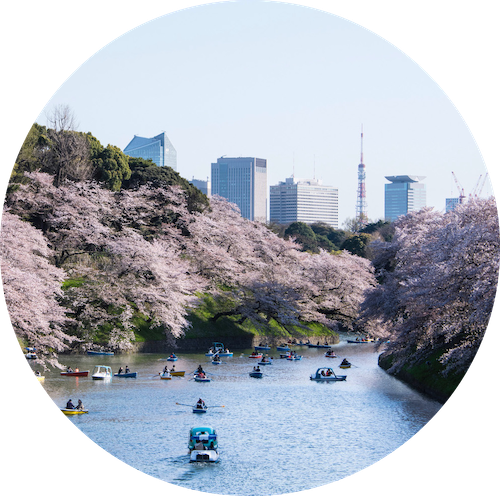
Another amazing secret about Japan is that it’s four destinations in one. Japan is literally a different place depending on whether you visit during the sakura -filled spring, the rainy summer, the colorful autumn or the snowy winter. The Japan travel blog posts I’ve written about travel at different times of year seem like they’re about different countries!
Year-round adventure in Japan’s great, white north
Japanese Alps
Trek the trails of Japan’s ultimate hiking paradise
Flowery castles, volcanic lakes and snow monsters
Do a Japan Deep Dive
Whether you spend your month in Japan exploring lesser-visited islands like Kyushu and Shikoku, or going off the beaten path in spellbinding San’in or tantalizing Tohoku, 4 weeks in Japan (or longer) allows you to see the country as few others do
Japan Deep Dive
Coming back to Japan for the second—or seventh—time? Not to worry! I’ve explored deep into the nooks and crannies of Japan, and have written Japan travel blog posts adventurous enough to inspire even the most ardent explorers. That slogan about Japan being “Endless Discovery” is definitely more than clever marketing!
Japan’s most underrated, unexplored island
San’in
How far off Japan’s beaten path do you dare stray?
Tropical paradise a short flight from Tokyo
Japan travel planning got you stressed out? Commission a custom Japan itinerary—and let me sweat the details. Get a personalized video consultation, a detailed day-by-day itinerary and more!

Plan Your Japan Trip

Subscribe to email updates!
Words, images and design ©2018-2024 Robert Schrader, All rights reserved. Read Privacy Policy or view sitemap .
Itinerary Ideas
Nationwide itineraries.
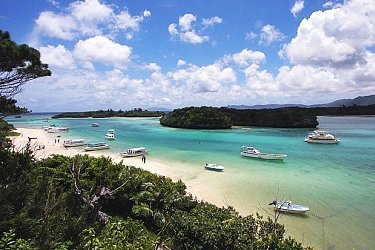
Regional Itineraries
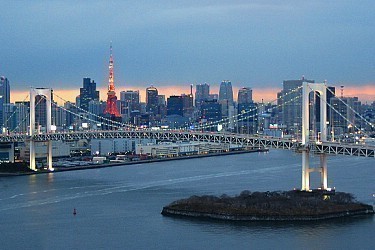
Local Itineraries
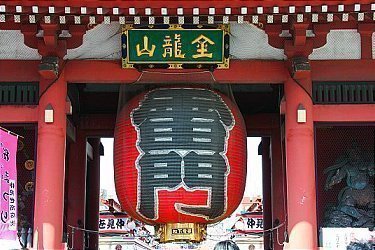
Questions? Ask in our forum .


Navigate forward to interact with the calendar and select a date. Press the question mark key to get the keyboard shortcuts for changing dates.
Navigate backward to interact with the calendar and select a date. Press the question mark key to get the keyboard shortcuts for changing dates.
Japan Trip Planner
Top destinations in japan.

Top attractions in Japan

Other notable attractions

Explore nearby places
- Tateshina-machi
- Nagawa-machi
- Shimosuwa-machi
- Sakuho-machi
- Miyota-machi
- Sakaki-machi
- Minamimaki-mura
- Chikuhoku-mura
- Kitaaiki-mura
- Fujimi-machi
- Minamiaiki-mura
- Karuizawa-machi
- Nanmoku-mura
- Tatsuno-machi
- Yamagata-mura
- Ikusaka-mura
All related maps of Japan
- Map of Japan
- Map of Tateshina-machi
- Map of Nagawa-machi
- Map of Tomi
- Map of Komoro
- Map of Saku
- Map of Shimosuwa-machi
- Map of Sakuho-machi
- Map of Ueda
- Map of Miyota-machi
- Map of Aoki-mura
- Map of Komi-machi
- Map of Suwa
- Map of Chino
- Map of Okaya
- Map of Sakaki-machi
- Map of Hara-mura
- Map of Matsumoto
- Map of Minamimaki-mura
- Map of Shiojiri
- Map of Chikuhoku-mura
- Map of Kitaaiki-mura
- Map of Omi-mura
- Map of Fujimi-machi
- Map of Minamiaiki-mura
- Map of Karuizawa-machi
- Map of Nanmoku-mura
- Map of Azumino
- Map of Tatsuno-machi
- Map of Yamagata-mura
- Map of Ikusaka-mura
Japan throughout the year
- Japan in January
- Japan in February
- Japan in March
- Japan in April
- Japan in May
- Japan in June
- Japan in July
- Japan in August
- Japan in September
- Japan in October
- Japan in November
- Japan in December
Q&A about Japan
Add places from guides with 1 click, collaborate with friends in real time, import flight and hotel reservations, expense tracking and splitting, checklists for anything, get personalized suggestions.
4.9 on App Store, 4.7 on Google Play

Located in the Pacific Ocean, this archipelago is famed for its nature, dynamic metropolises, traditional castles, and great food.
Japan, an intoxicating, charming country of startling contrasts, is home to a culture influenced by both ancient philosophy and modern enterprise. It boasts timeless traditions and pop culture, fascinating history and futuristic cities, cultural treasures and natural beauty. A captivating land of etiquette, innovation, and outstanding cuisine, Japan excels in the details.

Kyoto, known as Japan's cultural center, is a place where ancient shrines, serene gardens, and historical districts blend with modern Japanese sophistication.

Tokyo is an exceptional city that captivates your senses with a unique fusion of tradition and innovation, nature and modern wonders.

Trip Planner - Japan
Create your perfect trip to kyoto, japan.
Easily plan your trip based on your preferences, budget, and style
Plan your trip with RoutePerfect’s AI and optimize it by using RoutePerfect’s crowdsourced database, based on proven and enjoyable, well-crafted itineraries of thousands of travelers.
Most travelers start their adventure in Tokyo , the capital and financial center of Japan and its largest metropolis. Known as “The Land of the Rising Sun,” Tokyo embodies the country’s fusion of old-world and ultramodern with Buddhist temples, geisha districts, and elaborate traditional tea ceremonies alongside neon-lit streets, lively nightlife, and some of the world’s tallest skyscrapers. Tokyo showcases the country’s natural beauty with its famous spring cherry blossoms and breathtaking Japanese gardens – and, on a clear day, a glimpse of Japan’s three “Holy Mountains,” including the iconic snowcapped Mount Fuji . Meiji Jingu, Tokyo’s most important and popular shrine hosting many festivals and ceremonies, and the famous Senso-ji Buddhist temple are among its must-see destinations.
Kyoto , a short ride away from Tokyo on Japan’s Shinkansen bullet train, is known as “The City of Ten Thousand Shrines” and is often regarded as the cultural heart of Japan. Containing about a quarter of Japan’s national treasures, including over a thousand temples, Kyoto is an imperial city whose highlights include the Golden Pavilion (Kinkaku-ji), the 15th Century Silver Pavilion (Ginkaku-ji), the Nijo Castle , and the Imperial Palace . Gion , Kyoto’s famous geisha district, is a popular attraction with its charming wooden merchant houses and traditional tea houses. In the spring, the Philosopher’s Path bursts into color and follows a canal lined with cherry blossoms.
Osaka, a large port city and important commercial center, also highlights the unique blend of the modern and ancient in Japan. While considered by many to be the best place in Japan to eat, drink, and party, Osaka dates back to the 7th century and features the historic Shitennoji Temple, Osaka Castle , and Sumiyoshi Shrine. Osaka’s science museum and aquarium are also renowned.
Hiroshima and Nagasaki , historic cities that have emerged from destruction to become modern cosmopolitan cities, are located in the southwestern part of the Japanese islands and are rich in the natural beauty of both the sea and mountains. Hiroshima, known as “The City of Water” because of the six rivers that flow through it, was rebuilt with great effort after World War II. The destroyed monuments of its historical heritage, like Hiroshima Castle and Shukkeien Garden, were reconstructed, and a large park, named “Peace Memorial Park” was built in the center of the city as was the Hiroshima Peace Memorial Museum . Nagasaki, another important port city, is known for its vivid history and culture, and its attractive location around a narrow inlet make it another top destination for travelers.
Japan is most vibrant in the spring, when its glorious cherry blossoms are in full season, and in the autumn, when it comes alive with the rich, colorful foliage of its ubiquitous maple and ginko trees – yet it also most crowded at these times. Hikers and nature lovers enjoy travel to Japan’s mountains and national parks in the summer months, while some travelers enjoy the snowy winter months in northern Japan with its many festivals and events.
Need guidance? Whether you’re looking for historic experiences or modern adventures, must-see attractions or off-the-beaten-track treasures – or some of each, Routeperfect is your address for planning, organizing, and booking your personalized dream vacation to Japan. Unlike any other company, Routeperfect offers its exclusive popular itineraries written by tourism professionals and experienced travelers to jumpstart your planning, helping you to customize your travel and book your accommodations so that you can experience the country YOUR way.
Regions in Japan
Attractions in japan, suggested romantic itineraries for japan, suggested other itineraries for japan, suggested family itineraries for japan, suggested friends itineraries for japan.
RoutePerfect uses cookies to improve our content and provide you with a personalized experience. By clicking "Accept All Cookies", you agree to the storing of cookies on your device to enhance site navigation, analyze site usage and assist in our marketing efforts. Learn more

- 2 Weeks for Couple
- 2 Weeks for Family
- Thailand Lantern Festival
- Indonesia(Bali)
- South Korea
- China (HK, Taiwan)
- Itinerary Ideas
- Asia Highlights Travel Reviews
- Thailand Travel Reviews
- Vietnam Travel Reviews
- Cambodia Travel Reviews
- Japan Travel Reviews
- Myanmar Travel Reviews
- China Travel Reviews

How to Plan Your Trip to Japan 2024/2025 — 7 Easy Steps
Japan, being a bucketlist trip destination for many travelers, especially attracts families with teenagers and couples. Besides nature, history, and modernity, Japan's unique and lively culture of sumo , samurai , anime, and sushi continues to draw curious visitors from all over the world.
In this article, we'll explain everything you need to know for planning a trip to Japan, including how to budget, when you should visit, top places to go, how to get around, and more.
- 1. Do I Need a Visa to Visit Japan?
- 2. Top 7 Places to Visit in Japan
- 3. Best Time to Visit Japan
- 4. How Much Does a Japanese Vacation Cost?
- 5. How Many Days to Stay in Japan?
- 6. Accommodation in Japan - Ryokans
- 7. How to Get to and Around Japan?
Do I Need a Visa to Visit Japan?
Nationals of many countries are exempt from needing a visa to enter Japan, including the United States, Canada, the United Kingdom, and Australia. Most travelers can stay in Japan without a visa for 90 days.
Discover real reviews of Highlights Travel Family 's best-rated service across trusted platforms.
7 Top Places to Visit in Japan
With our experience traveling in Japan, we know it can be difficult to narrow down where you want to visit, in a place that has so many incredible destinations. Below are some of our favorite destinations according to our experience of traveling and planning holidays in Japan.
1) Tokyo: Modernity & Japanese Anime
As the booming and modern capital city, Tokyo has a lot to offer by way of foods, shopping malls, temples, museums, and skybars, as well as the iconic Mount Fuji.
Beyond the representative attractions, we can arrange a variety hand-picked activities for you to enrich your experiences. For example, you can make sushi at a local home and enjoy it as your lunch and learn about the legendary samurai warriors by wearing a samurai costume.
Many people come to Japan because their children, especially teenagers, love it. Tokyo is a great place to meet your children's interests in anime with a variety of theme parks such as J World, the Pokemon Center, and Tokyo Disneyland , sure to captivate their attention.
Check more details about Plan Your First Trip to Tokyo >>>
2) Kyoto: Ancient Temples & Geisha
Kyoto has a lot of prominent ancient and historical sites to explore. This city has some special and authentic experiences you should not miss.
Kyoto is home to the striking Fushimi Inari Shrine , which featured in the film Memoirs of a Geisha and is famous for its countless vermilion torii gates. Stay at a cozy ryokan with old-style tatami bedrooms to experience tradition Japanese accommodation.
Walking around the Gion District with kimonos, along lantern-lined cobblestone streets, will make you feel like you are on a trip back in time.
In Kyoto, you are never too far from the natural side of Japan. Meander through the lush bamboo groves in Arashiyama or admire cherry blossoms in lots of famous places.
Get more ideas about Plan a Trip to Kyoto >>>
3) Hakone: Ryokans & Hot Springs
Known all over the country for its picturesque beauty and natural hot springs , Hakone is one of the most popular destinations in Japan.
The Hakone region has more than a dozen springs that provide natural hot water. These springs are surrounded by ryokans where you can stay, eat delicious kaiseki meals, and bathe in the healing waters .
When not luxuriating in the relaxing hot springs, you can explore this sleepy undeveloped town located on the shores of Lake Ashinoko, with Mount Fuji in the background .
4) Nara: Deer Park
Nara is an ancient Japanese city less than an hour from Kyoto and Osaka . Most travelers come to Nara because of the Nara Park (often referred to by locals as Deer Park ). It is home to over a thousand free-roaming deer which can be seen throughout the park and even fed in some areas.
5) Hiroshima: Learn the value of peace
Hiroshima, a thriving cosmopolitan city in Japan, captivates families with its blend of fascinating history, innovative technology, and natural beauty, making it an ideal destination for teens.
Families can engage in enriching experiences at the Hiroshima Peace Memorial Park and Museum , where impactful stories from World War II are shared. Further, the combination of history and technology engages teens at astonishing places like Mazda Zoom-Zoom Stadium or the Mazda Museum.
6) Takayama and Shirakawa-go: Rural Countryside
Takayama is a city in the mountainous Hida region of the country, a great place for escaping from the country's larger cities and relaxing for a few days in the rural countryside . You can enjoy exploring the well-preserved townhouses, savoring delicious Hida beef, and visiting local sake brewery for a mellow sake.
After exploring Takayama, many visitors like to go to Shirakawa-go to see its near-perfectly preserved Old Town. It is famous for its traditional gassho-zukuri farmhouses , some of which are more than 250 years old. In the winter months from January to February, the farmhouses are illuminated at night, creating a charming and attractive wintry lighting scene that draws in lots of travelers.
7) Kanazawa: Ancient City During the Edo Period
Kanazawa is an ancient Japanese city that during the Edo period used to be home to one of the most powerful clans in the country. Today, Kanazawa is a great place to visit for anyone interested in the ancient culture of the country .
Because Kanazawa wasn't destroyed by air raids during WWII, it's one of the few areas left with so many surviving ancient districts .
Kanazawa is also a good place for a close look into the life of samurais and geishas.
Best Time to Visit Japan
Japan can be visited year-round, though there are benefits and drawbacks of every season.
- For the most comfortable weather , March to May are the best months to travel . Spring is one of the most popular times to visit Japan because of the beautiful, comfortable weather and the arrival of the cherry blossoms .
- For the lowest prices and less crowds, visit Japan from June to August . Many people choose not to visit Japan during these months due to the high heat (average 32℃ (90℉) and humidity, which means that standard prices for accommodation and flights are often lower. Summer is the festival season in Japan , offering you an opportunity to experience multiple holidays and firework-shows in another country. Get more ideas about planning a summer trip to Japan .
- For cool and dry weather and less crowds, September to November is a wise travel season . Visit Japan during this period to enjoy the changing colors of the leaves, turning brilliant orange and red, in the countryside near Kyoto and Tokyo. Autumn is also the best time to visit some of Japan's best national parks, such as Mount Fuji and the Five Lakes.
- For snow scenery and skiing , come to Japan from December to February . Winter in Japan is the best time to stay in a ryokan , with a natural hot spring. Nothing beats bathing in the hot pools surrounded by snow and quiet forests. Christmas/New Year holiday is one of the busiest times. Hotels and flights are easily booked up. Be sure to plan ahead and make reservations in advance. Let us know your interests and requirements , and we'll take care of everything.
How Much Does a Japanese Vacation Cost?
Japan keeps up with Europe both in livelihood and service standards, which means travel in Japan costs more than in China or in southeast Asia countries. US$350-500 per person per day is the typical cost for a private tour with 4 star hotels based on a family of 3-5 people . This includes a private guide, private car, full-day itinerary, tickets for attractions, and a local 4-star hotel.
March to May are the busiest travel months in Japan, which means higher cost for travel and more crowds than the rest of the whole year . Booking flights and hotels in advance are necessary. To reserve a professional tour guide for your dream trip in Japan, you're suggested booking a Japan tour at least 6 months ahead of your departure date.
Some Japan tour packages come with public transport (mainly subway) to save some cost. This is an option for travelers willing to walk 20,000+ steps per day . For a family group or a retired couple, a private tour with a private vehicle is highly recommended for a more hassle-free experience to maximize the enjoyment.
Our Japan expert will customize your trip based on your requirements, and make the most of your money.
How Many Days to Stay in Japan?
We suggest you take at least a week for your first trip to see a spectrum of the highlights in the top two cities.
- 3 days in Tokyo
- 3 days in Kyoto
- 1 day in Osaka
To discover more of Japan and popular destinations, like picturesque Hakone and Takayama , you will need two or three more days.
Suggested itinerary ideas for you:
- 8 Days in Japan
- 10 Days in Japan
- 12 Days in Japan
- One Week in Japan
- 2 Weeks in Japan
- 3 Weeks in Japan
Here are three well-organized Japan itineraries ideal for holidays of three popular lengths (9, 14, and 17 days) , each offering plenty of fun hands-on activities. We could customize the itinerary based on your requests, and we could also reserve some free days for you to rest and relax or do some exploring on your own.
1) 9-Day Classic Route: Major Highlights of Japan and a Ryokan Experience
- Tokyo - Hakone - Kyoto - Osaka
This itinerary covers the main highlights of Japan: experience its old-vibe in Asakusa, visit the samurai museum in Tokyo, try on kimonos for a memorable photo and participate in a classical tea ceremony in Kyoto, relax in a ryokan with onsen in Hakone, and sample street food in Osaka.
- Days 1–3: Tokyo (sushi-making, discover samurai, Meiji Shrine, anime, and Disneyland)
- Days 4–5: Hakone (stay at a ryokan with an onsen)
- Days 6–8: Kyoto (geishas, Fushimi Inari Shrine, sample sake and Kaiseki, and feed deer in Nara)
- Day 9: Osaka (Dotonbori district and Osaka Castle)
2) 14-Day Private Family Route: Learning Through Fun
- Tokyo – Takayama – Hiroshima – Kyoto
With this itinerary, you could visit the major attractions of Japan's cities and breathe in the fresh mountain air . Experience anime elements and have a full view of the city at Tokyo Tower in Tokyo, enter a traditional folk village in Takayama, cherish peace at Hiroshima Peace Memorial Park, stay at a cozy ryokan, stroll through the bamboo groves in Kyoto, and have fun at Universal Studios in Osaka.
- Days 1–3: Tokyo (Meiji Shrine, Tsukiji Market, Pokemon Center, and Akihabara)
- Days 4–5: Takayama (Hida Folk Village, sample sake and Hida beef)
- Days 6–7: Hiroshima and Miyajima (Peace Memorial Park and the 'Floating Torii Gate')
- Days 8–11: Kyoto (geisha, ryokan, Nijo Castle, and feed deer in Nara)
- Days 12–14: Osaka (Cup Noodle Museum, Super Nintendo World, and Universal Studios)
3) 17-Day Japan Itinerary: Hands-on Experiences and Outdoor Activities
- Tokyo – Kawaguchiko – Karuizawa – Nagoya – Kyoto – Osaka
To have an unforgettable Japan journey, you and your family or partner can take a wonderful trip with the following experiences: immerse yourself in a samurai experience in Tokyo, take a light hike close to nature in Karuizawa, and have fun in lovely Ghibli Park or full-of-technology Nagoya City Science Museum in Nagoya, have a geisha dinner andspend a cozy night at a ryokan in Kyoto, and visit outstanding Osaka Castle and have fun in Universal Studios in Osaka.
Here is the itinerary for your inspiration:
- Days 1–4: Tokyo (Meiji Shrine, sushi-making, ninja experience, samurai and Tokyo Tower)
- Days 5–6: Lake Kawaguchi ( Mount Fuji and biking)
- Days 7–8 Karuizawa (national park and light hiking)
- Days 9–11: Nagoya (Ghibli Park and Toyota Commemorative Museum of Industry and Technology)
- Days 12–14: Kyoto (geisha, ryokan, Kinkakuji Temple, Arashiyama, and feed deer in Nara)
- Days 15–17: Osaka (Cup Noodle Museum, Osaka Castle, Universal Studios and Super Nintendo World theme park)
Accommodation in Japan - Ryokan
While there is plenty of accommodation available in Japan, with different standards, our favorite is the ryokan . A ryokan is a traditional Japanese inn that will make you feel simultaneously comfortable and relaxed. Its floors are usually made of rice- or bamboo-straw. You sleep on traditional mattresses on the floor, and eat fresh kaiseki -style dinners.
Ryokans are the essence of comfort. Members of staff are often dressed in kimonos, they provide excellent service, the food is top-tier, and many ryokans are located on natural hot springs that have waters with healing properties.
The ryokans with hot springs in Hakone are particularly famous , with their Japanese western-style rooms and atmosphere of total peace and harmony.
Cannot decide which ryokan to choose? Submit an inquiry for a best suitable choice for your family. You could also get more ideas about How to Plan a First-Time Family Trip to Japan >>>
How to Get to and Around Japan?
Getting to japan.
Most flights from international starting points such as Europe, North America, Australia, and New Zealand, land at Narita International Airport in Tokyo or Kansai International Airport in Osaka . These airports are conveniently close to their corresponding cities and are international hubs for some of Japan's leading airlines.
For the best prices, we advise buying tickets at least 6 weeks in advance. You can contact us for the best suitable travel route recommendation.
Getting Around Japan
The famous Japanese bullet train, or Shinkansen , provides an easy and quick way to travel across the whole country, without the risk of delays or the hassle of getting to an airport. Most cities are conveniently connected by Shinkansen bullet trains , such as the two and a half-hour journey from Tokyo to Kyoto. Each shinkansen line has different types of train, which customers can choose from.
The one downside of traveling by train is that there is often little space for luggage larger than a carry-on suitcase. Many hotels do, however, provide the service of sending your luggage on to your next hotel.
Get Inspired with Some Popular Itineraries
At Asia Highlights, we create your kind of journey — your dates, your destinations, at your pace. You can have any trip tailor made for your travel.
More Travel Ideas and Inspiration
Sign up to our newsletter.
Be the first to receive exciting updates, exclusive promotions, and valuable travel tips from our team of experts.
Why Asia Highlights
Where can we take you today.
- Middle East
- African Safari
- Travel Agents
- Loyalty Program
- Our Differences
- Privacy Policy
Address: Building 6, Chuangyi Business Park, 70 Qilidian Road, Guilin, Guangxi, 541004, China
Plan your trip
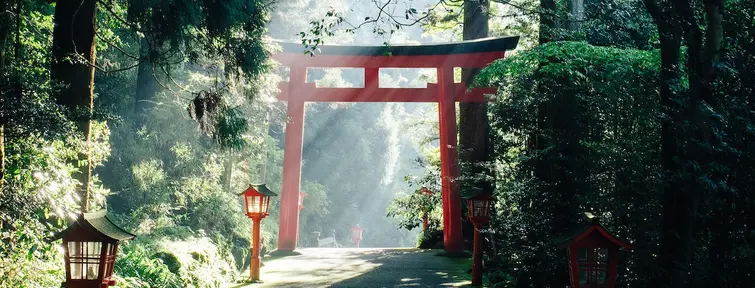
© Syuhei Inoue, Unsplash
Have all the cards in hand to prepare for your trip to Japan! Discover all our practical guides and travel advice for a peaceful stay.
To know about Japan
Prepare for your trip thanks to the "Before you travel", "Travelling in Japan" and "Japanese Language" sections. Set off on a culinary adventure with "Japanese Food and Drink" or deepen your knowledge of Japan with "Understanding Japan". You can also look through sections about Japanese's movies, history and literature.
- Discover our "To know" themes
Read our articles to know everything about Japan
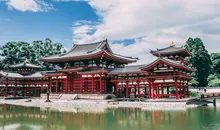
Travelling in Japan: a comprehensive guide
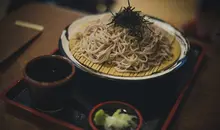
Japanese Food and Drink
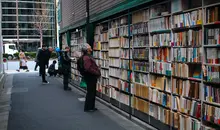
Books on Japan
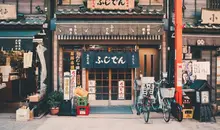
Japanese Movies
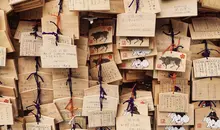
Japanese Language
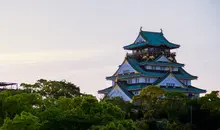
Japanese History
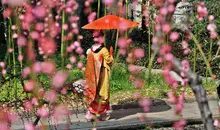
Understanding Japan
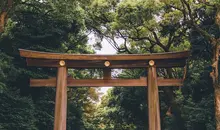
Before you Travel
To travel by train
The best way to get around Japan is undoubtedly by train! Have you heard of the Japan Rail Pass or ekiben meals? Do you know how to find your train and how to get around a Japanese station? Find all the advice so as not to get lost and take the train with complete peace of mind while taking advantage of all that the Japanese system has to offer.
- Discover our "Traveling by train" themes
Find our articles on the train in Japan
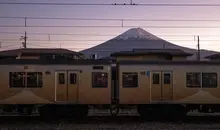
Unique Trains in Japan
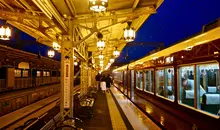
Japanese Stations

Getting Around Tokyo

Shinkansen Travel Tips

Itineraries for Japan
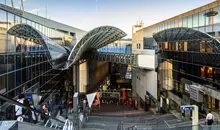
Getting Around Kyoto
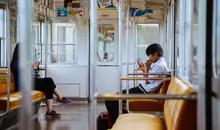
Trains in Japan
Our Thematic Guides
Japan Experience creates thematic files for you that address in depth a theme, a place or an activity in Japan. Japanese winter, the Tohoku region, hiking trails but also practical guides on the budget needed for a trip to Japan, tips and good plans to organize your stay and many more!
Each month, Japan Experience invites you to explore a different theme, to understand the culture and life in Japan, and thus be able to better prepare your trip.
- Read our Thematic Guides
Our Travel Guidebooks
The world of Japanese culture is so rich with variety that it’s hard to find a single book that covers everything. Our guidebooks are made to be leafed through before or during a trip, to admire magnificent pictures taken in the Japanese landscapes or to find unique addresses, these guides will be able to accompany you at each step of your project!
They are a great source of inspiration ; you will find in these different books, all the essential elements to discover, understand and explore Japan!
- Find out more on our Guidebooks
Please select your country on the list below:
- Switzerland
- United Kingdom
- Other countries

9 Tips for Japan Travel You Can't Afford To Miss
I f you’re planning a trip to Japan, know that the process is a commitment . We’ve gone all over the world and back again, even traveling full-time for two years with our young children.
Even so, planning a trip to Japan sometimes felt like a Herculean task. There are so many moving parts, rules and barriers that it was easy to be overwhelmed at times. After putting together what I’d deem a very successful first visit, I’ve put together some of my best Japan travel tips to help you plan the trip of a lifetime!
I promise, you won’t want to miss these tips for traveling to Japan – they’ll help you make the most of your time with the fewest hassles.
1. Plan as far in advance as you can
As frequent readers of this website know, we’re avid travelers and have been all over the world – sometimes hopping countries on just a few days’ notice.
Japan isn’t a place where I’d want to do that. Ever.
The most important of my tips for Japan travel is to give yourself as much lead time as possible.
We were shocked at just how important it is to plan a trip to Japan well in advance. In my experience particularly if you plan to visit during a peak time (roughly March through May and, to a lesser extent, September and October) you’ll be happiest if you start arranging your hotels 4-6 months in advance. Even 4 months before our March trip, a few small or specialty hotels were already sold out. When I looked to shift our itinerary 3 months in advance, our hotel in Tokyo was double the price I had paid.
But it isn’t just about booking your flights and hotels. There are so many cool attractions in Japan that require booking at least a month in advance. It’s not just the obvious ones! Everything from TeamLab Tokyo (which we got) to Pokemon Cafe (which we didn’t) sells out. Heck, even the wonderful onsen we visited had limited availability for private rooms a month in advance.
Unfortunately the need to lock down times and places so far in advance can make Japan travel planning very tricky. Give yourself plenty of time and try not to get overwhelmed – take it one area at a time and don’t be too disappointed if you can’t get into one specific attraction or hotel. Know that you’ll still have an incredible trip and you’ll be starting to consider a return visit while you’re still there!
Pro tip: When you’re planning, don’t be afraid to book through Klook ! It’s one of the most popular sites for booking activities throughout Asia. It’s easy to use and has a great reputation. We used it many, many times without a hitch.
2. Consider the overall structure of your itinerary
Obviously the first thing to nail down when you’re planning a trip to Japan is the basic framework of your trip: your flights and roughly which regions you’ll visit when. There are a few ways to do it, which I’ll go over here. Here are some ideas for family-friendly Japan itineraries .
If you’re coming from North America, chances are you’ll fly into one of Japan’s three main international airports: Narita (NRT), Haneda (HND) or Kansai (KIX). West coasters may have the luxury of choosing where they’ll go, while travelers coming from the midwest and east coast will probably have to take what they can get based on how their connections work out.
Both Narita and Haneda are in greater Tokyo, but Haneda is much much more convenient: our taxi ride was an easy 20 minutes, which we appreciated after spending most of a day traveling. Narita would have taken over an hour and been more expensive for our family of four.
The other airport option is Kansai, which is about an hour from downtown Osaka by train. A west coast family member recently chose an open-jaw itinerary that arrived in Osaka and departed from Haneda. That was a great option as it avoided an extra few hours of train travel – and depending on your itinerary it could allow you to choose a shorter duration Japan Rail Pass (but more on that later). When we considered a similar itinerary, unfortunately the connections weren’t as favorable and the price was a lot higher but be sure to evaluate options for your airport and dates.
The second half of structuring your itinerary is figuring out the order in which you want to visit Japan’s wonderful and diverse regions. On a first visit, most tourists split their time between Tokyo , Kyoto /Osaka and Hiroshima . It’s worth considering the order of your trip, especially if you end up with a roundtrip ticket to Tokyo (as most visitors do). If you’re lucky enough to have a KIX flight on one leg, your itinerary will mostly build itself.
There are two schools of thought on how to structure your Japan itinerary . This excellent book recommends exchanging your Japan Rail Pass voucher at the airport when you arrive and immediately hopping on a bullet train for Hiroshima as one of the top tips for travelling in Japan. In theory you could also take a short domestic flight to Hiroshima, as it’s less than 2 hours and sometimes only $50 per ticket. You’ll then slowly make your way back up to Tokyo to finish out your trip. The benefits of this option are that you’ll be able to sleep for much of the 6 hour travel time (since most visitors are exhausted after crossing so many time zones) and you’ll also start off in the quieter parts of the country before tackling the hustle and bustle of Tokyo.
We took a different approach and it worked out fine as well. Our trip started with 5 nights in Tokyo, which was just a busy as advertised but allowed us to settle in and feel as rested as possible when we were clocking 10 miles on foot each day. Then once we had our bearings we went all the way to Hiroshima and Miyajima Island. Our final stay was in Kyoto , halfway between Tokyo and Hiroshima. With only 10 nights in Japan, our stays in Miyajima and Kyoto was shorter and might have been harder with the kids right when we’d gotten off the plane.
I’d probably avoid closing out your trip in Hiroshima. The security line when we returned to Haneda was one of the longest I’ve ever waited in and you would likely have to build in three hours to check in and get through security, whether you’re taking the 5-6 hour train ride or the 2 hour domestic flight (remembering to allow 60 minutes to get to the Hiroshima airport from downtown or 2.5 hours from Miyajima Island and 2 hours for domestic check in). Going through all of that followed by an incredibly long international flight is just too brutal.
3. Always factor transportation into your advance planning
Speaking of transportation, there’s a lot of it in Japan and it should factor into your planning from the beginning in terms of both time and money.
Japan is famous for its shinkansen bullet trains, but in reality the nation’s transportation network is far more vast than most people realize until they visit. Japan has more than 30,000 km of rail, which would get your 3/4 of the way around the globe if it was all laid end-to-end. Those rails are part of everything from the bullet train lines that travel at 200 mph to regional railways to local subways.
Even within a single municipality, there can be multiple overlapping transit lines run by the government, private companies or public-private partnerships. As a visitor, it can sometimes be confusing or even frustrating.
You’ll want to download the excellent JapanTravel app by NAVITIME to your phone. You can also use it on your computer though I found that it didn’t work as well. Where this app is a standout is that it allows you to select which transit passes you have (or are considering purchasing) and shows you which routes are included and which ones aren’t.
Before we talk about money, passes and more I’ll just share a quick note about the time aspect of taking trains in Japan. Overall they’re extremely efficient and get you from A to B. But Japan is home to 46 of the 50 busiest train stations in the world, and when you first arrive prepare to be a little lost. When you’re taking local trains, I recommend allowing plenty of buffer time to what the directions tell you. A “20 minute trip” could easily take you 30 minutes if you struggle to find the platform for your connection or figure out which exit the walking portion of your directions indicate. It’s not your fault, but plan accordingly if you have time-specific activities.
The first piece to figure out – at least a month before your trip but not more than 90 days – is whether or not a Japan Rail Pass is right for you. This pass gives you access to nearly every Japan Rail operated line in the country for a specific number of consecutive days. If you’ll be flitting around to different regions in a fairly short period of time it can be a great savings! You won’t typically need it for your entire itinerary. For example, we made sure that we only needed ours for 7 of our 10 days.
To give you a sense of our our calculations worked, on the second day of our JR Pass we traveled from Tokyo to Hiroshima. On the final day of our pass we traveled from Kyoto to Tokyo. Those two legs alone would have cost us more than the 7 day pass, and of course we used it many times in between.
The very fastest bullet trains – which cut an hour off of the transit between Tokyo and Hiroshima – aren’t currently included with the Japan Rail Pass but they will be when the rail pass price increases in early 2024. That price increase is going to hurt and you’ll really have to evaluate whether or not the pass makes sense for you if you’re visiting beyond 3/31/2024 (the initial announcement indicated October 2023, but it seems to have been pushed back). Of course it’s also possible that fares for individual tickets will rise as well.
Fortunately there’s no need to worry about spending for the fancy “Green Car” service. The regular class is plenty comfortable and very spacious, with reclining seats and tray tables for your bento box. And families rejoice: children 6-11 can get half-price rail passes! Each adult can also take up to two children ages 1-5 on their laps (though only one is realistic) and babies travel free.
Things get much more complicated when you’re talking about local and regional transportation.
If you’re traveling kid-free or your kids are 0-5, your simplest option is to buy an IC card . These are essentially reloadable debit cards that can be used on nearly every transportation system in areas where tourists go in Japan, plus you’ll use them for cashless payment at lots of businesses and kiosks in the country. To make your life easy, once you get your IC card add it to your Apple Wallet or Google Pay app. You can even top up your IC card directly from your phone, and Apple Watch users can scan into trains with their wrists. With an IC card you won’t have to buy individual tickets for train rides, though if you’re taking lots of trains you may end up spending more than if you purchased a train pass – more details on those below.
Unfortunately for families with kids over 6, an IC card isn’t quite so simple. First, for your children to receive discounted child fares when they tap in to a train they have to be on a child IC card. You’ll need to bring the kid and their passport to the JR East office to get it (this is the same place where you’ll exchange your JR Pass voucher for actual tickets). Second, unless they have their own cell phone they won’t be able to use the digital option and will need to carry the physical card and top it up at an actual kiosk.
Given the different fares, shopping opportunities and different reloading options, you may wind up with times when most of the family is topped up and ready to go but a kiddo’s card needs money unexpectedly at the turnstile. The upside is the most of the time you can board basically any train in the country with a simple tap and no worrying about which train line you’re taking. Some families even load their kids’ souvenir shopping money on to the IC card and empower them to stay within their budgets. That’s a great hack for family travel in Japan!
If dealing with IC cards sounds like a headache or you think you’ll ride local trains a lot, there are some additional train passes worth considering. Our family got excellent value out of the 72 hour Tokyo subway pass . It covered nearly every non-JR train we needed to take around the city, including the one conveniently located underneath our hotel . The cost of that pass just can’t be beat!
As you go in the Kansai region (encompassing Kyoto, Osaka, Nara and more) you can consider the Kansai Thru Pass for 2 or 3 days (and kids at half price). It covers nearly all non-JR rail lines plus bus lines and can be used on non-consecutive days. If you have an active Japan Rail pass you can use that for select rides in the city as well, but JR lines aren’t as ubiquitous as elsewhere.
Whether or not a pass makes sense for you will depend on how much you plan to use public transportation versus taxis and Ubers. That said, there’s also the convenience factor of nearly every trip being covered without having to stop at a ticket machine every time you want to board. You could also consider separate passes for Keihan , Hankyu and buses.
There were a few times when we felt like a taxi was the best option, for instance when we were heading to the train station with all of our luggage in the pouring rain on our last morning in Japan. I was so glad that we brought folding car seats for our kids to ride safely – I consider them a “must” to travel Japan with a family!
Want to organize your plans?
Grab our fully-customizable Japan digital travel planner!
4. Get comfortable with Google Translate
The most useful app for Japan is definitely Google Translate. Unless you’re fluent in Japanese (reading and speaking) you’ll use it all day, every day. If you only take away two traveling in Japan tips, it should be this one along with planning as early as possible.
We encountered so many people in Japan who were eager to help us in our travels but virtually none of them spoke English. And that’s understandable, because it’s their country and Japanese is the local language. Thankfully Google Translate was there to bridge the divide. We had plenty of “conversations” that consisted of us typing a few sentences into our app and a Japanese person typing their reply into their own Google Translate.
The other piece of Google Translate that’s indispensable is translating text in images, whether it’s a sign on a storefront or a Japanese-only menu. Particularly if you have any dietary restrictions, you’ll want to take advantage of this.
I recommend that you download the Japanese dictionary within your Google app before you go. When you go to the translation module, click “Detect language” and find Japanese on the list. Then click the download icon to the right. Your translations will be faster when you’re on the ground and you won’t have to worry about using mobile data.
5. Bring power backups for your phone
If you’re anything like us, you’ll use your phone all day long in Japan. Directions, photos, translations and more… it all takes a toll.
We love this portable charger because it plugs directly into our iPhones without a cord and still fits in our pockets. There’s an Android-friendly version as well. We brought one with us, but only because I forgot the second one charging at home when I packed! There were plenty of days we wished we had the second battery pack. It tops my list of what to bring to Japan.
On our smarter days, we brought a USB charging cable and wall plug with us. Plenty of restaurants in Japan have outlets near the tables so we were able to charge while we ate.
Speaking of plugs, Japan uses the same style outlets as the USA. Even so, I ended up bringing this gadget because it saved tons of space and energy on USB wall adapters!
Other things to put in your day pack for Japan: a plastic bag to carry around your trash, a small travel washcloth and hand sanitizer.
6. Pack strategically
I have plenty more to say about what to pack for Japan specifically, but as you’re planning your trip it’s helpful to have an overall strategy that takes your itinerary into account.
First, packing light is always a good thing. I love the travel capsule wardrobe strategy for maximizing my outfits while minimizing my luggage.
Second, if you plan to take trains around the country (which nearly everyone does) know that there’s limited space for huge suitcases in each compartment. Carry-on suitcases and travel backpacks will fit on the overhead racks without issue.
For our family of four, we traveled with two carry-on suitcases, one 35L travel backpack (which I’m wearing above) and our kids backpacks. We also tucked this awesome packable daypack into our luggage to use on the ground. Since we were sharing luggage, we made liberal use of packing cubes to organize everyone’s stuff. Japan isn’t a country that requires a lot of specialized equipment and we made sure to book one hotel with laundry , so packing light was easy!
Now for the strategy part… our itinerary included a very busy 48 hour stretch that saw us taking trains, buses, boats and taxis as we went all the way down to Miyajima Island and doubled back to Kyoto with a half-day stop in Osaka. It was a whirlwind!
But thanks to the excellent Ta-Q-Bin luggage forwarding service run by Yamato, we didn’t have to lug all of our stuff with us. Ta-Q-Bin is beloved by locals and visitors alike, as it reliably and affordably moves your items around the country. The service is available via 7-11 and many hotels. We arranged it the night before with the concierge at our Tokyo hotel . For just $50 we sent both of our suitcases and a supplied cardboard box containing the kids’ backpacks to Kyoto, and we just brought our 35L backpack and daypack for two nights on Miyajima Island. Without a hitch, our items were waiting in our hotel room in Kyoto when we got there!
Having the freedom to move through busy parts of your itinerary unencumbered is amazing. Sure there are luggage lockers in many places (the one time I tried to snag one they were full) but we didn’t always go and come back the same way.
Some visitors also use Ta-Q-Bin on the day they arrive in Japan. While the service generally calls for about 48 hours of lead time, Yamato offers same-day service within Tokyo from the airports if your flight comes in early enough. That means you can drop off your luggage when you arrive and immediately go sightseeing without stopping at your hotel first!
7. Engage with Japanese people
While it’s true that Japanese people are generally quiet and respectful in public, don’t let that scare you from interacting. Overall we found warmth, generosity and an overwhelming desire to help us as tourists – all of this despite the understandable language barrier.
We encountered kindnesses of all sizes, from the businessman who went ten minutes out of his way to help us find a hidden train station to the young people who saw us picnicking and offered us a spare tarp to sit on. Even though there are differences in how we approach public life, plenty of Japanese people we met were happy to chat about their favorite restaurants, the sports teams they support and all of the other normal aspects of daily life.
Private or small-group tours are a great way to forge those connections, even for the DIY traveler. You’ll have an opportunity to ask all of your burning questions about life in Japan and hear an insider’s perspective from someone who is eager to be a bridge.
8. Don’t be afraid of unfamiliar (or inexpensive!) foods
I’m not afraid to say that Japan’s food scene is incredible. Whether you’re craving fresh, creative, comforting or affordable you’ll find it in spades. But the most important thing to bring when you dine (other than perhaps a reservation) is an open mind.
You’ll undoubtedly encounter plenty of foods in Japan that you never imagined, from cabbage-laden okonomiyaki to octopus-filled takoyakio to sakura mochi wrapped in salt-pickled leaves for dessert. As long as they’re within any particular dietary restrictions you have, give it all a shot!
On the note of dietary restrictions, be sure to have your Google Translate app ready at restaurants if you’re particular about what you’re eating. It can be tough.
Pro tip: If you’re looking for pork-free ramen or vegan ramen in Tokyo, don’t miss the rainbow ramen at Afuri. There are locations throughout the city.
By the same token, don’t discriminate against affordable food in Japan. There are plenty of solid options where you can get yakitori , sushi or fried chicken for just a few dollars and they’re absolutely delicious. Many Japanese people grab sandwiches or other simple lunch foods at convenience stores like 7-11 or Lawson’s – these are perfect to bring along for a lunch picnic in one of the thousands of beautiful parks you’ll stumble across.
I’ll be honest and say that we had one of our most filling and satisfying breakfasts at Denny’s of all places – but it was delicious chicken and rice porridge for the adults and broiled salmon with rice for the kids. You could eat for $15-20 per day and really enjoy a huge range of Japanese food!
9. Plan some unique activities
With the ever-increasing costs of flights and hotels, it’s tempting to try to save on other parts of your trip to Japan. There are plenty of free things to do in Japan, from visiting all of the unique temples and shrines to searching out your favorite garden.
But it would be a shame to miss out on some of the more unique things to do in Japan that you have to pay for. Check out some of these great only-in-Japan experiences that we loved:
- Take an in-home cooking class
- Dress in a kimono and participate in a traditional tea ceremony
- Attend a sumo tournament
- Stay in a traditional ryokan where you can enjoy everything from sleeping on futons to soaking in an onsen to dining on a local gourmet breakfast
Of course there are a million other things you can do in Japan! One fact is certain: no matter where you go or what you, you’ll walk away anticipating your next visit.
Planning your trip to Japan
I hope these travel tips for Japan have give you the confidence to plan your own adventure!
Ready to dive in? Don’t miss these helpful resources for planning your own Japan trip!
- Buy your Japan Rail Pass
- Best Things to do in Japan With Kids: A Kid’s Take
- Essential Japan Itinerary: 10 Days of Family-Friendly Travel
- What to Pack for Japan in Spring (and What to Leave at Home)
- Things to do in Tokyo With Kids: Itinerary for 4 Days of Old and New
- The Best Hotels in Tokyo for Families (and How to Choose Yours)
- Visiting Kyoto With Kids: 2+ Day Itinerary + Must-Read Travel Tips
- Best Family Hotels in Kyoto
- Awesome Pokémon Things to do in Japan
- Visiting the A-Bomb Sites in Hiroshima with Kids
- 10 Japan Cultural Activities & Attractions For Your Bucket List
The post 9 Tips for Japan Travel You Can’t Afford To Miss appeared first on The Family Voyage .
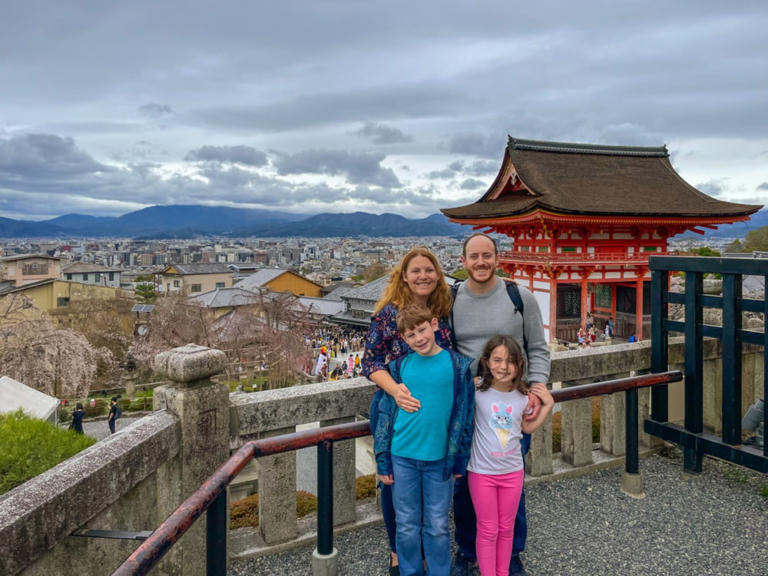
- Japan Tourism
- Japan Hotels
- Japan Bed and Breakfast
- Japan Vacation Rentals
- Flights to Japan
- Japan Restaurants
- Things to Do in Japan
- Japan Travel Forum
- Japan Photos
- All Japan Hotels
- Japan Hotel Deals
- Last Minute Hotels in Japan
- Things to Do
- Restaurants
- Vacation Rentals
- Travel Stories
- Rental Cars
- Add a Place
- Travel Forum
- Travelers' Choice
- Help Center
13 day Japan plan - do let me know is this making sense? - Japan Forum
- Asia
- Japan
13 day Japan plan - do let me know is this making sense?
- United States Forums
- Europe Forums
- Canada Forums
- Asia Forums
- Central America Forums
- Africa Forums
- Caribbean Forums
- Mexico Forums
- South Pacific Forums
- South America Forums
- Middle East Forums
- Honeymoons and Romance
- Business Travel
- Train Travel
- Traveling With Disabilities
- Tripadvisor Support
- Solo Travel
- Bargain Travel
- Timeshares / Vacation Rentals
- Asia forums
- Japan forum

Hello Folks
How's the weather generally in May, we are getting different info on various sites.
Can you give us your inputs on the below plan, we have a friend in Osaka who recommends the following, a bit different from our early idea.
His suggestion was with Osaka as base, these day trips will be more sensible as we will be carrying 3 large suitcases, which then can avoid multiple check in and check outs
Our interests is for seeing the tourist sites and general strolling in an easy paced manner.
We know there is much more to do in Japan, hopefully in the next one.
Day 1 - Arrive Osaka (that will be our base)
Day 2 - City Tour Osaka - as we would have arrived previously after 14 hrs of travel
Day 3 - Day trip Kyoto
Day 4 - Day Trip Nara
Day 5 - Day Trip Hiroshima
Day 6 - City Tour Osaka - leave after 4 pm to Disney (stay the night at the Resort)
Day 7 - Osaka - Disney Sea world (stay the night)
Day 8 - Disneyland (Stay the night)
Day 9 - Move to Tokyo at 9 am (that will be our base)
Day 10 - City Tour Tokyo
Day 11 - Day Trip Hakone
Day 12 - City Tour Tokyo
Day 13 - City Tour Tokyo
Day 14 - Depart from Tokyo
Much appreciate your suggestions in advance.

- pickup a car in narita airport and drop off at habuka? 11:17 am
- Koyasan (Wakayama) - where to take a 2 hour work call? 10:59 am
- 5 nights in Tohoku. Sendai as a base, or not? 10:37 am
- Connecting rooms in Shibuya 10:31 am
- 15 day itinerary in Japan and South Korea 10:17 am
- Tokyo a semi love trip report 10:07 am
- Scenic Itinerary for Autumn 2024 9:53 am
- Car Rental In Toyko May 2024 9:52 am
- Which national park ? Daisetsuzan or Akan Mashu 9:40 am
- Arrival into Ginza area. Where to start 8:58 am
- Hiking volcanic region Yufu-dake / Aso-Kuju National Park 8:56 am
- Walking itinerary possible? 8:48 am
- Advide and Ideas re 14 days itinerary. 8:46 am
- Kyushu 3 weeks itinerary - 22 October 8:39 am
- 'semi double' rooms 5 replies
- Pocket WiFi Rental Experience? 315 replies
- kyoto-takayama JR or Lmtd express??? 6 replies
- Best Japan travel guide book? 29 replies
- Best/cheapest time of year to visit?? 3 replies
- Radiation danger in Tokyo? 37 replies
- Best Skiing in Japan? And When? 3 replies
- Japan in 10 days 3 replies
- How far is Nara from Kyoto 8 replies
- how to get to Hokkaido from Tokyo? confused..pls HELP. 5 replies
- 2024 public holiday chart in East Asian countries
- Where can I find more onsen in Japan?
- Driving Information
- Catholic mass in English and other languages
- How can we access tourist attraction from cruise port?
- Pocket WiFi Rental Experience?
- Halal Information
- Tokyo trip report here
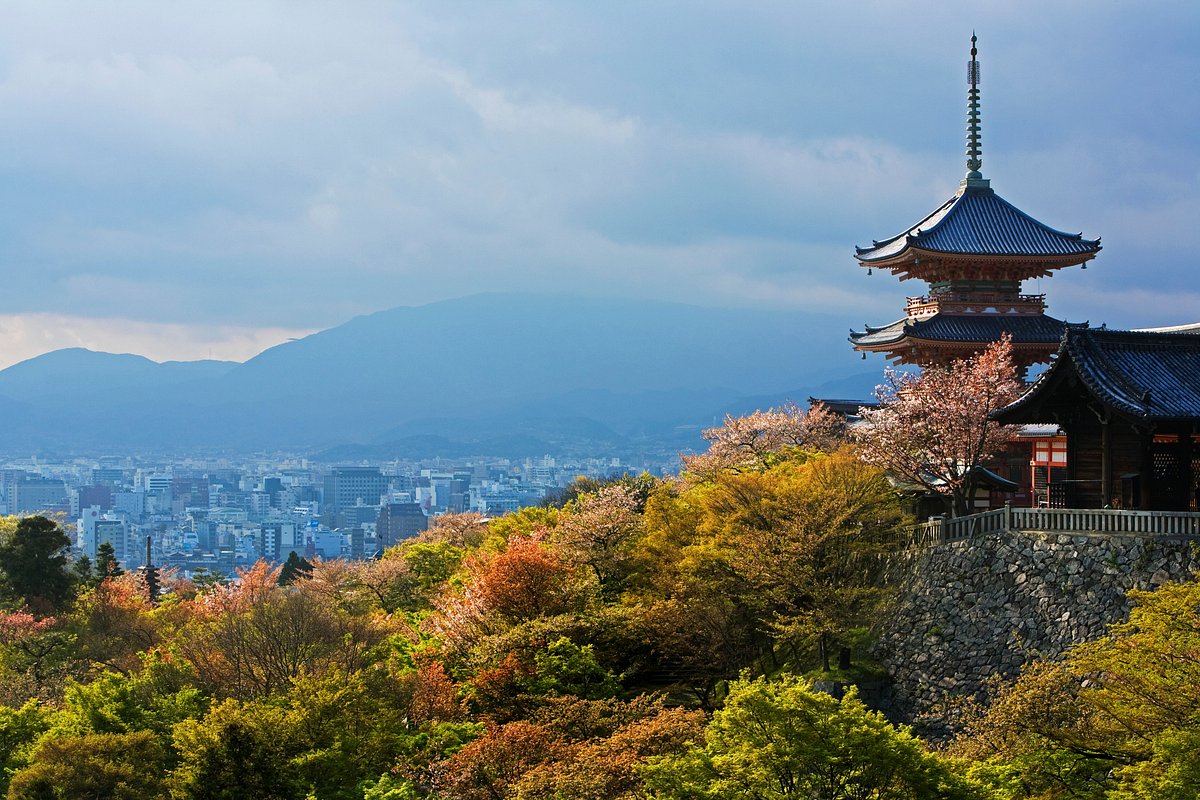

Is Japan Expensive To Visit? Money Saving Tips For Your Next Trip
Written By: Sara Oprasic
Published On: April 25, 2024
Try to find out whether Japan is an expensive country to visit, and you’ll quickly find yourself in a rabbit hole without a definitive answer. There is a lot of conflicting information online about the travel costs in Japan; some swear it’s the priciest country they’ve been to, while others are raving about fantastic $5 meals.
So, is Japan really as expensive as some people say? It’s both a yes and a no. Some things in the country, like transportation, are very expensive, and others are not. The balance is there, and a trip to Japan is possible on any budget.
We have visited Japan several times and have based this article on our experiences. Here’s what you need to know when budgeting for a trip to Japan!
Is It Expensive To Visit Japan?
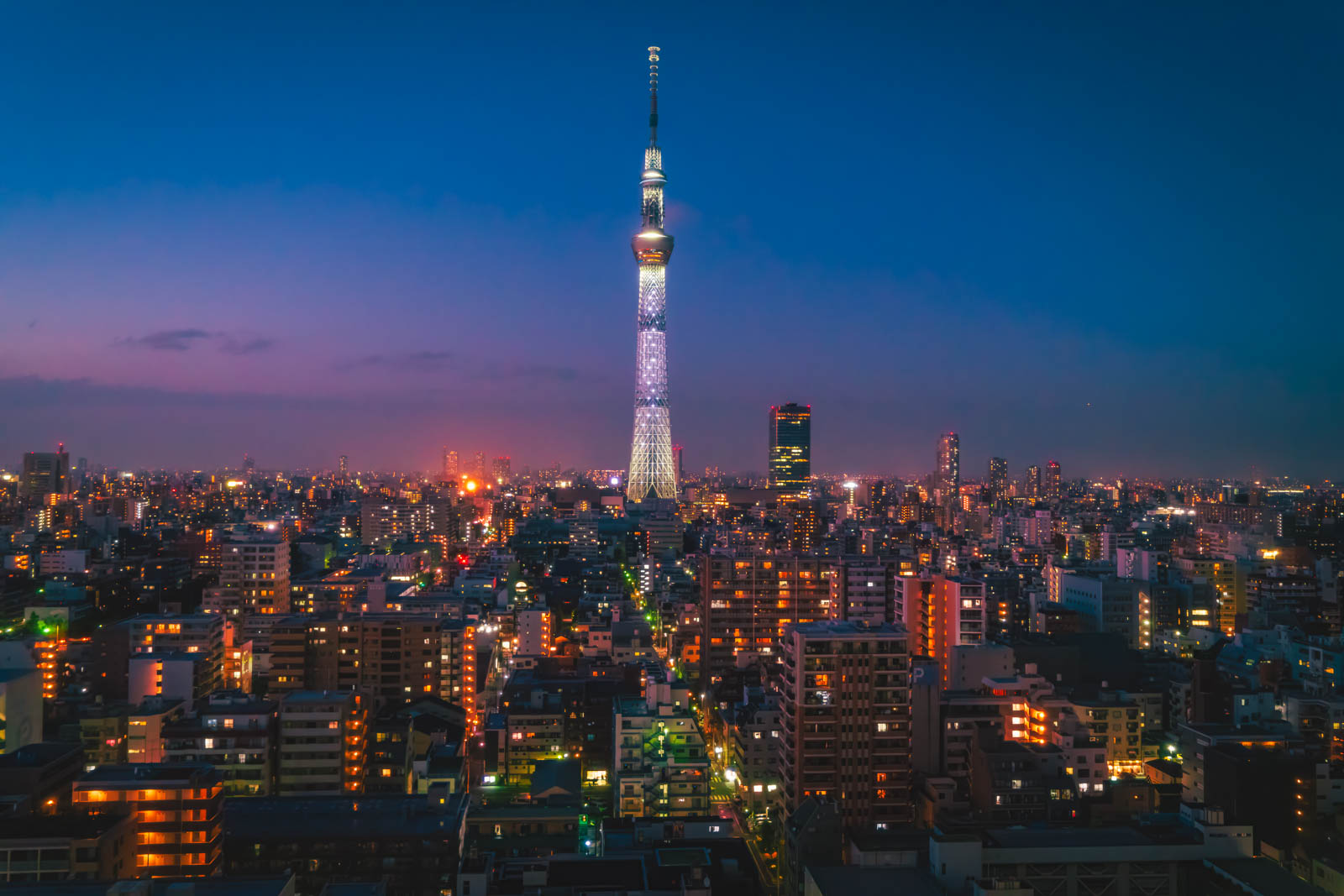
Yes, Dave and Deb have visited Japan a few times, but for me, Japan is a country I’ve dreamed of visiting for years. I’ve planned my perfect itinerary to a T, and I’m just waiting for the right moment in life to take off and spend two weeks in this magnificent country. As I was planning the trip, I realized that Japan isn’t really an expensive country. Sure, it costs a lot of money to get there, especially if you’re from Europe, and the cost of getting around Japan isn’t negligible, but that’s the most expensive thing about it.
Accommodation is available in every price range, and you can spend as little as $16 for a bed in a hostel or splurge $650 for a night in a five-star hotel. Eating out in Japan can be super cheap or wildly expensive, depending on whether you’re munching ramen on the go or splurging for Kobe beef. The country can cater to anyone, and no matter your travel style and personal preferences, you can have a good time there.
The exchange rate is approximately 152 Yen to $1, so don’t be scared to see many zeros on price tags in Japan.
Cost of Accommodation
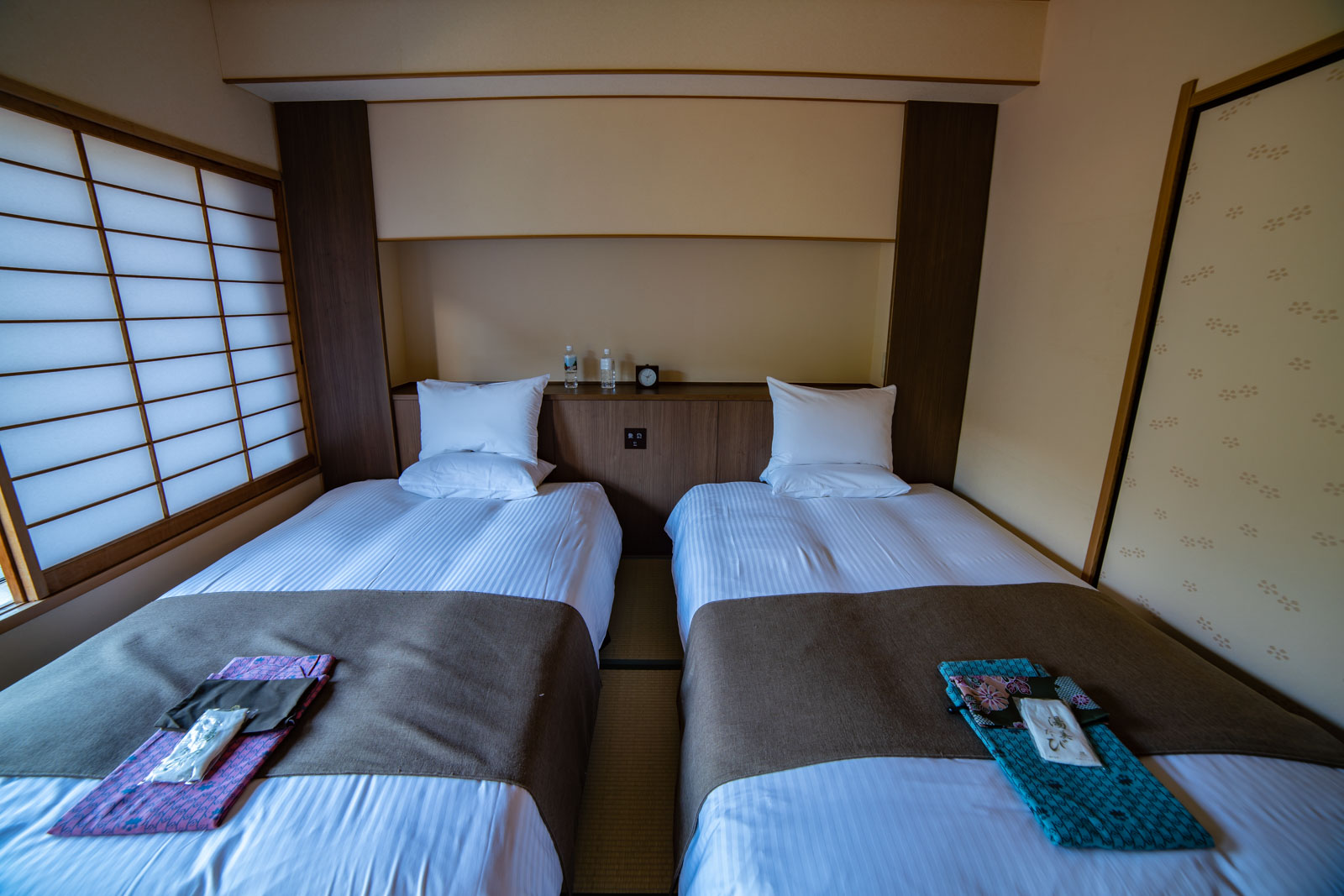
Accommodation in Japan is surprisingly affordable and there are hotels for everyone. Beds range from $16 per night in cheap hostels, up to $4,000 for a room in the best luxury hotels, with a myriad of options in between.
Budget travelers will have plenty of options in Japan, but I have to mention capsule hotels as one of the best options for a cheap stay. The capsule hotel is a Japanese invention and a great alternative to hostel dormitories. Nine Hours Hamamatsucho is a good option for a Tokyo stay.
Travelers with a mid-range budget will be spoiled for choice in Japan. Stay in three-star and four-star hotels in big cities or quaint ryokans in smaller towns , like the Ryokan Inakatei in Kyoto. Most mid-range hotels in Japan include breakfast in the nightly rate and offer private rooms with ensuite bathrooms.
Luxury accommodations in Japan are abundant, ranging from high-end chain hotels, like the Ritz Carlton in Osaka, to fantastic luxury ryokans with private onsens. If you want to be pampered during your trip to Japan, you will have plenty of options for luxury stays.
Keep in mind that you can get much better value for money if you stay outside the city center. A small hotel in Tokyo’s Shibuya can cost as much as a mid-range hotel in Itabashi. Stay outside the city center to get more bang for your buck, especially if you’ve decided to get the JR Pass for unlimited travel on local transportation.
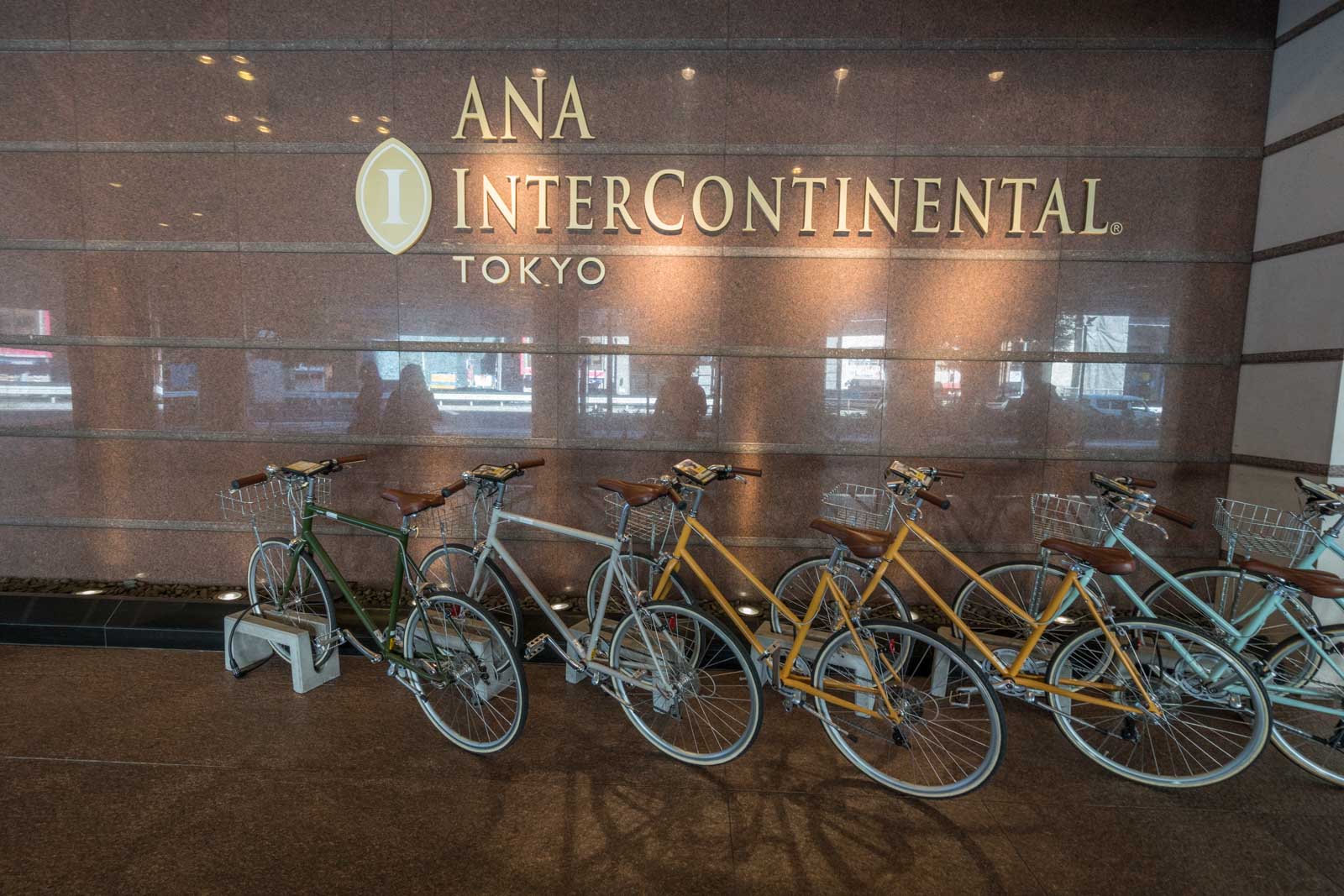
Budget:
Hostels and capsule hotels are abundant in Japan, especially in the bigger cities. The nightly rate ranges from $16 to $50 per night per person for dorm-like rooms, while double rooms with private bathrooms have a nightly rate of $50 to $100. That’s a budget of just $100-300 for a week (6 nights), usually including breakfast.
Mid-Range:
Mid-range options will run you about $50-100 per night per person. Double rooms in four-star hotels in the center of Tokyo go for $120-200 per night, and many of them are business hotels with nice facilities. In Kyoto, you can book one room for two at a five-star hotel for $150-200, and the prices drop even more if you look at accommodations outside the tourist hotspots. That’s a budget of just $300-600, usually on the lower end, for a week trip.
Luxury hotels start at roughly $150 per person for a nightly stay in the cheaper cities. In Tokyo, five-star hotels are pricier, with double rooms starting at $350 per night. That’s the lower end for five-star hotels in the capital, and there are plenty of hotels where you can spend more than $1,000 for just one night.
Cost of Transportation
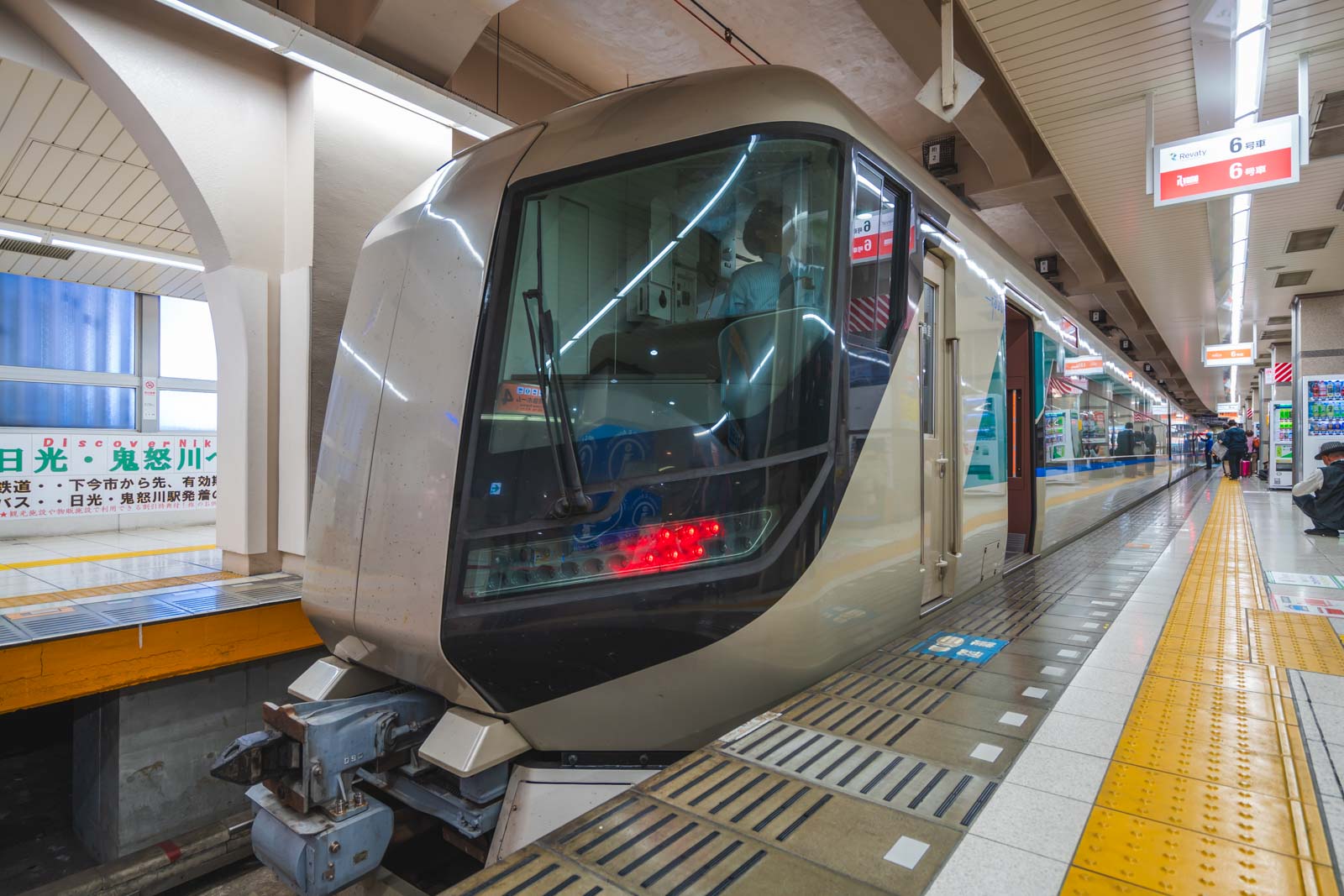
Japan is such a fascinating country that it’s an absolute shame to travel there and stay in only one place. You should visit at least two or three cities when you’re there, and the more destinations you can squeeze into your itinerary, the better.
I reckon everyone knows that trains are the best way of getting around Japan. The high-speed bullet trains that reach speeds of more than 300 km/h have become world famous, and are excellent for quickly traveling from one city to another. The only downside is the cost, as they are very expensive.
I was actually surprised at the cost of high-speed trains in Japan, especially since the inner-city trains and buses are relatively inexpensive. It’s even possible you’ll spend more on transportation than you would on accommodation, which is insane to me. But it would be absolutely worth it because you’d get to discover a good chunk of this fabulous country.
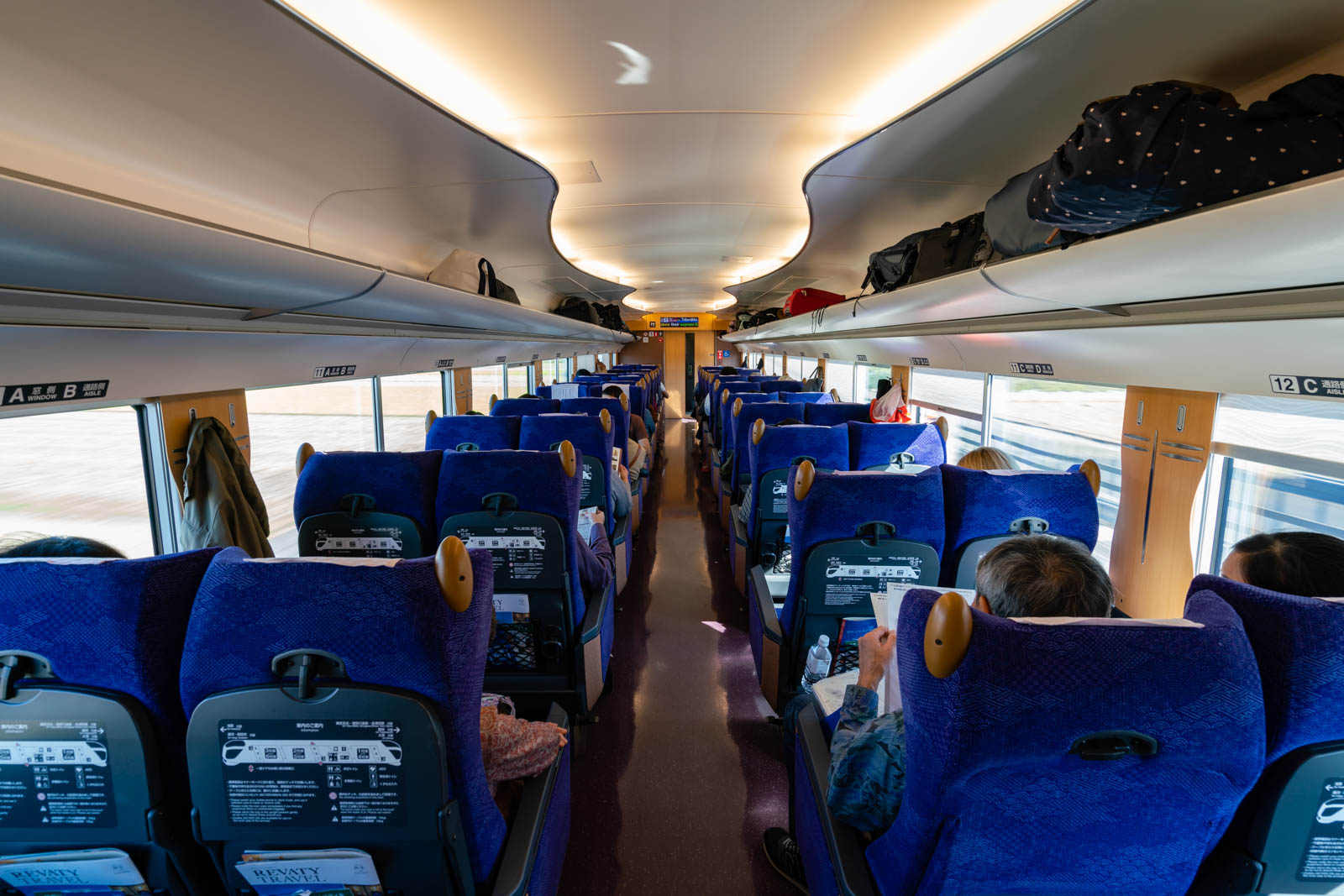
The best way to save money on train travel in Japan is to get the Japan Rail Pass . The starting cost of the pass for adults is:
- 7 days for $341
- 14 days for $554
- 21 days for $692
A children’s pass is cheaper, but there’s also a first-class pass that’s even more expensive. The JR Pass includes local trains, express trains, some bus lines, and shinkansen, and even partially covers the Nozomi and Mizuho lines. It’s a lot of money, and I wasn’t joking when I said that it could be more expensive than accommodation; two weeks in a hostel or a capsule hotel can be booked for as little as $300, which is nearly half of the cost of the two-week pass.
The ride from Tokyo to Kyoto is roughly two and a half hours by regular Shinkansen (not the Nozomi line) and costs around $88 one way. That’s almost $180 just on transportation for a day trip. If you also want to visit Nara, Hiroshima, Kobe, Osaka, and Nagoya, you can see just how much the pass is worth getting.
Cost of Food
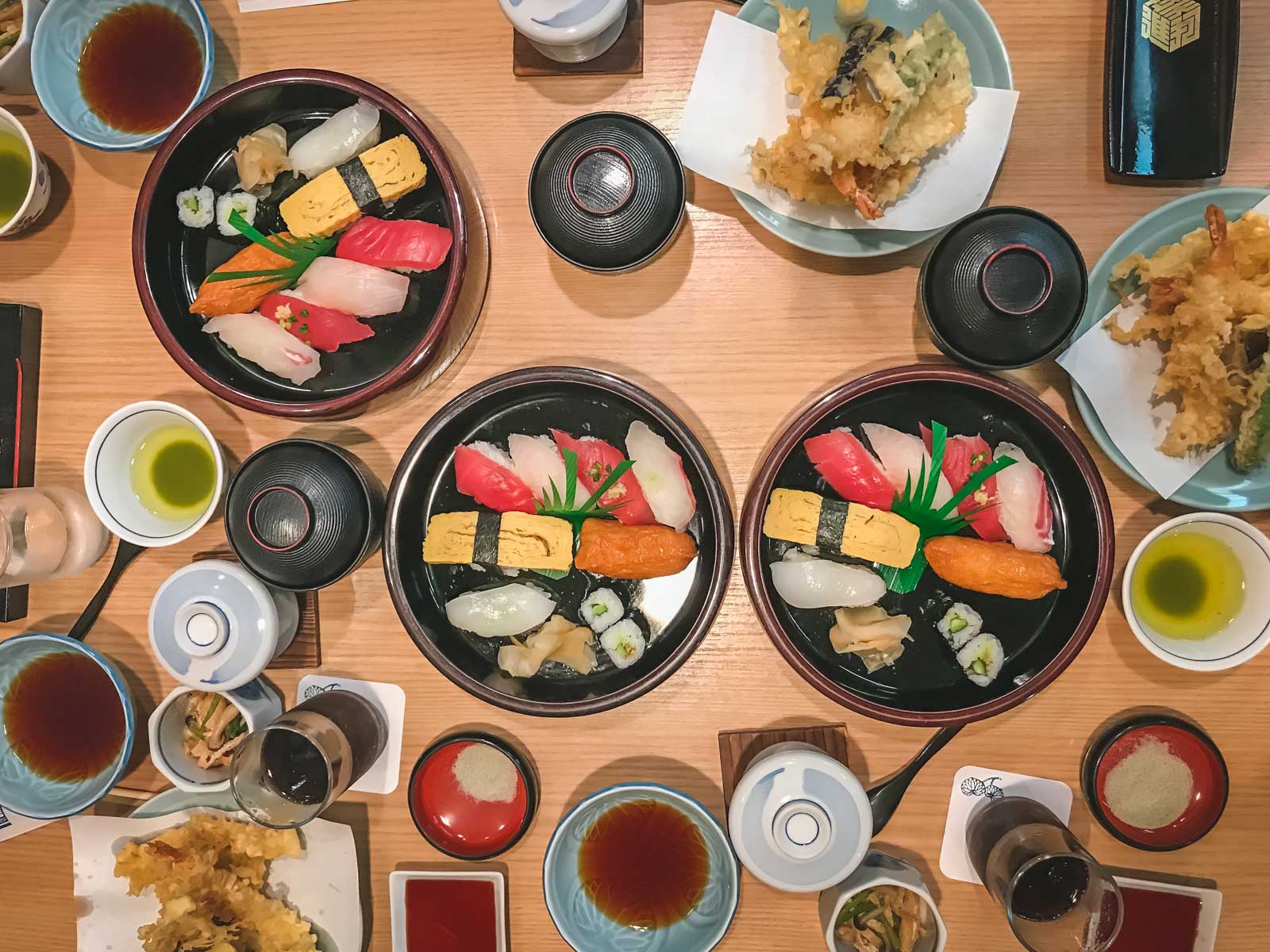
Eating out is generally very cheap in Japan, and you can get by with a $25 budget per day, even if you eat out every single day. There are plenty of street food stalls and family-owned hole-in-the-wall restaurants where you can get a surprisingly good meal for as little as $5, which is mindblowing to me.
On the other end of the spectrum, there are just as many fine-dining establishments where you can splurge for delicious sushi or indulge in Kobe beef. Whether you’re able to spend $15 or $150 per day on food in Japan , you won’t be hungry during your trip.
One important thing to note is that grocery shopping and preparing meals at the accommodation are not really cheap in Japan. The cuisine in Japan is very different from that in Europe and the United States and uses a lot of ingredients that aren’t common elsewhere. If you don’t know how to cook these foods, you’ll be forced to buy imported foods, which are generally quite pricey. So, grocery shopping can sometimes be more expensive than eating out – it’s counterintuitive, I know, but I’d just run with it and eat noodles three times a day.
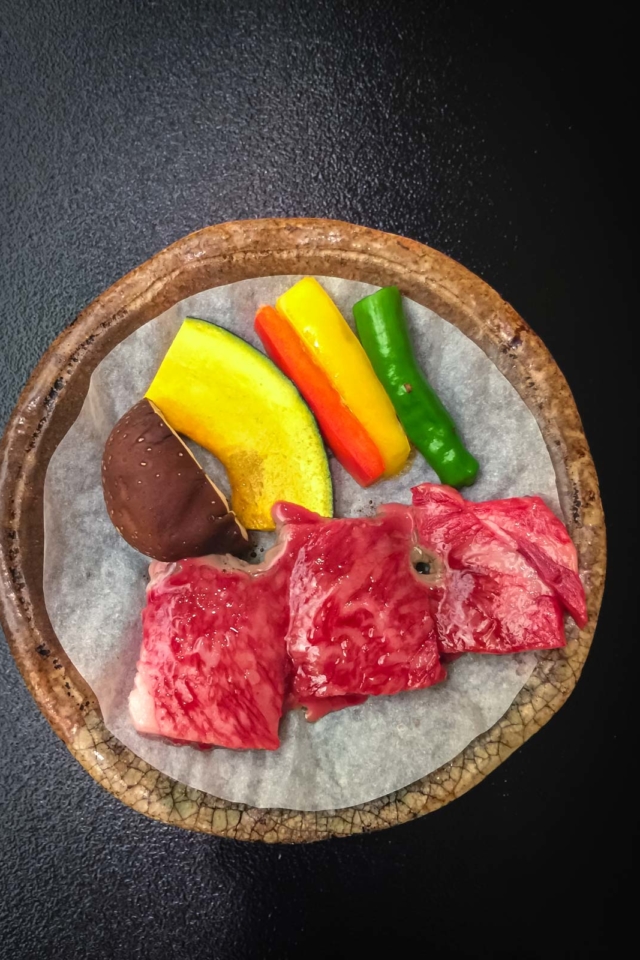
You can eat out every day in Japan, three times a day, with a low budget of $150 per week. I would say that it would be much easier to find cheap but good restaurants in bigger cities like Tokyo because they offer a wider variety of such establishments.
One thing I will note is that it’s best to avoid restaurants that have huge signs in English to attract visitors. These are usually tourist traps that are twice as expensive as the really good local restaurants, but the food won’t be anywhere near as good.
For a mid-range budget, expect to spend up to $20 per meal, not including breakfast, which is cheaper. So, roughly $50 per day for a weekly budget of $350, but keep in mind that you’d likely pay less than $20 for most meals.
Even the high-end restaurants are not that expensive compared to those in the US, as you can eat some of the most decadent food for under $100. You can eat a hearty Galbi Gukbap at one of the best-rated restaurants in Tokyo for just $10. Kobe beef is really the most expensive thing to eat in Japan, and unless you’re having it for breakfast, lunch, and dinner, you can splurge on fancier eateries with a budget of $500 per week.
Is it worth it to splurge on Kobe beef? You might be wondering. I think it is, and I’m absolutely planning to do it when I get the chance. If you like eating steak, there’s nothing like it; it’s a delicacy, and even if you are able to eat it elsewhere in the world, it will never taste as good as it does in Kobe, Japan.
Cost of Activities
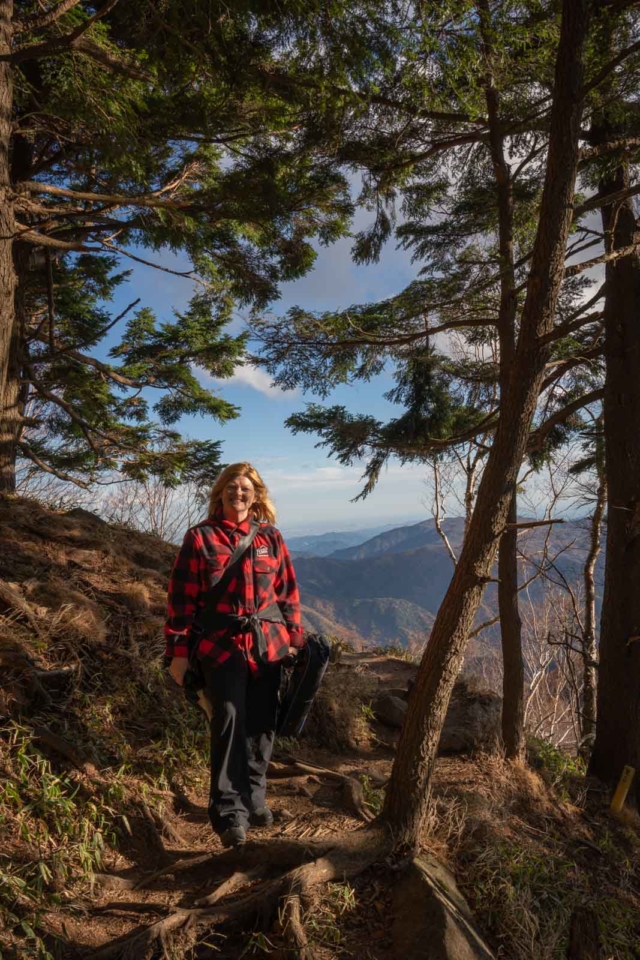
Things to do in Japan are abundant and surprisingly affordable. Just walking around the cities is a wonderful experience and a fun thing to do for free. A guided tour of Tokyo will cost you $60-120, but it’s important to note that you can explore the city on your own if you want. Sit at a cafe and watch people at the Shibuya crossing, visit all the famous Shinto shrines and Buddhist temples, and check out all the quirky shops in Harajuku – none of those things cost a dime.
Even just walking around the train stations in Tokyo will be a new experience that can easily kill an afternoon. They’re enormous, for one, and it will take a while to figure out where you need to go if you want to catch a train. But with countless restaurants and a different convenience store every couple of steps, it’s like exploring a tiny city within a much bigger one.
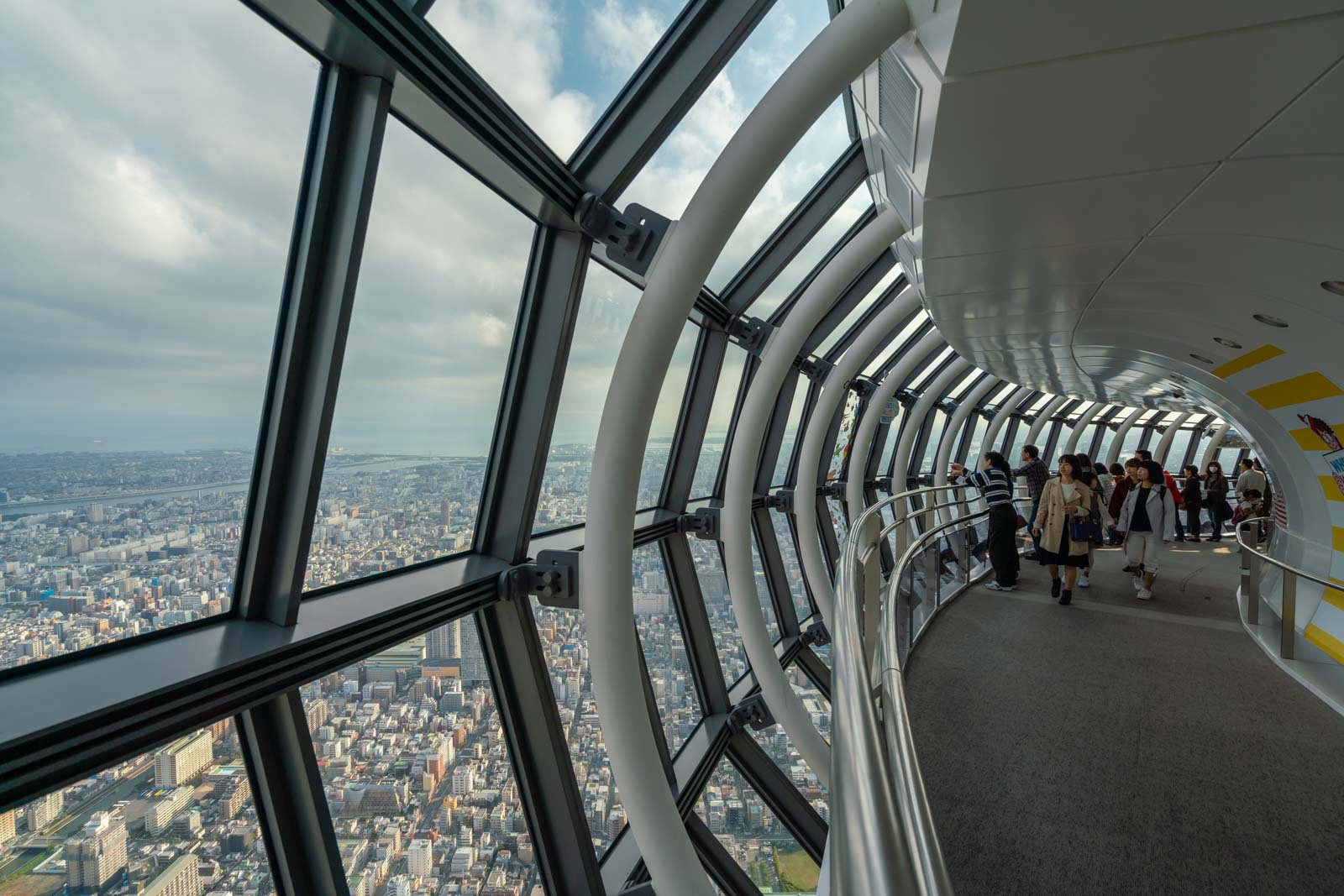
You can climb Mount Fuji for less than $15, and spend an entire day at Disneyland Tokyo or Universal Studios in Osaka for $65 at most. Then head to a train station and board a bullet train to visit Nara to watch the deer roam around the vast public park full of cherry blossom trees.
Head to Hiroshima to visit the Peace Memorial Park and Museum – the park is free to visit, and the entrance fee for the museum is 200 Yen, which is about $1.3. Even the fantastic Nijo Castle costs less than $10 to tour, while the historic Osaka Castle is just $4. You can even tour the massive Toyota museum in Nagoya for just under $7, and you’ll get to see everything from old-timer cars to robots.
For budget travelers, anywhere from $20-40 per day is enough for activities, not including shopping. With so many free things to do throughout Japan, you can do one or two cheap paid activities per day, and stick to free ones for the rest.
Allocated a budget of $40-80, and you’ll be able to do pretty much whatever you want in Japan, plus have some leftover cash for shopping. And if you can spend $80+ per day, it’s plenty of money for sightseeing, tours, and shopping.
A Budget for 1 Week in Japan
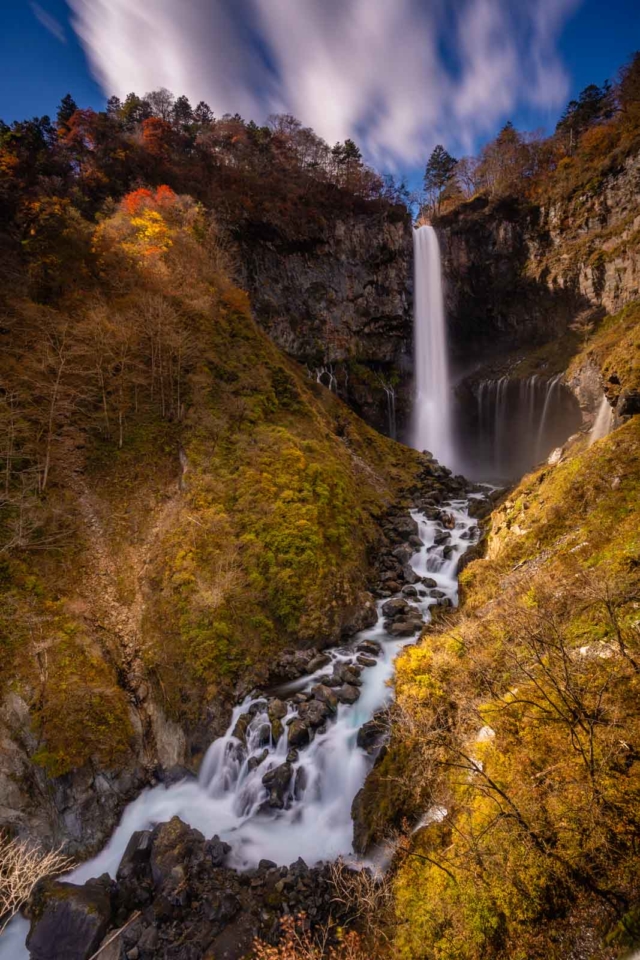
A general budget for one week in Japan is about $2,000, so around $285 per day for flights, accommodation, transportation, and activities. I’ll break it down for you, but I want to note that that’s what a mid-range budget for a week in Japan would be for one person. Also, keep in mind that, if you’re traveling with someone else, you’ll spend less money on accommodation as it’s cheaper to split the cost of a double room.
- $700-1000 for return flights
- $300-600 for mid-range hotels (six nights with breakfast)
- $250 for food ($35 per day)
- $341 for the JRl Pass
On the lower end, that’s just under $1,600, leaving $400 for a week’s worth of fun in Japan. With a budget of roughly $60 per day, you can explore loads – do a couple of cheap attractions in one day, and you’ll have plenty left over the next day for something more expensive like Universal Studios or Disneyland.
On the higher end, that’s around $2,200 without activities, so around $2,500 for a week trip. And that’s if you splurge on good food every day, and stay at a four-star or even five-star hotel in central Tokyo every night.
It’s possible to do Japan in a week for about $1,500. Find a cheap ho(s)tel for about $150 and cut the budget for food to $150, leaving another $150 for activities. You can explore a lot with that amount of money, but you likely won’t be able to visit the most expensive tourist attractions.
Also, you can save some money on flights if you look for deals and travel in the off-season; I’ve seen return flights from London and San Francisco for roughly $600, so it all depends on where you’re traveling from.
A Budget for 2 Weeks in Japan
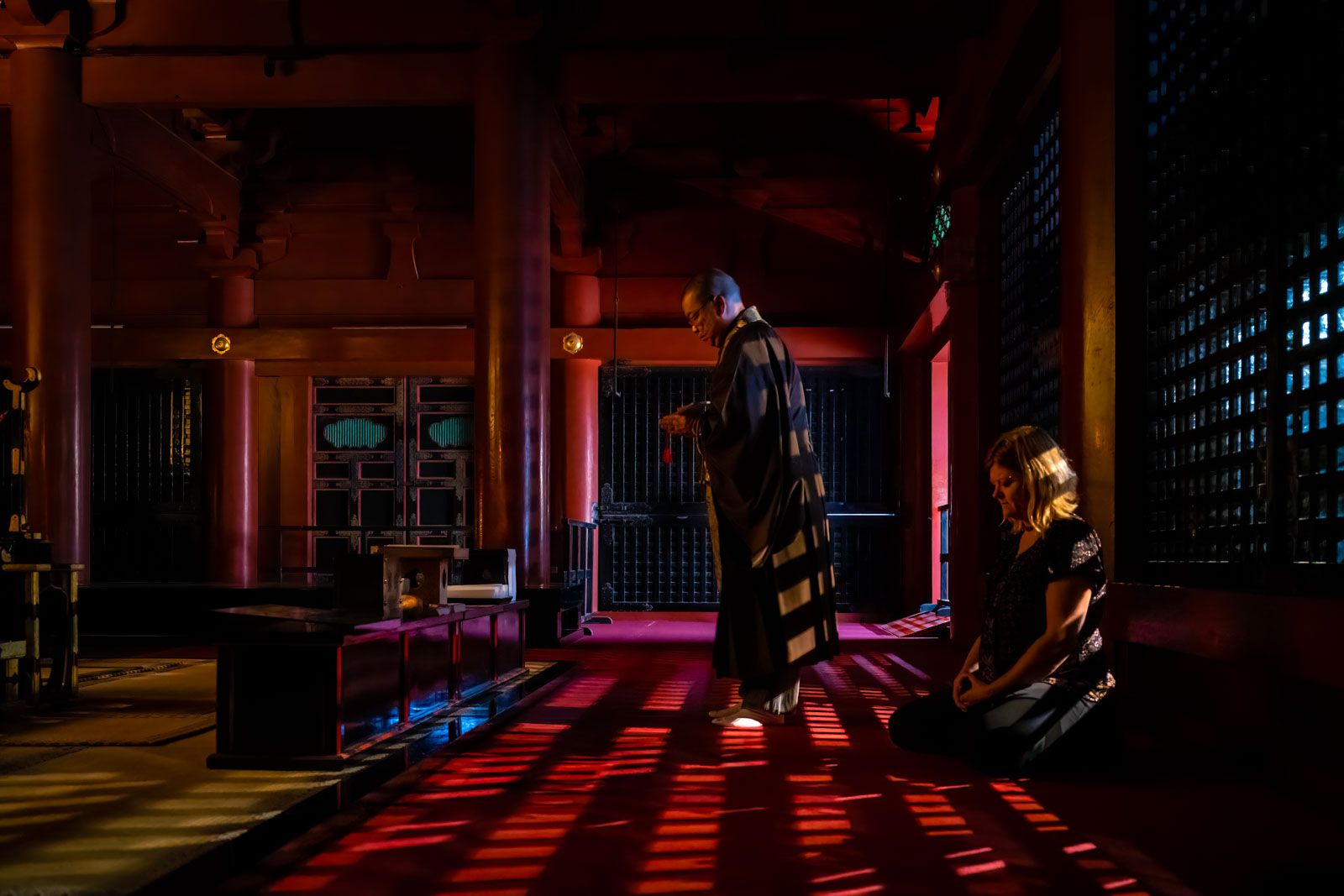
Two weeks in Japan is my dream scenario, and I’ve figured out that it can easily be done for $3,000. That’s roughly $200 per day, including flights, transportation, accommodation, food, activities, and some light shopping!
A Detailed Breakdown:
- $554 for the train pass
- Around $450 for budget hotels in big cities and mid-range hotels in smaller towns (this three-star Tokyo hotel is really cheap)
- Roughly $750 for a round-trip flight from Rome to Tokyo
- $350 for food, which is a budget of $25 per day (breakfast is included in the hotel stay)
That leaves $900 for shopping and sightseeing activities, which is $65 daily. That’s plenty of money to have heaps of fun in Japan; it’s the exact amount you need for the most expensive ticket to Disneyland Tokyo, which will keep you busy the entire day. Or enough money to spend an afternoon in an onsen, explore a museum, and buy a few souvenirs.
That’s my take on a budget version of two weeks in Japan. If you can find cheaper flights and you don’t mind staying in hostels with shared bathrooms, you can save about $150 on accommodation and cut the entertainment budget in half. Overall, it is possible to do two weeks in Japan for roughly $2,500, but you’d have to watch every cent you spend.
Anywhere from $3,000 to 5,000 per person is a mid-range budget with better hotels and meals at fancier restaurants, while a budget over $5,000 for two weeks ($350+ per day) per person is enough for a luxury trip to Japan. Of course, you could book a hotel that’s $1,000 per night and easily spend more than $15,000 on the entire trip, but it’s worth noting that you can experience some luxury in Japan for a lot less.
Is Japan Expensive? FAQs
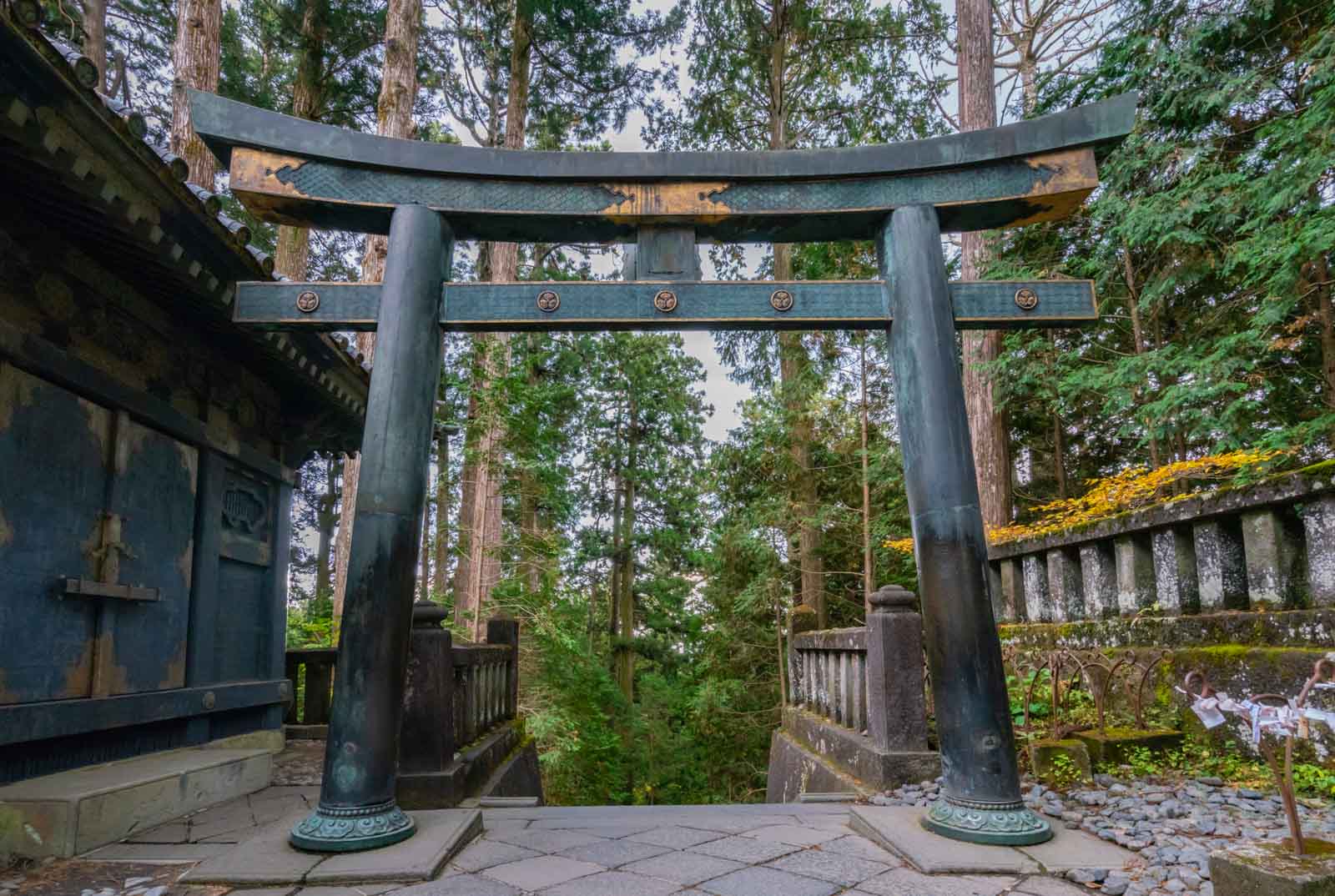
Is Japan An Expensive Country To Visit?
Japan has a reputation for being expensive to visit. But, in truth, the short answer is no; Japan is not really an expensive country to visit. It’s expensive to get there, and local transportation is pricey, but everything else is very affordable.
How Much Would A Meal Cost In Japan?
The average cost for a meal in Japan is $10-15. You can find cheap street food for as low as $5 as easily as you can spend $200+ for a premium cut of Kobe beef.
Is Japan Expensive To Americans?
The cost of living in Japan is significantly lower than in the US, so It is generally not expensive for Americans. Eating out and activities are also significantly cheaper in Japan.
Is Food Cheaper in Japan Than the USA?
Yes, food is cheaper in Japan than in the US. There are some exceptions, but it is generally much more affordable to eat out in Japan than in the United States.
Plan Your Next Trip To Japan with These Helpful Articles
- 22 Best Things To Do In Osaka, Japan
The 20 Best Things to Do in Kyoto, Japan
9 Amazing Day Trips from Tokyo, Japan
- The Best Things to Do in Tokyo, Japan
- 14 Best Cities in Japan To Visit This Year
Travel Planning Resources
Looking to book your next trip? Why not use these resources that are tried and tested by yours truly.
Flights: Start planning your trip by finding the best flight deals on Skyscanner
Book your Hotel: Find the best prices on hotels with these two providers. If you are located in Europe use Booking.com and if you are anywhere else use TripAdvisor
Find Apartment Rentals: You will find the cheapest prices on apartment rentals with VRBO .
Travel Insurance: Don't leave home without it. Here is what we recommend:
- Allianz - Occasional Travelers.
- Medjet - Global air medical transport and travel security.
Need more help planning your trip? Make sure to check out our Resources Page where we highlight all the great companies that we trust when we are traveling.
You May Also Like
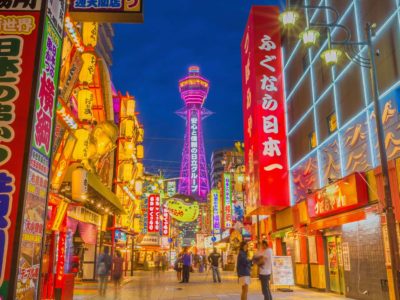
22 Best Things To Do In Osaka, Japan in 2024
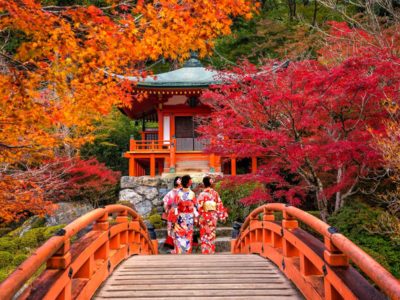
About Sara Oprasic
Sara loves writing about travel as much as she loves traveling. In her spare time, she enjoys reading, spending time with her cats, and crossing items off her bucket list. She’s yet to cross off Japan, Tromsø, and Hogsmeade. You can see what she’s up to on her Instagram Page
Join thousands of others who get our monthly updates!
Leave a comment cancel reply.
Save my name, email, and website in this browser for the next time I comment.
1 thought on “Is Japan Expensive To Visit? Money Saving Tips For Your Next Trip”
Absolutely, Japan offers a unique travel experience but can be costly. Here are some invaluable tips to save money on your next trip
We use cookies on this site to enhance your user experience. If you continue to browse you accept the use of cookies on our site. See our Cookie Policy for more information.
- Media & PR
- Meetings & Events
- School Groups
- Travel Trade
- Select Language 简体中文 繁體中文(香港) 繁體中文(臺灣) India (English) Bahasa Indonesia 한국어 ภาษาไทย Tiếng Việt Singapore (English) Philippines (English) Malaysia (English) Australia/New Zealand (English) Français Deutsch Italiano Español United Kingdom (English) Nordic countries(English) Canada (English) Canada (Français) United States (English) Mexico (español) Português العربية Japan(日本語) Global (English)
- India (English)
- Bahasa Indonesia
- Singapore (English)
- Philippines (English)
- Malaysia (English)
- Australia/New Zealand (English)
- United Kingdom (English)
- Nordic countries(English)
- Canada (English)
- Canada (Français)
- United States (English)
- Mexico (español)
- Global (English)
- Fujiyoshida
- Shimonoseki
- Ishigaki Island
- Miyako Island
- Kerama Island
- Tokyo Island
- Koka & Shigaraki
- Hida Takayama
- Ginza, Nihonbashi
- Beppu & Yufuin (Onsen)
- Ginzan Onsen
- Nagasaki Islands

- Kumano Kodo
- Shikoku Karst
- Amami Oshima
- Hachimantai
- Omihachiman
- Aizuwakamatsu

- Diving in Japan
- Skiing in Japan
- Seasonal Flowers in Japan
- Sustainable Outdoors
- Off the Beaten Track in Japan
- Scenic Spots
- World Heritage
- Home Stays & Farm Stays

- Japanese Gardens
- Japanese Crafts
- Temple Stays
- Heritage Stays
- Festivals and Events
- Theater in Japan
- Japanese Tea Ceremony
- Cultural Experiences in Japan
- Culture in Japan

- Local Cuisine Eastern Japan
- Local Cuisine Western Japan
- Local Street Food
- Japan's Local Ekiben
- Japanese Whisky
- Vegetarian and Vegan Guide
- Sushi in Japan Guide
- Japanese Sake Breweries

- Art Museums
- Architecture
- Performing Arts
- Art Festivals
- Japanese Anime and Comics
- Japanese Ceramics
- Local Crafts

- Scenic Night Views
- Natural Wonders
- Theme Parks
- Samurai & Ninja
- Iconic Architecture

- Wellness Travel in Japan
- Japanese Ryokan Guide
- A Guide to Stargazing in Japan
- Relaxation in Japan
- Forest Bathing (Shinrin-yoku)

- Experiences in Japan
- Enjoy my Japan
- National Parks
- Japan's Local Treasures
- Japan Heritage
- Snow Like No Other
- Wonder Around Japan

Visa Information
- Getting to Japan
Airport Access
- COVID-19 Practical Information
- Anime Tourism
- Countryside Stays
- Sustainable Travel
- Accommodation
- Sample Itineraries
- Travel Agents
- Deals and Tours

- Traveling by Rail
- How to Travel by Train and Bus
- JR Rail Passes
- Train Passes and Discounted Tickets
- Scenic Railways
- Renting a Car
- Yokohama Cruise Port Access
- Travel Brochures
- Useful Apps
- Accommodation Types
- Online Reservation Sites
- Eco-friendly Accommodation
- Luxury Accommodations
- Traveling With a Disability
- Hands-free Travel
- How to Book a Certified Tour Guide
- Volunteer Guides
- Tourist Information Center

- Japanese Manners
- Sustainable Travel in Japan
- Spring in Japan
- Summer in Japan
- Autumn in Japan
- Winter in Japan
- Seasonal Attractions
- Monthly Events Calendar
- Cherry Blossom Forecast
- Autumn Leaves Forecast

- Japan Visitor Hotline
- Travel Insurance in Japan
- Japan Safe Travel Information
- Accessibility in Japan
- Vegetarian Guide
- Muslim Travelers
- Safety Tips

- All News & Blog
- Travellers Blog
- Guides to Japan
- Stories of Japan
- The Other Side of Japan
- Media Releases
- JAPAN Monthly Web Magazine

My Favorites
${v.desc | trunc(25)}
Planning a Trip to Japan?
Share your travel photos with us by hashtagging your images with #visitjapanjp
Travel Japan - The Official Japan Guide
STORIES OF JAPAN
There’s always something to discover
Autumn Leaves Forecast 2023
Discover Japan during the beautiful season of autumn leaves
Go Beyond Japan’s Major Cities: Hokuriku Shinkansen Extension in 2024
Sakura and Beyond: Famous Japanese Flowers to Check Out in 2024
THE LUXURY SIDE OF JAPAN
Unique luxury experiences
ENJOY MY JAPAN
Discover the diversity of Japan
An essential guide to this culinary hot spot.
SUSTAINABLE TRAVEL EXPERIENCES IN JAPAN
JAPAN ADVENTURE
Journey through the traditions and natural landscapes of Japan
JAPAN'S LOCAL TREASURES
Showcasing the beauty of local Japan
TOHOKU COLOURS
Experience the seasonal and cultural beauty of northeastern Japan
VIRTUAL BACKGROUNDS
Bring Japan to your video calls
Explore the National Parks of Japan
Through 360° VR Videos
Important notice.

Suggested Stories & Guides
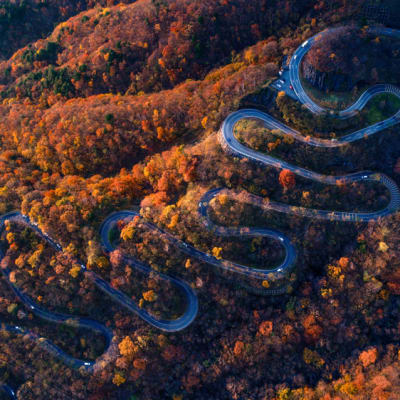
Travel Highlights
Popular places.
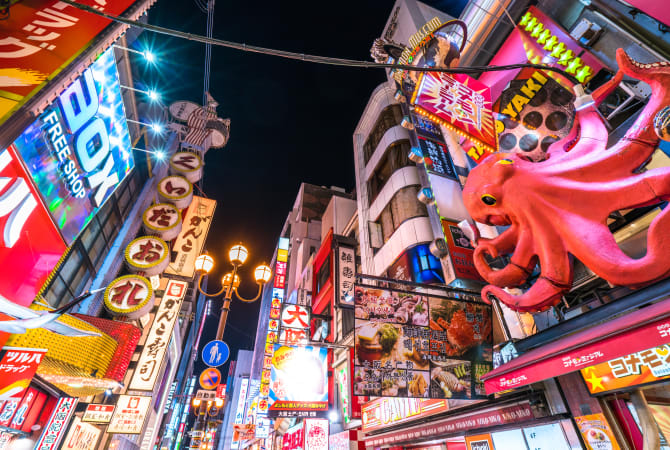
Explore by Interest
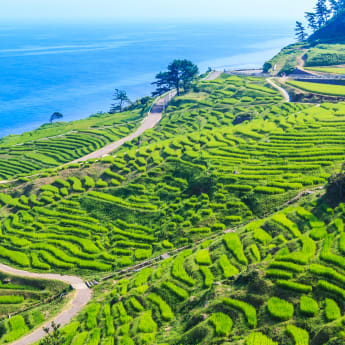
For First-Time Visitors
- Wi-Fi & Connectivity
- Weather & Geography
- IC Travel Cards
Where to Stay
- Luxury Stay
- Haneda Airport
- Narita Airport
- Osaka (KIX)
- Fukuoka Airport
Getting Around
- Shinkansen (Bullet Train)
- Luggage & Storage
Suggested Walks & Tours
- Tokyo 48 Hours
- Golden Route
- 2 Weeks in Japan
- Tour & Activities
Brochure Download
- Tours and Activities
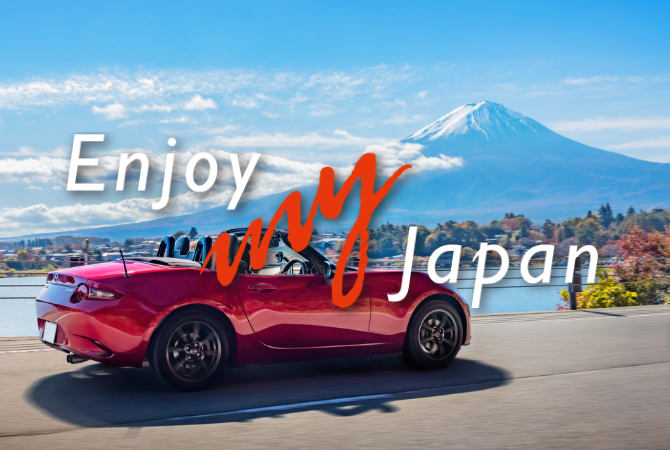
Japanese Government Information
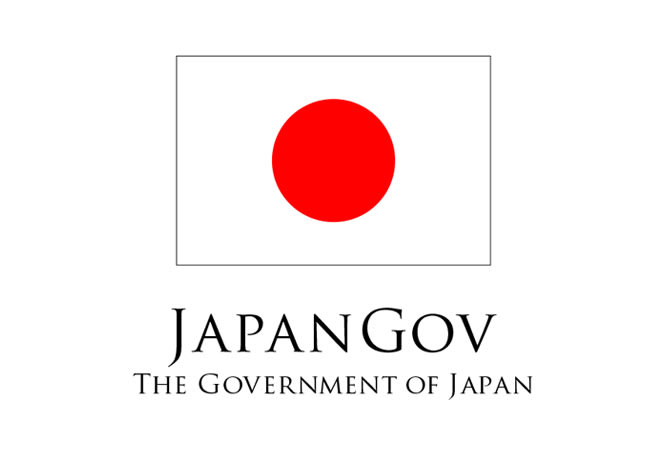
- JNTO Sydney
Please Choose Your Language
Browse the JNTO site in one of multiple languages

IMAGES
VIDEO
COMMENTS
Two times of year I would avoid for a vacation to Japan are: Golden Week in early May - In 2024, Golden Week is from 27 April - 6 May. This is a series of national holidays so many Japanese travel domestically, trains and hotels book up, and popular spots will be extra crowded. New Year - Late December to early January.
The official site of Japan National Tourism Organization is your ultimate Japan guide with tourist information for Tokyo, Kyoto, Osaka, Hiroshima, Hokkaido and other top Japan holiday destinations. We offer travel information to make your Japan travel more comfortable and enjoyable.
Smooth your way with a little forward planning. It is easy to feel a little overwhelmed and disoriented when you visit Japan for the first time, so find out the basics before you fly and get acquainted with the country through our helping you plan guide. Learn a little more about Japan's customs, culture and Wi-Fi connectivity, as well as its ...
This information-packed Japan trip planner has the answers to all your questions. Find out the best places to visit, which Japanese foods to try, and how to ride the bullet trains. All the research is done for you to assist in planning a trip to Japan. If you have been dreaming of traveling to Japan and want to get serious about planning your ...
With the Japan itinerary planner by Triptile™. Embark on a journey to Japan, where the seamless integration of nature and ancient traditions creates an unparalleled experience for every traveler. From the moment you set foot in this captivating corner of Asia, you'll be entranced by its allure, finding it difficult to leave.
Plan Your Trip. Traveling to Japan. First-Time Visitor Info. Visa Information; Getting to Japan; Airport Access; ... Planning a Trip to Japan? Share your travel photos with us by hashtagging your images with #visitjapanjp. Travel Japan - The Official Japan Guide. None U.S.-JAPAN TOURISM YEAR 2024.
There's a lot to see and do. That's why I put together a "first-timers" Japan travel itinerary, built on my 20+ years of traveling to and from Japan. This sample trip is for people heading to Japan for 1 to 2 weeks (which seems like the standard visit time for most people). Of course, there are so many things to see in Japan besides those ...
Within Japan's most popular tourist region, Kanto, there is no shortage of incredible places to visit. Below are some of the more popular destinations to help you start planning your sightseeing trip, all within easy reach of Tokyo:-Sensoji Temple As Tokyo's oldest temple, Sensoji is a must-see for any visitor to Japan. Its towering pagoda ...
Taxes. Living Costs. Garbage Disposal. Banking. Postal Services. See All. Essential and practical information for traveling in Japan - plan your trip to Japan.
With your trusty eSim or Pocket Wifi, you can effortlessly plan your trip without worrying about getting lost. Whether your itinerary includes Tokyo , Japan's capital, or a trip to Nagoya , the country's fourth-largest city, don't forget to have your eSim or carry around your Pocket Wifi for a fuss-free travel experience.
THE ONLY JAPAN GUIDE YOU NEED. Planning a trip to Japan is overwhelming. Our guide is your companion for stress-free travel planning in Japan. By simplifying trip planning and offering valuable local insights, we help you make informed decisions and fully immerse yourself in the beauty and culture of Japan. Your stress-free guide to discovering ...
The Japan Rail Pass is a must-have for all visitors planning to travel around Japan. The JR Pass is multi-use, discounted ticket that allows unlimited access to trains operated by Japan Rail National, as well as JR bus services, ferry services, and airport transfers.
Here are the 5 best things to do in Japan for your next trip 🇯🇵🩷. 1 - Sensoji Temple. To really tap into the culture of Tokyo, visit Senso-Ji Temple, Tokyo's oldest temple, dating back to the 7th century. 2 - Mount Fuji.
You need to create an account, enter your passport and flight details, and add proof of vaccination (or a recent test certificate). At the time of writing Japan requires visitors to have at least 3 vaccinations or a test certificate from a test taken a maximum of 72 hours before boarding the flight.
The most popular way to see Japan, this itinerary perfectly balances tourist hot spots like Tokyo and Kyoto with exciting secondary destinations, from the old trading towns of the Japanese Alps, to bubbling hot springs at the base of Mt. Fuji. Plan Your Two Weeks in Japan. A Taste of Japan.
Plan Your Trip: Itinerary Ideas. Great Traverse of Japan; Best of Japan in 14 days; Best of Kanto; Best of Kansai; Best of Hokkaido in Summer; ... Survey What type of train tickets are you planning to mainly use on your next trip to Japan? A nationwide Japan Rail Pass. A regional rail pass. Regular tickets / IC card. I am not planning to use ...
This guide for planning a trip to Japan will cover: How to prepare for a trip to Japan in 2024. 20+ crucial Japan travel tips to know before you go. Hire a pocket wifi or buy a 4G SIM card for your phone when visiting Japan. Don't blindly buy a JR Pass thinking all tourists need it. Take time to read these Japan travel guide books.
This 2 weeks in Japan itinerary will cover: How to explore Japan on your own with confidence; Quick links to useful resources; Complete 2 Weeks in Japan itinerary, day-by day guide including costs, things to do, where to stay, where to eat & getting around for:. DAYS 1-5: Tokyo (including day trip to Mt Fuji) DAYS 6-10: Kyoto DAYS 10-12: Hiroshima (including day trip to Miyajima)
Plan on the go with our free travel app. With Wanderlog's mobile travel planner on Android and iOS, access and edit your trips wherever you go — even while offline. Keep your places to visit, flight/hotel reservations, and day-by-day itineraries for your trip to Japan in our web and mobile app vacation planner.
Trip Planner - Japan. Create your perfect trip to Kyoto, Japan. Easily plan your trip based on your preferences, budget, and style. Plan your trip with RoutePerfect's AI and optimize it by using RoutePerfect's crowdsourced database, based on proven and enjoyable, well-crafted itineraries of thousands of travelers.
We suggest you take at least a week for your first trip to see a spectrum of the highlights in the top two cities. 3 days in Tokyo. 3 days in Kyoto. 1 day in Osaka. To discover more of Japan and popular destinations, like picturesque Hakone and Takayama, you will need two or three more days.
Our Thematic Guides. Japan Experience creates thematic files for you that address in depth a theme, a place or an activity in Japan. Japanese winter, the Tohoku region, hiking trails but also practical guides on the budget needed for a trip to Japan, tips and good plans to organize your stay and many more! Each month, Japan Experience invites ...
Even so, planning a trip to Japan sometimes felt like a Herculean task. There are so many moving parts, rules and barriers that it was easy to be overwhelmed at times. After putting together what ...
To Kyoto station; 75 mins by JR Haruka train, 3570 yen or 85 mins by bus, 2550 yen. Osaka station: 65 mins by JR Rapid train, 1190 yen or Airport Limousine Bus, 1550 yen. Shin-Osaka station: 50 mins by JR Haruka train, 2850 yen. Tennoji station : 33mins by JR Haruka train, 2230 yen. Namba station: 35 mins by Nankai Railways "Rapi-t" train ...
We know there is much more to do in Japan, hopefully in the next one. Day 1 - Arrive Osaka (that will be our base) Day 2 - City Tour Osaka - as we would have arrived previously after 14 hrs of travel. Day 3 - Day trip Kyoto. Day 4 - Day Trip Nara. Day 5 - Day Trip Hiroshima. Day 6 - City Tour Osaka - leave after 4 pm to Disney (stay the night ...
Plan Your Next Trip To Japan with These Helpful Articles. 22 Best Things To Do In Osaka, Japan ; The 20 Best Things to Do in Kyoto, Japan; 9 Amazing Day Trips from Tokyo, Japan; ... Flights: Start planning your trip by finding the best flight deals on Skyscanner. Book your Hotel: ...
Plan Your Trip. Traveling to Japan. First-Time Visitor Info. Visa Information; Getting to Japan; Airport Access; COVID-19 Practical Information; ... Planning a Trip to Japan? Share your travel photos with us by hashtagging your images with #visitjapanjp. Travel Japan - The Official Japan Guide. None